Superyacht Glossary: Terms You Will Need To Know
Are you starting a yachting career but not from a boating background? Then, it’s time to get across the superyacht jargon to feel well-versed on your first boat or day working experience. Here’s a glossary of terms about your new workplace.
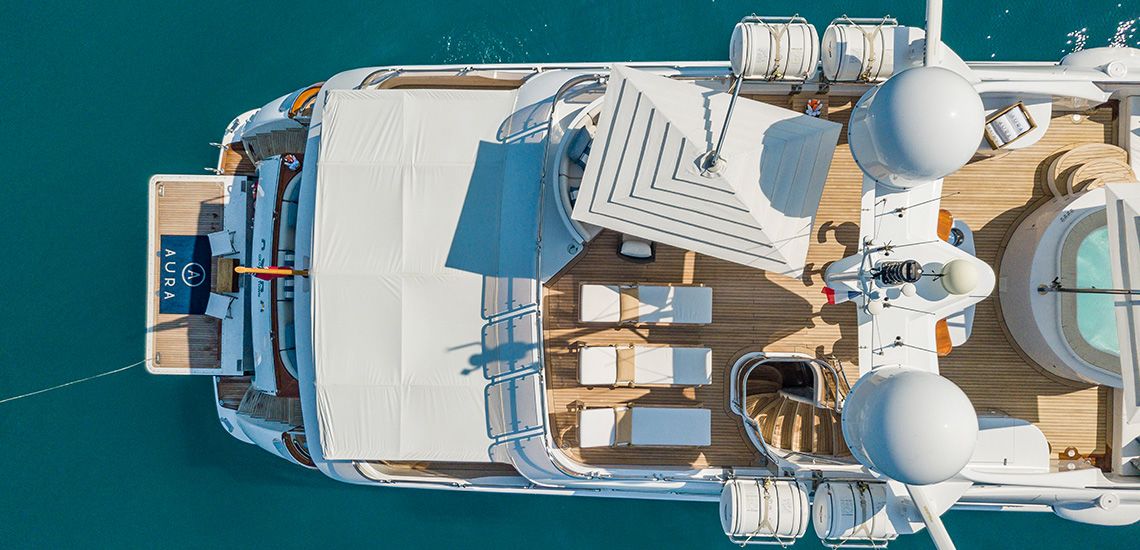

The Basics: Navigating Your Way Around the Boat
Bow : Front of the boat. (Pointy end.)
Stern : Back of the boat. (Blunt bit.)
Foredeck . Forward deck.
Aft deck : Rear deck.
Midships : The halfway point between bow and stern. Also, amidships.
Port : Left-hand side of the boat (when facing the bow).
Starboard : Right-hand side of the boat (when facing the bow).
Quarter : A yacht can be divided into quarters, and this can help a captain direct their crew where to go on deck. Port Bow and Starboard Bow cover the two areas from midships up to the bow. Port Quarter and Starboard Quarter cover the areas running aft from midships to the stern.
Beam : Width of the yacht at its widest point.
Draft/draught : Depth of the yacht under the waterline.
Hull : The ’base’ of the boat. Everything from the main decking down.
Superstructure : Everything built on top of the hull. (Upper decks)
Bridge/Wheelhouse : Where the captain drives the boat. An interior space on an upper deck with good visibility across the front of the yacht to sea.
Flybridge : A secondary exterior helm station where the captain drives the boat from the yacht’s top deck. The flybridge is outdoors and offers almost 360-degree visibility.
Cockpit : An area on deck where the captain drives the boat (sailboat). Also, often a seating/dining area.
Helm : The yacht wheel and steering system. One can ’stand at the helm’, ’go to the helm’ or even ’helm the boat’.
Galley : Where the magic happens. (Never call it a kitchen!)
Forepeak : A compartment/large locker or cabin located up in the nose of the boat, under the foredeck. On small sailing boats, the crew may live in the forepeak cabin.
Swim platform : A platform at the back of the boat, off the aft deck, for swimming and launching the water toys.
Transom : The vertical span across the stern where the boat’s name is written.
Passerelle : The gangplank! There’s nothing like walking across a superyacht passerelle for the first time. (Remember, never step on the passerelle with your shoes on).
Lazarette : Storage in the boat’s stern, under the aft deck area, is generally where the water toys are stored.
Main Salon : The formal lounge space on the main deck. Adjoins typically the formal dining room, often as an open-plan space.
Sky Lounge : Upper salon. A comfortable lounge space, generally with a large-screen TV, card/occasional tables and possibly a piano.
Sundeck : Top deck of a motor yacht, where you’ll find sunbeds, BBQ, a bar, a dining table, and a Jacuzzi.
Stateroom : Cabin. Across the industry, superyacht cabins are increasingly called staterooms or suites on larger yachts. However, in practice, crew generally continue to call them cabins —or they cut off the word altogether, instead saying ’clean the master/VIP/starboard forward’ etc.
Head and Day head : In sailor-speak, a ’head’ is a boat toilet. On superyachts, it’s relatively uncommon to call a bathroom a head, except in one crucial leftover case: the day head. This small toilet/washroom is one that guests will use when they want to avoid going back to their cabin to use the bathroom. On superyachts, they are located on the main and upper decks and occasionally on the sundeck.
Note that you’ll still hear some crew say, ’I’m going to use the head’ instead of ’I’m going to the toilet/bathroom’ because the word ’head’ is much more common on sailboats than motor yachts.
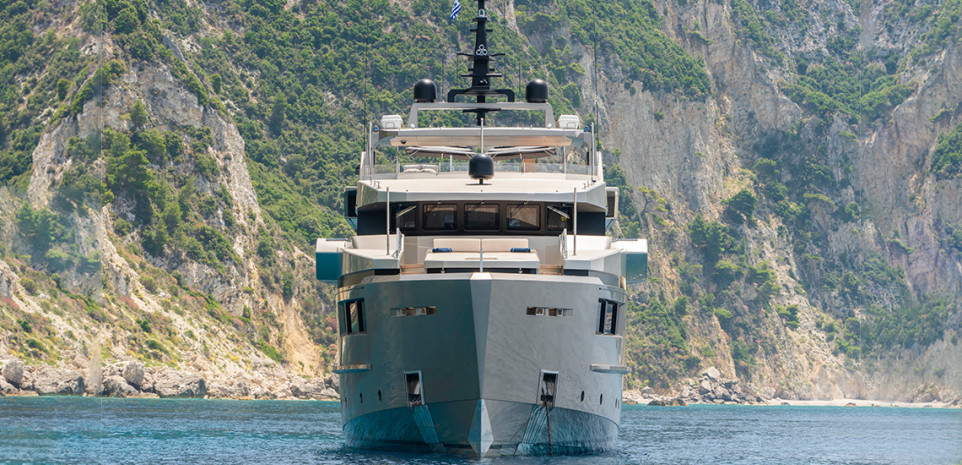
Lines and Equipment
Bow Line/Aft Line : The rope tied from the bow/aft to the dock stops the vessel from moving when in its berth.
Spring Line : A line tied diagonally from the bow or stern to a point on the dock to stop the yacht from moving forwards or backwards.
Cleat : A piece of stainless steel fixed to the deck or capping rails that lines are tied to.
Bulwark : The sides of a motor yacht that rise up from the deck. (The outside bit that stops you from falling off).
Capping rail : The rail on top of the bulwark, which is usually varnished to a high gloss.
Fender : The strong rubber ’balloons’ suspended over the sides of the yacht to protect the paintwork when the yacht is docked or manoeuvring in or out of berths.
Stabiliser : Underwater systems to reduce the yacht rolling at sea. Zero-speed stabilisers are stabilisers that work both at anchor and underway.
Tender : A small boat used to ferry guests ashore, get supplies, take rubbish in etc. There’s a vast range of tenders, including high-speed and limousine tenders, which are covered tenders that protect the guests from wind and sea spray.
Rescue tender : A rescue tender is a tender over 3.8m that is classed as one of the yacht’s vessels for rescue operations under SOLAS guidelines. It has certain safety specifications but can also be used for everyday boat operations, just like a standard tender, so you’ll often hear the captain say, ’Take the rescue tender’.
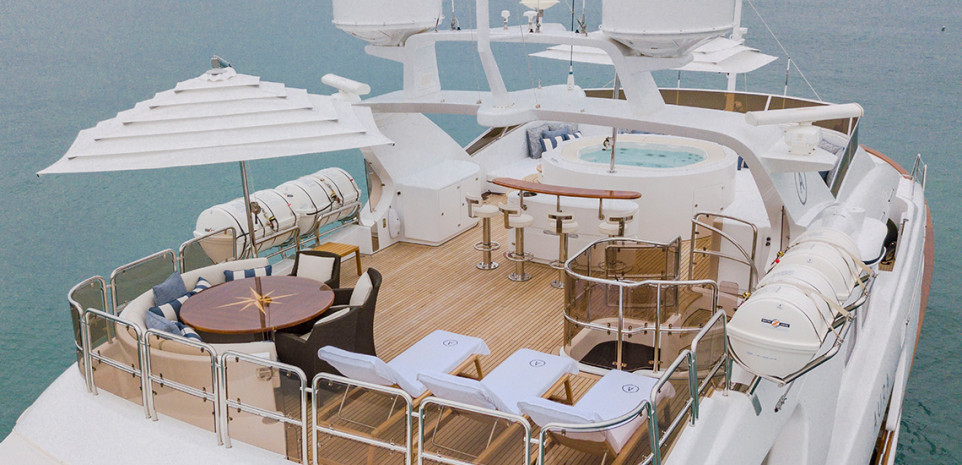
Other Yachting Terms You’ll Need To Know
An APA is a sum, usually 25-35% of the charter fee, that the charterer will pay in advance so that the yacht crew can stock the yacht with food, drink, and fuel and have money in the kitty for things like berthing fees. Any unused money at the end of the trip is returned to the charterer.
Bimini : A shade awning.
Bulkheads : The yacht’s internal walls and watertight compartments.
Ensign : The yacht’s flag, indicating which country it is registered in. Note that yachts are only sometimes registered in the nationality of the people that own them. And also that a yacht is legally considered a tiny, floating part of the country whose flag it flies and therefore operates under its laws and jurisdiction.
Knot : A measure of speed used on boats equal to one nautical mile (1.8km/hr).
Nautical Mile : Different from land miles! A nautical mile (1852m) is longer than a land mile (1609m).
Preference sheet : The form a charterer fills out to inform the yacht’s crew of their preferences regarding food, drink, activities etc. This preference sheet is given to the senior crew before the charter so the captain, chef, and chief stew can prepare the yacht for the charter.
Pullman : A pull-down berth to add an extra bed. These pull-down wall-mounted bunks are usually found in twin cabins for a third bed.
Phew! See? You’re already an expert :)
Contact information
Sharon Rose
- USA +1 954 892 5009
- UK +44 (0)20 7193 5450

- Crewed Yachts
- Destinations
Yachting and Boating Glossary of Terms
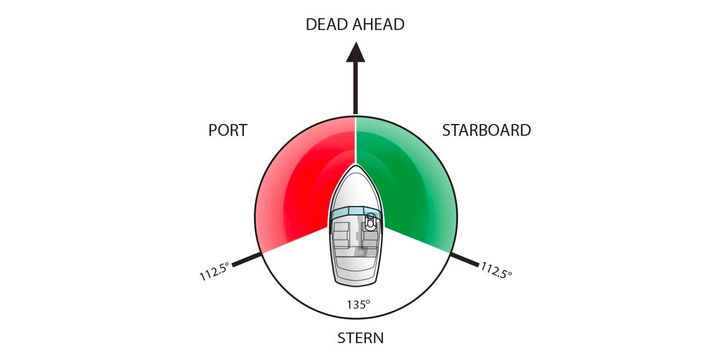
Which side is "Starboard"? Important yachting and boating terms, all in one place!
The yachting world is full of nicknames and jargon - it can be hard to understand some of the technical language used. Scroll down to read through some of the most popular sailing terms and what they mean!
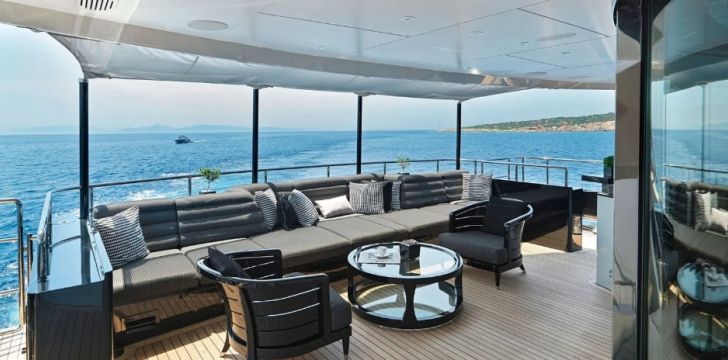
Aft deck . On motor yachts, the guest area closest to the back of the boat on the main level. Often the location of the main outdoor dining area. Aft cabin . Sleeping quarters beneath the aft or rear section of the boat (sometimes called a mid cabin when located beneath the helm) Alee . The side of a boat or object away from the direction of the wind. Aloft . Above deck in the rigging or mast. Amidships . In the center of the yacht Anti-fouling paint . A special paint applied to a boat's hull to prevent marine growth. APA . Advance Provisioning Allowance. The APA is money paid to a bank account for the Captain of the yacht to provision on the charterer’s behalf. Key provisioning is fuel, food, drinks, and port fees. The Captain is obligated to keep all receipts and balance the account for the charterer. At the end of the charter, the Captain provides a full account of expenditures, and any amounts not used will be refunded. Apparent wind . The direction and speed of the wind as felt in a moving boat - the way it 'appears”. Astern . The direction toward or beyond the back of the boat (stern). Athwartships . Perpendicular to the yacht’s centerline. An 'athwartships berth,” means the bed is parallel to the yacht’s sides instead of to its bow and stern. This can create uncomfortable motion while you sleep. Aweigh . An anchor that is off the bottom. Antigua. North of Guadeloupe , a popular bareboating destination. Anguilla. An exclusive destination in the Caribbean.
Enquire Now!

Backstay . Support for the mast to keep it from falling forward. Banyan. A short period of rest, often a day or so, while on a charter Bareboat . A yacht that you charter and run yourself, without a crew. See our Bareboat Page . Base charter rate . The rate the charterer pays on a charter for the yacht and crew. The base rate does not typically include provisioning or other expenses such as food, fuel, dockage and tip. Beam . Measurement of a boat at its widest point. Also, a transmitted radio, sonar or radar signal. Bearing . Direction to an object from your current position. Bear off . To turn away from the wind. Beating . Sailing upwind. Berth . 1 - A cabin or other place to sleep aboard a boat. 2 - A boat slip at a dock where the boat can be moored. Bermuda Triangle . A section of the North Atlantic Ocean off North America in which more than 50 ships and 20 airplanes are said to have mysteriously disappeared. Bermuda . A British island territory in the North Atlantic Ocean known for its pink-sand beaches such as Elbow Beach and Horseshoe Bay. Bimini . A sun shade or rain cover that covers a portion of a yacht or boat. Blue Peter. A blue/white flag that indicates the yacht is ready to sail Bow . Forward portion/front of a boat. Bowline. The most popular, and essential knot. It has many uses, and is easily 'broken' even when pulled tight. Buoy (normally pronounced "boowie”, but sometimes "boy”). An anchored floating object that serves as a navigation aid or hazard warning. BVI . The British Virgin Islands . A major sailing and yachting area in the Caribbean, near the US Virgin Islands and Puerto Rico .
Bareboats!
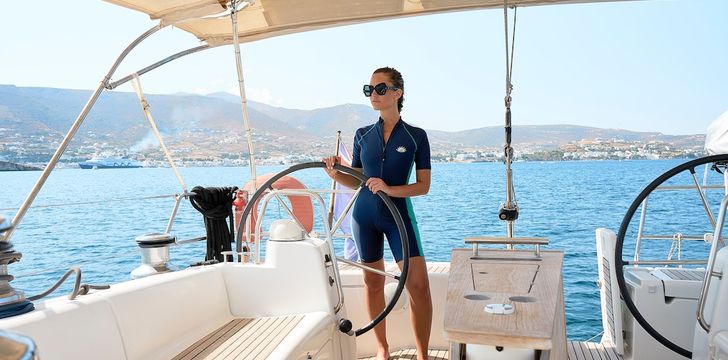
Captain-only charter . A yacht that comes with a captain but no additional crew. The captain drives the yacht, and you take care of everything else, including cooking and housekeeping. Often called Bareboat with Skipper Charter yacht broker . A person who specializes in booking personalized yacht vacations on behalf of clients. Also, the firm that person works for, as in Charter Yacht Broker Agency . See our article on why you should use a Charter broker . Charter terms . The contract under which you charter a yacht. There are different terms used in different parts of the world. Some give you everything on an all-inclusive basis, some give you all meals aboard, some give you no meals aboard, and so forth. Charter yacht . A yacht that is available for charter/rental. Cockpit . The outdoor area of a sailing yacht (typically in the stern) where guests sit and eat, and from where the captain may steer and control the boat. Commission . The fee a yacht’s owner pays to a charter broker for booking a charter. Note - the charterer does not pay the charter broker’s commission directly. Crew . The team that operates your charter yacht. The crew can include a captain plus any combination of: mate, deckhand, stewardess, engineer and chef. Some crew has additional skills such as wellness/massage therapy and scuba instruction . Crewed charter . The charter of a yacht that has a permanent crew aboard who run and manage all aspects of the yacht and charter. See more about Crewed Charter . CYBA . Charter Yacht Broker Association, one of the primary professional organizations for reputable charter brokers. Corsica. A French island north of Sardinia. Cuba . Cuba, officially the Republic of Cuba , is a country comprising the island of Cuba as well as Isla de la Juventud and several minor archipelagos located in the Caribbean sea .
Crewed Motor Yachts!
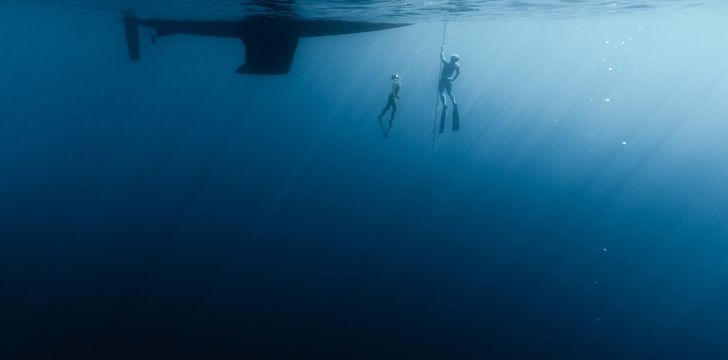
Dead Ahead. Right in front, just ahead. The direction you are sailing/cruising. Dinghy . A small boat that a yacht carries or tows. Used for transfers to and from shore, and short day cruises and, if powerful enough, water sports. Also typically called a tender on larger yachts. Displacement . The weight of water displaced by a hull. Also, a type of hull that smoothly displaces (pushes aside) water as opposed to tipping up and riding on top of it. Dodecanese . The Dodecanese islands located in the southeastern Aegean Sea, are a group of Greek islands known for their medieval castles, beaches and ancient archaeological sites. Double cabin . A charter yacht cabin that includes a double bed to sleep two guests. Not to be confused with "twin cabin," which means a cabin with two twin-size beds. Draft . The depth of a yacht below the waterline, as measured vertically. It is important when navigating shallow water to assure the boat can pass.
Destinations!
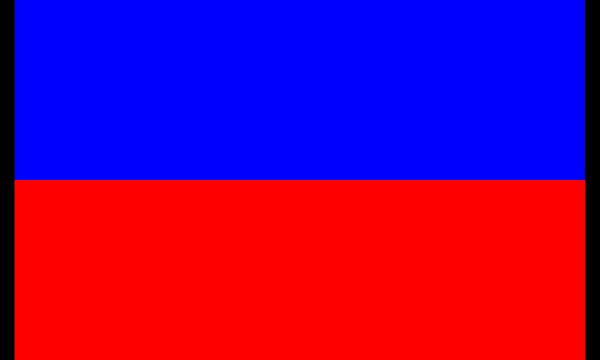
e-boat . A boat or yacht powered entirely by electricity (no diesel motor or generator). See more on our Electric Boat Revolution page. Ease . To slacken (loosen) a rope/line. Eco . 1) the spoken term for the letter "E" 2) short for Ecological, eg. good for the environment. Eddy water . Area of calm sea. Electric generator. Equipment that burns fuel to provide electricity aboard when there are no electrical connections or sources.

Fathom . Depth measurement equaling six feet. Fethiye . Fethiye is a port on Turkey's southwestern Turquoise Coast First Mate . The second in command on the yacht Fleet . A group of yachts that are under management by the same company, called a fleet manager or CA. Flank . The maximum speed of a ship Flotilla . A group of yachts cruising together. Flying bridge (or Flybridge). A raised, second-story helm station (steering area) that often also has room for passengers, providing views and a sun deck. Furling . Rolling or folding a sail on its boom. Many charter yachts today are 'self-furling” which takes much of the work out of dropping the sails. French Riviera. A stretch of coastline in the southern part of France. The 'Riviera' doesn't have an official boundary, however, most locals say that from Toulon to the Italian border is considered the 'French Riviera'.
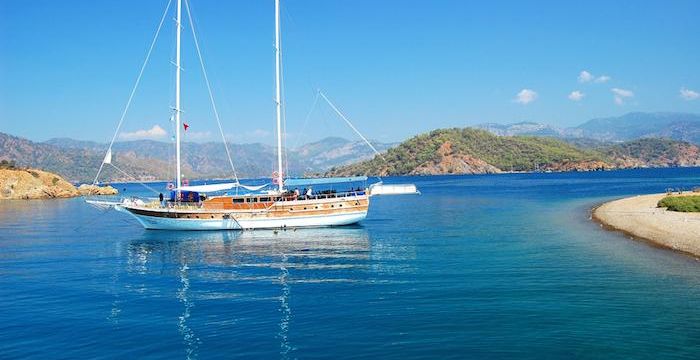
Galley . The kitchen/cooking area on a yacht. Gulet . A type of motorsailer typically found in Turkey. Gulets originated from sponge boats, but now offer luxury crewed charters, normally with en-suite bathrooms, large deck space, and full service. See more about Gulet Charters . Gunwale (Gun-ul). The upper edge of the side of a boat. Gybe . Also spelled jibe. To change the course of a boat by swinging a fore-and-aft sail across a following wind (eg the wind is blowing from behind the boat). Gocek. A popular bareboating sailing destination in Turkey. Gulf. Is a sizable amount of the ocean that penetrates the land. See 'Mexican Gulf'.
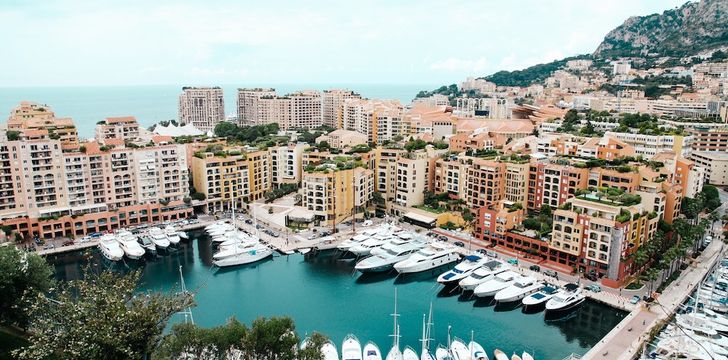
Halyard . Line (rope) used to hoist a sail. Harbour. An area designated for yachts to moor. Harbor fees . Charges paid by the yacht, and normally passed on to the charterer, for docking in certain harbors around the world. The rate depends very much on the season and attractiveness of the port. Harbormaster . The person at a harbor in charge of anchorages, berths and harbor traffic. Head . Toilet room. Heel . To temporarily tip or lean to one side. Monohulls heel more than catamarans. Helm . The steering wheel of the boat or yacht Hull . The structural body of the boat that rests in the water and is built to float.
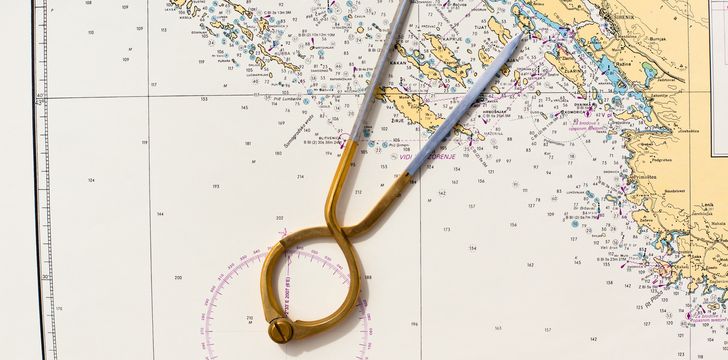
'Inclusive” charter rate . The cost of a charter that includes nearly all expenses, including the yacht and crew, food, alcohol (within reason), fuel and dockage. Itinerary . The course a yacht intends to travel while on charter. The itinerary is normally planned in advance but should remain flexible depending on weather conditions and guest preferences. Idle. When the engines run on 'idle' this means the yacht is just ticking over. Often referred to in fuel rates "Rates include fuel with engines at idle" In Irons. A sailing word to describe a yacht losing her forward momentum when heading into the wind. The yacht becomes untearable as she loses her way. Ischia. Ischia is a volcanic island in the Gulf of Naples , Italy, known for its mineral-rich thermal waters. Inboard. When the engine is IN the yacht, as opposed to being attached to the stern - this would be called an OUTboard. Inshore. Close or near the shoreline so line-of-sight sailing is possible. Iron wind. Sailor's nickname to the engine.
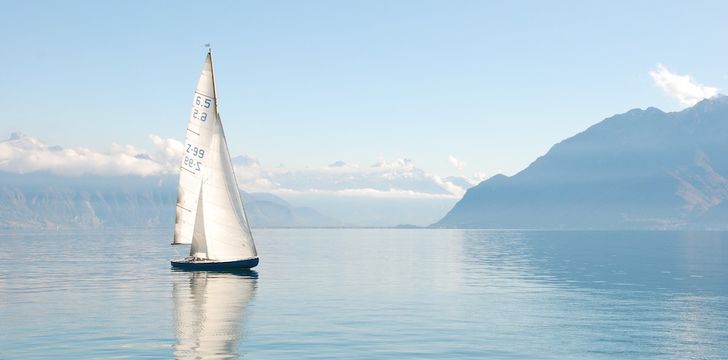
Jib . Triangular sail projecting ahead of the mast. Jibe . See gybe Jackeline's. Lines that run from Aft > forward that your harness can be attached to in bad weather. Jury rig (jerry-rig). A temporary fix to something which has broken on the yacht.
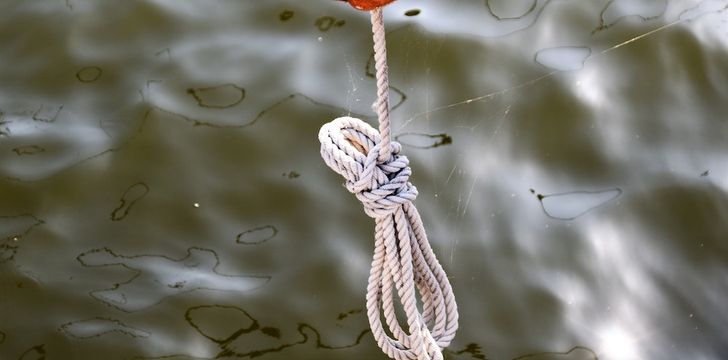
Knot . A unit of speed equivalent to one nautical mile per hour. "We are cruising at 6 knots". See nautical mile. Kedge. A small anchor that can be thrown overboard to either change the direction of the yacht (pivot point) or to help anchor the yacht further in bad weather. Often used then yachts "raft up". Ketch. A two-masted yacht. Kicking strap. A name to the line that pulls the boom down to flatten the sail.
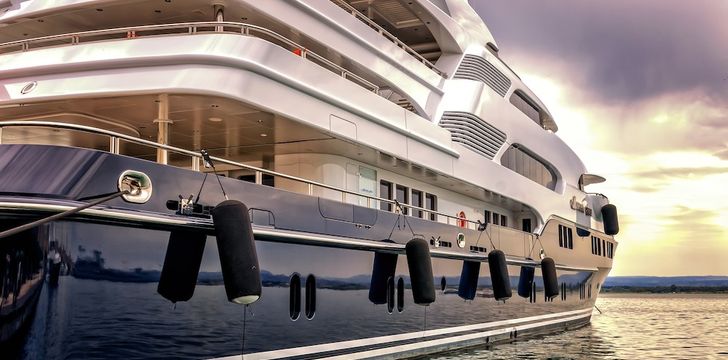
Lee . The side furthest away from the wind. Leeward . The side of an object that is sheltered from the wind. Often pronounced "loo ərd". Lee helm. In strong winds, the yacht can have a tendency to move to the lee without the rudder moving position. LOA - Length Over All. The length of a charter yacht as measured from 'stem to stern”. This is important because yachts are usually charged a price by the foot for dockage at marinas. Luxury Yacht - a crewed charter yacht the strives to provide 5-star service to its charterers including cuisine, water sports, housekeeping, and navigation. See our Luxury Yacht Charter Page. Lazy jack. A sail bag attached to the boom where the mainsail can fall into. Leech. The aft part of the sail. Luff. The forward part of the sail. Luffing up. Bringing the yacht into wind - moving the luff of the sail (the forward part of the sail called 'the luff' moves into the wind).
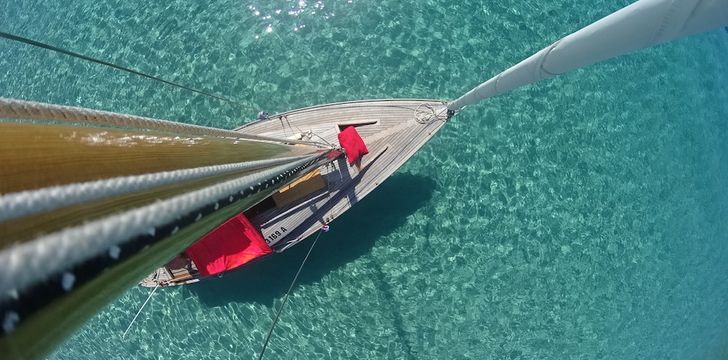
Mainsail . The largest regular sail on a sailboat. Main salon . the primary indoor guest area on a yacht’s main deck. Make fast . To secure a line. Marina . A place where yachts dock and receive services such as provisioning, water and fuel. Typically marinas offer protection from bad weather, and have hundreds of slips for yachts of various sizes. Slips are rented long term or by the day. Mast . Vertical spar that supports sails. Master cabin . Typically the best/largest cabin onboard any charter yacht. Megayacht . A large, luxury motoryacht. No hard and fast definition, but normally crewed luxury yachts 100 feet or longer. Similar to Superyacht. Midships . Location near the center of a boat. Monohull . A yacht with one hull, as opposed to a multihull or catamaran that has pontoons. While most motor yachts are monohulls, the term typically refers to sailing yachts. Motorsailor . A yacht built to sail and cruise under power with equal efficiencies, such as a Gulet. They typically look like sailing yachts, but have strong engines and are often skippered like they are motor yachts. Motoryacht . A yacht whose primary form of propulsion is engines. Multihull . A yacht with more than one hull - typically a catamaran (two) or trimaran (three). They can be either powerboats or sailboats. MYBA - The Worldwide Yachting Association - originally the Mediterranean Yacht Brokers Association (pronounced 'Mee ba”). An international yacht brokers' association based in the Mediterranean, one of the primary professional organizations for reputable charter brokers. MYBA Contract . A contract used for luxury yachts, that has become the standard in the Mediterranean and many other parts of the world. Offers protections for charterers in case of cancellation and clearly states the legal rights of all parties to the charter.

Nautical mile . A distance of 6,076.12 feet or 1,852 meters, which is about 15 percent longer than a statute mile. Equivalent to one minute of latitude on a navigation chart. See our Charter Distance and Cost Calculator here . Navigation. All activities that produce a path Nautical. Anything relating to the sea or yachts. Narrows. A narrow part of a navigable waterway. Nautical chart. 'Maps' designed specifically for sea navigation. Nun. Navigational, cone-shaped buoy (in IALA A = port in IALA B = starboard)

Outboard . An engine that is outside the boat (normally attached to the stern), as is commonly seen on tenders, dinghies, and smaller speed boats. Owner-operator . A person who owns and skippers a charter yacht, instead of hiring a captain to perform charters for guests.

Painter. The rope used to tie the dinghy or tender up to the boat. Passarelle . The passageway you walk on from the dock to the yacht. Often incorrectly called a gangplank. Personal flotation device (PFD). A safety vest or jacket capable of keeping an individual afloat. Pitch . The theoretical distance a propeller would travel in one revolution. Also, the rising and falling motion of a boat's bow and stern. Planing hull . A boat hull designed to ride on top of the water rather than plowing through it. Port (direction). The left side of a boat when facing the bow. Signified by Red. The opposite side from Starboard. Trick to remember - 'After a party, there’s no red port left'. Port (place). A marina harbor or commercial dock for boats. Port (drink). A strong, sweet, typically dark red fortified wine, originally from Portugal. (Well not exactly a nautical term, but lots of yachties like a good port after dinner!) Power catamaran . A multihulled powerboat with two identical side-by-side hulls. Characterized by excellent fuel mileage and less rolling in the water than a monohull powerboat. Power cruiser . A motor yacht with overnight accommodations, typically up to 40 feet long. Preference sheet . A questionnaire that guests fill out before a crewed charter. It alerts the crew to allergies and medical conditions, as well as to preferences for types of food, wine and service. As such, it is an invaluable document for the crew to plan the charter and assists greatly in customer satisfaction. Private yacht . A yacht that is not available for charter. Provisioning sheet . A questionnaire that guests fill out before a bareboat charter. It tells the management company what foods and other supplies you want to have to wait for you when you arrive for your vacation. It’s not mandatory, as many bareboaters prefer to provision themselves when they arrive. Pullman berth . A twin-size bed that is atop another bed, in bunk-bed fashion, that adds additional sleeping accommodation to the yacht. It often 'pulls” out of the wall when needed. Pump toilet . A marine toilet that requires the user to pump a handle to flush.

Reach . To sail across the wind. Regatta . A boat race, often with classic yachts. See more on our regatta charter guide . RIB (acronym for Rigid Inflatable Boat). An inflatable boat fitted with a rigid bottom often used as a dinghy or tender. They are great for shallow water and landing on sandy beaches. Rope . A cord used to moor or control a yacht. Note: experienced sailors always refer to ropes as lines. Runabout . A kind of small, lightweight, freshwater pleasurecraft intended for day use.

Sailing yacht . A yacht whose primary method of propulsion is sailing. Nearly all sailing yachts have engines in addition to their sails. Sedan cruiser . A type of large boat equipped with a salon and a raised helm or bridge. Semi-displacement hull . A hull shape with soft chines or a rounded bottom that enables the boat to achieve minimal planing characteristics (see Planing hull). This increases the top potential speed of the yacht. Schooner . A large sailboat with two or more masts where the foremast is shorter than aft mainmast. Skippered bareboat . A bareboat that has been chartered with a skipper, but no other crew. The skipper’s responsibility is navigating the boat and assuring the safety and wellbeing of the charterer. The skipper may cook and provision, but this is not a requirement. Also known as a captain-only charter or skipper-only charter. Sky lounge . The indoor guest area on the bridge deck of a luxury motor yacht. Often less formal than the main saloon, and sometimes ideal for cocktail parties, happy hour or children’s activities, especially if the weather is not perfect. Starboard . The right side of a boat when facing the bow. Opposite of Port. Stabilizers . A feature that helps to prevent a Motoryacht from rolling too drastically, especially in bad weather, greatly improving the comfort of the guests. The most advanced form is a zero-speed stabilizer, which works both underway and at anchor. Stem . The most forward section of the hull. Stern . Aft (back) portion of a boat. Swim platform . The space at the back of the yacht from which you typically can go swimming or board a dinghy. Lately, these have become entire pool/beach areas on some of the larger luxury yachts.

Tack (sail). The lower corner of a sail. Tack (sailing). Each leg of a zigzag course typically used to sail upwind. Tandem charter . A charter that includes more than one yacht. Tender . A boat that a yacht carries or tows used for transfers to and from shore, and short day cruises and watersports. Also sometimes called a dinghy. Transom . The rear section of the hull connecting the two sides. True wind . The direction and velocity of wind as measured on land, distinct from apparent wind which is how it appears on a moving yacht. Twin cabin . A yacht cabin that features two twin beds, often best suited for children or friends.

V-berth . A bed or berth located in the bow that has a V-shape. VAT . Value-added tax (TVA in France). A tax sometimes charged to charter guests who book boats in certain nations, most often in Europe. VAT can add 20 percent or more to your bill. Very happy . The state that most charterers are in the majority of the time they are aboard their yacht! VHF . Very high frequency; a bandwidth designation commonly used by marine radios. VICL . Virgin Islands Charter League, an organized group of charter yacht owners in the U.S. Virgin Islands. Membership in this group indicates a yacht owner’s willingness to be part of the larger charter community and to follow its standards. VIP cabin . Typically the second-best cabin onboard any charter yacht.

Waterline . The intersection of the hull and the surface of the water. Waypoint . The coordinates of a specific location. Weigh . To raise the anchor. Windlass . Rotating drum device used for hauling line or chain to raise and lower an anchor. Windward . The side of a boat or object that is facing or being hit by the wind - the windy side. Windward Islands . The Windward Islands are the southern, generally larger islands of the Lesser Antilles, within the West Indies Wet head . A bathroom that serves as both the toilet/sink area and the shower compartment, meaning the sink and toilet get wet when you use the showerhead.
Yacht . A sailing or motor yacht designed for pleasure boating that typically ranges from 40 to 100+ feet long. Yachting . The experience of being on a yacht. Yaw . To veer off course.
Zero-speed stabilizers . The most sophisticated type of motor yacht stabilizers that keep the yacht from rolling both underway and at anchor, significantly improving their comfort.
Contact us if you have questions about yachting or chartering!
We’d love to contact you by email from time to time about yachts and destinations we think will be of interest to you. Do tick this box if you are happy for us to do so. The unsubscribe link is at the bottom of all our marketing emails if you change your mind.
We'd love to contact you by email about yachts, destinations and offers. Do tick this box if you are happy for us to do so.

No Obligation Travel Itinerary

Bali 5.4 - 5 + 2 Cabins

Lagoon 50 - 6 + 1 Cabins

LADY VOLANTIS

3 SISTERS - Fountaine Pajot Lucia 40

CHAMPAGNE - Fountaine Pajot Elba 45
Chartering Information
Why Charter a Yacht?
Yacht Charter Basics
Charter and Rental Pricing and Boat Affordability for 2024 and 2025
Yacht Charter Fees and Insurance
Frequently Asked Charter Questions - Yacht Charter FAQ
Charter distance and cost calculator!!
About Boatbookings
Why Charter With Boatbookings?
Yacht Charter Insurance
Crewed Yacht Charter Checklist
The Yacht Charter Experience - Getting the most from your boat rental
Boat Rentals Guide - how to Rent a Boat for a Charter Holiday Vacation
Browse All Articles

Our most popular charter regions
- Caribbean Sea Charter Yachts
- Mediterranean Sea Charter Yachts
- Pacific Ocean Charter Yachts
- Thailand and Indian Ocean Charter Yachts
- Virgin Islands Yacht Charter
- Bahamas Yacht Charter
- Seychelles Yacht Charter
- Where We Charter
Several of the key worldwide chartering events of the year.
- Corporate Yacht Charter
- Event Yacht Charter
- Cannes Film Festival Yacht Charter
- Monaco Grand Prix Yacht Charter
- Charter Events in Cannes
- Weddings and Honeymoon Yacht Charters
- Family Charters with Children
- List your Charter Yacht on Boatbookings
Our International Specialized Sites
- Stunning Yachts Charter
- Boating News and Blog
- Boat Itineraries
- France location de bateaux
- Boten Verhuur, Boot Charter
- Boot Charter/Location de Bateaux
- Alquiler de Embarcaciones
- Turkiye Yat Kiralama

Rating: 4.9 / 5 calculated on 1442 reviews
- London +44 (0)20 7193 5450
- French Riviera +33 (0)9 70 46 39 79
- Ft Lauderdale +1 954 892 5009
General Email Contact: [email protected]
- © Copyright 2024 Boatbookings
- T's and C's
- Useful links
- Testimonials
- © Copyright 2024 Boatbookings | T's and C's | FAQ |
This website uses cookies --- I understand and accept
- Frank Magazine
- Denison History
- Virtual Tours
- Alaskan Yachts
- Azimut Yachts
- Back Cove Yachts
- Beneteau Yachts
- Benetti Superyachts
- Bertram Yachts
- Boston Whaler
- Broward Yachts
- Buddy Davis Sportfish
- Burger Yachts
- Cabo Yachts
- Carver Motoryachts
- Center Console
- Chris-Craft Yachts
- Cruisers Yachts
- DeFever Trawlers
- Dufour Sailboats
- Fairline Yachts
- Feadship Yachts
- Ferretti Yachts
- Formula Yachts
- Fountaine Pajot Cats
- Grady-White
- Grand Banks Trawlers
- Hargrave Yachts
- Hatteras Yachts
- Hinckley Picnic Boats
- Horizon Yachts
- Hydra-Sports
- Intrepid Boats
- Jarrett Bay Sportfish
- Jeanneau Yachts
- Kadey-Krogen Trawlers
- Lazzara Yachts
- Lekker Boats
- Luhrs Sportfish
- Marlow Yachts
- Maritimo Yachts
- Marquis Yachts
- McKinna Motoryachts
- Meridian Yachts
- Midnight Express
- Mochi Craft
- Neptunus Motoryachts
- Nordhavn Trawlers
- Nordic Tugs
- Ocean Alexander Yachts
- Offshore Yachts
- Oyster Sailing Yachts
- Pacific Mariner Yachts
- Palmer Johnson Yachts
- Pershing Yachts
- Prestige Yachts
- Princess Yachts
- Pursuit Yachts
- Riva Yachts
- Riviera Yachts
- Sabre Downeast
- San Lorenzo Yachts
- Sea Ray Boats
- SeaVee Central Consoles
- Selene Trawlers
- Scout Yachts
- Sunseeker Yachts
- Tiara Yachts
- Trinity Superyachts
- Viking Yachts
- Westport Yachts
Nautical + Sailing Terms You Should Know [578 Phrases]
![yacht different words Nautical + Sailing Terms You Should Know [578 Phrases]](https://cdn.denisonyachtsales.com/wp-content/uploads/2019/06/nautical-terms-you-should-know.jpg)
June 5, 2019 2:05 pm
A seaman’s jargon is among the most challenging to memorize. With over 500 terms used to communicate with a captain, crew, and sailors regarding navigation and more, there’s a word for nearly everything. No need to jump ship, this comprehensive list will have you speaking the lingo in no time.
Abaft the beam: A relative bearing of greater than 90 degrees from the bow. e.g. “two points abaft the port beam.”
Abaft: Toward the stern, relative to some object (“abaft the fore hatch”).
Abandon Ship: An imperative to leave the vessel immediately, usually in the face of some imminent danger.
Abeam: “On the beam”, a relative bearing at right angles to the centerline of the ship’s keel.
Aboard: On or in a vessel. Close aboard means near a ship.
Above board: On or above the deck, in plain view, not hiding anything.
Accommodation ladder: A portable flight of steps down a ship’s side.
Admiral: Senior naval officer of Flag rank. In ascending order of seniority, Rear Admiral, Vice Admiral, Admiral and Admiral of the Fleet (Royal Navy). Derivation reputedly Arabic, from “Emir al Bath” (“Ruler of the waters”).
Admiralty law: Body of law that deals with maritime cases. In the UK administered by the Probate, Divorce and Admiralty Division of the High Court of Justice.
Adrift: Afloat and unattached in any way to the shore or seabed. It may also imply that a vessel is not anchored and not under control, therefore goes where the wind and current take her, (loose from moorings, or out of place). Also refers to any gear not fastened down or put away properly. It can also be used to mean “absent without leave”.
Affreightment: Hiring of a vessel
Aft: Towards the stern (of the vessel).
Afterdeck: Deck behind a ship’s bridge
Afterguard: Men who work the aft sails on the quarterdeck and poop deck
Aground: Resting on or touching the ground or bottom.
Ahead: Forward of the bow.
Ahoy: A cry to draw attention. A term used to hail a boat or a ship, as “Boat ahoy!”.
Ahull: With sails furled and helm lashed to the lee-side.
Aid to Navigation: ( ATON) Any device external to a vessel or aircraft specifically intended to assist navigators in determining their position or safe course, or to warn them of dangers or obstructions to navigation.
All hands: Entire ship’s company, both officers and enlisted personnel.
All-Round White Light: On power-driven vessels less than 39.4 feet in length, this light may be used to combine a masthead light and sternlight into a single white light that can be seen by other vessels from any direction. This light serves as an anchor light when sidelights are extinguished.
Aloft: Above the ship’s uppermost solid structure; overhead or high above.
Alongside: By the side of a ship or pier.
Amidships (or midships): In the middle portion of the ship, along the line of the keel.
Anchor ball: Black shape hoisted in the forepart of a ship to show that ship is anchored in a fairway.
Anchor buoy: A small buoy secured by a light line to anchor to indicate the position of the anchor on the bottom.
Anchor chain or cable: Chain connecting the ship to the anchor.
Anchor detail: Group of men who handle ground tackle when the ship is anchoring or getting underway.
Anchor light: White light displayed by a ship at anchor. Two such lights are displayed by a ship over 150 feet (46 m) in length.
Anchor watch: Making sure that the anchor is holding and the vessel is not drifting. Important during rough weather and at night. Most marine GPS units have an Anchor Watch alarm capability.
Anchor: An object designed to prevent or slow the drift of a ship, attached to the ship by a line or chain; typically a metal, hook-like object, designed to grip the bottom under the body of water.
Anchorage: A suitable place for a ship to anchor. Area of a port or harbor.
Anchor’s aweigh: Said of an anchor when just clear of the bottom.
As the crow flies: A direct line between two points (which might cross land) which is the way crows travel rather than ships which must go around land.
Ashore: On the beach, shore or land.
Astern: Toward the stern; an object or vessel that is abaft another vessel or object.
ASW: Anti-submarine warfare.
Asylum Harbor: A harbor used to provide shelter from a storm.
Athwart, athwartships: At right angles to the fore and aft or centerline of a ship.
Avast: Stop! Cease or desist from whatever is being done.
Awash: So low in the water that the water is constantly washing across the surface.
Aweigh: Position of an anchor just clear of the bottom.
Aye, aye: Reply to an order or command to indicate that it, firstly, is heard; and, secondly, is understood and will be carried out. (“Aye, aye, sir” to officers).
Azimuth circle: Instrument used to take bearings of celestial objects.
Azimuth compass: An instrument employed for ascertaining the position of the sun with respect to magnetic north. The azimuth of an object is its bearing from the observer measured as an angle clockwise from true north.
Back and fill: To use the advantage of the tide being with you when the wind is not.
Backstays: Long lines or cables, reaching from the rear of the vessel to the mast heads, used to support the mast.
Baggywrinkle: A soft covering for cables (or any other obstructions) that prevents sail chafing from occurring.
Bale Cube (or Bale Capacity): The space available for cargo measured in cubic feet to the inside of the cargo battens, on the frames, and to the underside of the beams.
Ballaster: One who supplies ships with ballast.
Bank (sea floor): A large area of elevated sea floor.
Banyan: Traditional Royal Navy term for a day or shorter period of rest and relaxation.
Bar pilot: A bar pilot guides ships over the dangerous sandbars at the mouth of rivers and bays.
Bar: Large mass of sand or earth, formed by the surge of the sea. They are mostly found at the entrances of great rivers or havens, and often render navigation extremely dangerous, but confer tranquility once inside. See also: Touch and go, grounding. Alfred Lord Tennyson’s poem ‘Crossing the bar’ an allegory for death.
Bargemaster: Owner of a barge.
Barrelman: A sailor that was stationed in the crow’s nest.
Beacon: A lighted or unlighted fixed aid to navigation attached directly to the earth’s surface. (Lights and daybeacons both constitute beacons).
Beam ends: The sides of a ship. “On her beam ends” may mean the vessel is literally on her side and possibly about to capsize; more often, the phrase means the vessel is listing 45 degrees or more.
Beam: The beam of a ship is its width at the widest point or a point alongside the ship at the mid-point of its length.
Bear away: Turn away from the wind, often with reference to a transit.
Bear down: Turn away from the wind, often with reference to a transit.
Bearing: The horizontal direction of a line of sight between two objects on the surface of the earth.
Bee: Hardwood on either side of bowsprit through which forestays are reeved
Before the mast: Literally, the area of a ship before the foremast (the forecastle). Most often used to describe men whose living quarters are located here, officers being housed behind (abaft) the mast and enlisted men before the mast. This was because the midships area where the officers were berthed is more stable, being closer to the center of gravity, and thus more comfortable. It is less subject to the up and down movement resulting from the ship’s pitching.
Belay: To secure a rope by winding on a pin or cleat
Belaying pins: Bars of iron or hardwood to which running rigging may be secured, or belayed.
Berth: A bed on a boat, or a space in a port or harbor where a vessel can be tied up.
Best bower (anchor): The larger of two anchors carried in the bow; so named as it was the last, best hope.
Bilge: The bilge is the compartment at the bottom of the hull of a ship or boat where water collects so that it may be pumped out of the vessel at a later time.
Bilged on her anchor: A ship that has run upon her own anchor.
Bimini: Weather-resistant fabric stretched over a stainless steel frame, fastened above the cockpit of a sailboat or flybridge of a power yacht which serves as a rain or sun shade.
Bimmy: A punitive instrument.
Binnacle list: A ship’s sick list. The list of men unable to report for duty was given to the officer or mate of the watch by the ship’s surgeon. The list was kept at the binnacle.
Binnacle: The stand on which the ship’s compass is mounted.
Bitter end: The anchor cable is tied to the bitts when the cable is fully paid out, the bitter end has been reached. The last part of a rope or cable.
Bitts: Posts mounted on a ship for fastening ropes
Bloody: An intensive derived from the substantive ‘blood’, a name applied to the Bucks, Scrowers, and Mohocks of the seventeenth centuries.
Blue Peter: A blue and white flag hoisted at the foretrucks of ships about to sail.
Boat: A craft or vessel designed to float on, and provide transport over, water.
Boatswain or bosun: A non-commissioned officer responsible for the sails, ropes, and boats on a ship who issues “piped” commands to seamen.
Bobstay: Rope used on ships to steady the bowsprit
Bollard: From “bol” or “bole”, the round trunk of a tree. A substantial vertical pillar to which lines may be made fast. Generally on the quayside rather than the ship.
Boltrope: Strong rope stitched to edges of a sail
Booby hatch: A sliding hatch or cover.
Booby: A type of bird that has little fear and therefore is particularly easy to catch, hence booby prize.
Boom vang: A sail control that lets one apply downward tension on the boom, countering the upward tension provided by the mainsail. The boom vang adds an element of control to mainsail shape when the mainsheet is let out enough that it no longer pulls the boom down. Boom vang tension helps control leech twist, a primary component of sail power.
Boom: A spar used to extend the foot of a fore-and-aft sail.
Booms: Masts or yards, lying on board in reserve.
Bosun: Boatswain
Bottomry: Pledging a ship as security in a financial transaction.
Bow: The front of a ship.
Bower: Anchor carried at bow of a ship
Bowline: A type of knot, producing a strong loop of a fixed size, topologically similar to a sheet bend. Also, a rope attached to the side of a sail to pull it towards the bow (for keeping the windward edge of the sail steady).
Bowse: To pull or hoist.
Bowsprit: A spar projecting from the bow used as an anchor for the forestay and other rigging.
Brail: To furl or truss a sail by pulling it in towards the mast, or the ropes used to do so.
Bream: To clean a ship’s bottom by burning off seaweed.
Bridge: A structure above the weather deck, extending the full width of the vessel, which houses a command center, itself called by association, the bridge.
Bring to: Cause a ship to be stationary by arranging the sails.
Broaching-to: A sudden movement in navigation, when the ship, while scudding before the wind, accidentally turns her leeward side to windward, also use to describe the point when water starts to come over the gunwale due to this turn.
Buffer: The chief bosun’s mate, responsible for discipline.
Bulkhead: An upright wall within the hull of a ship. Particularly a load bearing wall.
Bulwark: The extension of the ship’s side above the level of the weather deck.
Bumboat: A private boat selling goods.
Bumpkin: An iron bar (projecting outboard from a ship’s side) to which the lower and topsail brace blocks are sometimes hooked. Chains supporting/stabilizing the bowsprit.
Bunt: Middle of sail, fish-net or cloth when slack.
Buntline: One of the lines tied to the bottom of a square sail and used to haul it up to the yard when furling.
Buoy: A floating object of defined shape and color, which is anchored at a given position and serves as an aid to navigation.
Buoyed Up: Lifted by a buoy, especially a cable that has been lifted to prevent it from trailing on the bottom.
Burgee: Small ship’s flag used for identification or signaling.
By and Large: By means into the wind, while large means with the wind. By and large, is used to indicate all possible situations “the ship handles well both by and large”.
By the board: Anything that has gone overboard.
Cabin boy: attendant on passengers and crew.
Cabin: an enclosed room on a deck or flat.
Cable: A large rope; also a measure of length or distance. Equivalent to (UK) 1/10 nautical mile, approx. 600 feet; (USA) 120 fathoms, 720 feet (219 m); other countries use different values.
Cabotage: Shipping and sailing between points in the same country.
Camber: Slight arch or convexity to a beam or deck of a ship.
Canister: A type of anti-personnel cannon load in which lead balls or other loose metallic items were enclosed in a tin or iron shell. On firing the shell would disintegrate releasing the smaller metal objects.
Cape Horn fever: The name of the fake illness a malingerer is pretending to suffer from.
Capsize: When a ship or boat lists too far and rolls over, exposing the keel. On large vessels, this often results in the sinking of the ship.
Capstan: A huge rotating hub (wheel) mounted vertically and provided with horizontal holes to take up the capstan bars (when manually rotated), used to wind in anchors or other heavy objects; and sometimes to administer flogging over.
Captain’s daughter: The cat o’ nine tails, which in principle is only used on board on the captain’s (or a court martial’s) personal orders.
Careening: Cause the ship to tilt on its side, usually to clean or repair the hull below the water line.
Cargo Deadweight Tons: The weight remaining after deducting fuel, water, stores, dunnage and such other items necessary for use on a voyage from the deadweight of the vessel.
Carlin: Similar to a beam, except running in a fore and aft direction.
Cat Head: A beam extending out from the hull used to support an anchor when raised in order to secure or “fish” it.
Cat: To prepare an anchor, after raising it by lifting it with a tackle to the Cat Head, prior to securing (fishing) it alongside for sea. (An anchor raised to the Cat Head is said to be catted).
Catamaran: A vessel with two hulls.
Catboat: A cat-rigged vessel with only one sail, usually on a gaff.
Centreboard: A removable keel used to resist leeway.
Chafing Gear: Material applied to a line or spar to prevent or reduce chafing. See Baggywrinkle.
Chafing: Wear on the line or sail caused by constant rubbing against another surface.
Chain-wale or channel: A broad, thick plank that projects horizontally from each of a ship’s sides abreast a mast, distinguished as the fore, main, or mizzen channel accordingly, serving to extend the base for the shrouds, which supports the mast.
Chine: A relatively sharp angle in the hull, as compared to the rounded bottoms of most traditional boat hulls.
Chock: Metal casting with curved arms for passing ropes for mooring ship.
Chock-a-block: Rigging blocks that are so tight against one another that they cannot be further tightened.
Clean bill of health: A certificate issued by a port indicating that the ship carries no infectious diseases.
Clean slate: At the helm, the watch keeper would record details of speed, distances, headings, etc. on a slate. At the beginning of a new watch the slate would be wiped clean.
Cleat: A stationary device used to secure a rope aboard a vessel.
Clew: Corner of sail with a hole to attach ropes.
Clew-lines: Used to truss up the clews, the lower corners of square sails.
Club: hauling the ship drops one of its anchors at high speed to turn abruptly. This was sometimes used as a means to get a good firing angle on a pursuing vessel.
Coaming: The raised edge of a hatchway used to help keep out water.
Cocket: Official shipping seal; customs clearance form.
Cofferdam: Narrow vacant space between two bulkheads of a ship.
Cog: Single-masted, square-sailed ship with a raised stern.
Companionway: A raised and windowed hatchway in the ship’s deck, with a ladder leading below and the hooded entrance-hatch to the main cabins.
Compass: Navigational instrument that revolutionized travel.
Complement: The full number of people required to operate a ship. Includes officers and crewmembers; does not include passengers.
Cordage: Ropes in the rigging of a ship.
Corrector: a device to correct the ship’s compass.
Courses: The mainsail, foresail, and mizzen.
Coxswain or cockswain: The helmsman or crew member in command of a boat.
Cringle: Loop at the corner of a sail to which a line is attached.
Crosstrees: Horizontal crosspieces at a masthead used to support ship’s mast.
Crow’s nest: Specifically a masthead constructed with sides and sometimes a roof to shelter the lookouts from the weather, generally by whaling vessels, this term has become a generic term for what is properly called masthead. See masthead.
Cube: The cargo carrying capacity of a ship, measured in cubic feet.
Cuddy: A small cabin in a boat.
Cunningham: A line invented by Briggs Cunningham, used to control the shape of a sail.
Cut and run: When wanting to make a quick escape, a ship might cut lashings to sails or cables for anchors, causing damage to the rigging, or losing an anchor, but shortening the time needed to make ready by bypassing the proper procedures.
Cut of his jib: The “cut” of a sail refers to its shape. Since this would vary between ships, it could be used both to identify a familiar vessel at a distance and to judge the possible sailing qualities of an unknown one.
Cut splice: A join between two lines, similar to an eye-splice, where each rope end is joined to the other a short distance along, making an opening which closes under tension.
Cutline: The “valley” between the strands of a rope or cable. Before serving a section of laid rope e.g. to protect it from chafing, it may be “wormed” by laying yarns in the cuntlines, giving that section an even cylindrical shape.
Daggerboard: A type of centerboard that is removed vertically.
Davit: Device for hoisting and lowering a boat.
Davy Jones (Locker): An idiom for the bottom of the sea.
Daybeacon: An unlighted fixed structure which is equipped with a dayboard for daytime identification.
Dayboard: The daytime identifier of an aid to navigation presenting one of several standard shapes (square, triangle, rectangle) and colors (red, green, white, orange, yellow, or black).
Deadeye: A round wooden plank which serves a similar purpose to a block in the standing rigging of large sailing vessels.
Deadrise: The design angle between the keel (q.v.) and horizontal.
Deadweight Tons (DWT): The difference between displacement, light and displacement, and loaded. A measure of the ship’s total carrying capacity.
Deadwood: Timbers built into ends of a ship when too narrow to permit framing.
Deckhand: A person whose job involves aiding the deck supervisor in (un)mooring, anchoring, maintenance, and general evolutions on deck.
Deck supervisor: The person in charge of all evolutions and maintenance on deck; sometimes split into two groups: forward deck supervisor, aft deck supervisor.
Deckhead: The under-side of the deck above. Sometimes paneled over to hide the pipework. This paneling, like that lining the bottom and sides of the holds, is the ceiling.
Decks: the structures forming the approximately horizontal surfaces in the ship’s general structure. Unlike flats, they are a structural part of the ship.
Demurrage: Delay of the vessel’s departure or loading with cargo.
Derrick: A lifting device composed of one mast or pole and a boom or jib which is hinged freely at the bottom.
Directional light: A light illuminating a sector or very narrow-angle and intended to mark a direction to be followed.
Displacement, Light: The weight of the ship excluding cargo, fuel, ballast, stores, passengers, and crew, but with water in the boilers to steaming level.
Displacement, Loaded: The weight of the ship including cargo, passengers, fuel, water, stores, dunnage and such other items necessary for use on a voyage, which brings the vessel down to her load draft.
Displacement: A measurement of the weight of the vessel, usually used for warships. Displacement is expressed either in long tons of 2,240 pounds or metric tons of 1,000 kg.
Disrate: To reduce in rank or rating; demote.
Dodger: Shield against rain or spray on a ship’s bridge.
Dog watch: A short watch period, generally half the usual time (e.g. a two-hour watch between two four hour ones). Such a watch might be included in order to slowly rotate the system over several days for fairness or to allow both watches to eat their meals at approximately normal times.
Dolphin: A structure consisting of a number of piles driven into the seabed or riverbed in a circular pattern and drawn together with wire rope.
Downhaul: A line used to control either a mobile spar or the shape of a sail.
Draft, Air: Air Draft is the distance from the water line to the highest point on a ship (including antennas) while it is loaded.
Draft: The distance between the waterline and the keel of a boat; the minimum depth of water in which a boat will float.
Dressing down: Treating old sails with oil or wax to renew them, or a verbal reprimand.
Driver: The large sail flown from the mizzen gaff.
Driver-mast: The fifth mast of a six-masted barquentine or gaff schooner. It is preceded by the jigger mast and followed by the spanker mast. The sixth mast of the only seven-masted vessel, the gaff schooner Thomas W. Lawson, was normally called the pusher-mast.
Dromond: Large single-sailed ship powered by rowers.
Dunnage: Loose packing material used to protect a ship’s cargo from damage during transport. Personal baggage.
Dyogram: Ship’s chart indicating compass deflection due to ship’s iron.
Earrings: Small lines, by which the uppermost corners of the largest sails are secured to the yardarms.
Embayed: The condition where a sailing vessel is confined between two capes or headlands, typically where the wind is blowing directly onshore.
Ensign: Large naval flag.
Escutcheon: Part of ship’s stern where name is displayed.
Extremis (also known as “in extremis”): The point under International Rules of the Road (Navigation Rules) at which the privileged (or stand-on) vessel on a collision course with a burdened (or give-way) vessel determines it must maneuver to avoid a collision. Prior to extremes, the privileged vessel must maintain course and speed and the burdened vessel must maneuver to avoid a collision.
Fairlead: Ring through which rope is led to change its direction without friction.
Fardage: Wood placed in the bottom of the ship to keep cargo dry.
Fathom: A unit of length equal to 6 feet (1.8 m), roughly measured as the distance between a man’s outstretched hands.
Fender: An air or foam filled bumper used in boating to keep boats from banging into docks or each other.
Fiddley: Iron framework around hatchway opening.
Figurehead: Symbolic image at the head of a traditional sailing ship or early steamer.
Fireship: A ship loaded with flammable materials and explosives and sailed into an enemy port or fleet either already burning or ready to be set alight by its crew (who would then abandon it) in order to collide with and set fire to enemy ships.
First Lieutenant: In the Royal Navy, the senior lieutenant on board; responsible to the Commander for the domestic affairs of the ship’s company. Also known as ‘Jimmy the One’ or ‘Number One’. Removes his cap when visiting the mess decks as a token of respect for the privacy of the crew in those quarters. Officer i/c cables on the forecastle. In the U.S. Navy the senior person in charge of all Deckhands.
First Mate: The Second in command of a ship.
Fish: To repair a mast or spar with a fillet of wood. To secure an anchor on the side of the ship for sea,otherwise known as “catting”.
Flag hoist: A number of signal flags strung together to convey a message, e.g. “England expects…”.
Flagstaff: Flag pole at the stern of a ship.
Flank: The maximum speed of a ship. Faster than “full speed”.
Flatback: A Great Lakes slang term for a vessel without any self-unloading equipment.
Flemish Coil: A line coiled around itself to neaten the decks or dock.
Flog: To beat, to punish.
Fluke: The wedge-shaped part of an anchor’s arms that digs into the bottom.
Fly by night: A large sail used only for sailing downwind, requiring little attention.
Following sea: Wave or tidal movement going in the same direction as a ship.
Foot: The bottom of a sail.
Footloose: If the foot of a sail is not secured properly, it is footloose, blowing around in the wind.
Footrope: Each yard on a square-rigged sailing ship is equipped with a footrope for sailors to stand on while setting or stowing the sails.
Fore: Towards the bow (of the vessel).
Forebitt: Post for fastening cables at a ship’s foremast.
Forecabin: Cabin in the fore part of a ship.
Forecastle: A partial deck, above the upper deck and at the head of the vessel; traditionally the sailors living quarters. Pronounced “foc-sle”. The name is derived from the castle fitted to bear archers in time of war.
Forefoot: The lower part of the stem of a ship.
Foremast: Mast nearest the bow of a ship
Foresail: The lowest sail set on the foremast of a square-rigged ship.
Forestays: Long lines or cables, reaching from the front of the vessel to the mast heads, used to support the mast.
Forward: The area towards the bow.
Founder: To fill with water and sink → Wiktionary.
Frap: To draw a sail tight with ropes or cables.
Freeboard: The height of a ship’s hull (excluding superstructure) above the waterline. The vertical distance from the current waterline to the lowest point on the highest continuous watertight deck. This usually varies from one part to another.
Full and by: Sailing into the wind (by), but not as close-hauled as might be possible, so as to make sure the sails are kept full. This provides a margin for error to avoid being taken aback (a serious risk for square-rigged vessels) in a tricky sea. Figuratively it implies getting on with the job but in a steady, relaxed way, without undue urgency or strain.
Furl: To roll or wrap a sail around the mast or spar to which it is attached.
Futtock: Rib of a ship.
Gaff: The spar that holds the upper edge of a fore-and-aft or gaff sail. Also, a long hook with a sharp point to haul fish in.
Gaff-topsail: Triangular topsail with its foot extended upon the gaff.
Galley: The kitchen of the ship.
Gangplank: A movable bridge used in boarding or leaving a ship at a pier; also known as a “brow”.
Gangway: Either of the sides of the upper deck of a ship
Garbled: Garbling was the (illegal) practice of mixing cargo with garbage.
Garboard: The strake closest to the keel (from Dutch gaarboard).
Genoa: Large jib that overlaps the mainsail
Global Positioning System (GPS): A satellite-based radio navigation system providing continuous worldwide coverage. It provides navigation, position, and timing information to air, marine, and land users.
Grain Cube (or Grain Capacity): The maximum space available for cargo measured in cubic feet, the measurement being taken to the inside of the shell plating of the ship or to the outside of the frames and to the top of the beam or underside of the deck plating.
Grapnel: Small anchor used for dragging or grappling.
Gross Tons: The entire internal cubic capacity of the ship expressed in tons of 100 cubic feet to the ton, except certain spaces which are exempted such as: peak and other tanks for water ballast, open forecastle bridge and poop, access of hatchways, certain light and air spaces, domes of skylights, condenser, anchor gear, steering gear, wheelhouse, galley and cabin for passengers.
Groundage: A charge on a ship in port.
Gudgeon: Metal socket into which the pintle of a boat’s rudder fits.
Gunnage: Number of guns carried on a warship.
Gunwhale: Upper edge of the hull.
Gybe: To swing a sail from one side to another.
Halyard or Halliard: Originally, ropes used for hoisting a spar with a sail attached; today, a line used to raise the head of any sail.
Hammock: Canvas sheets, slung from the deckhead in mess decks, in which seamen slept. “Lash up and stow” a piped command to tie up hammocks and stow them (typically) in racks inboard of the ship’s side to protect the crew from splinters from shot and provide a ready means of preventing flooding caused by damage.
Hand Bomber: A ship using coal-fired boilers shoveled in by hand.
Handsomely: With a slow even motion, as when hauling on a line “handsomely.”
Hank: A fastener attached to the luff of the headsail that attaches the headsail to the forestay. Typical designs include a bronze or plastic hook with a spring-operated gate or a strip of cloth webbing with a snap fastener.
Harbor: A harbor or haven is a place where ships may shelter from the weather or are stored. Harbors can be man-made or natural.
Haul wind: To point the ship so as to be heading in the same direction as the wind, generally not the fastest point of travel on a sailing vessel.
Hawse: Distance between ship’s bow and its anchor.
Hawse-hole: A hole in a ship’s bow for a cable or chain, such as for an anchor, to pass through.
Hawsepiper: An informal maritime industry term used to refer to a merchant ship’s officer who began his or her career as an unlicensed merchant seaman and did not attend a traditional maritime college/academy to earn the officer license.
Hawser: Large rope for mooring or towing a ship.
Head of navigation: A term used to describe the farthest point above the mouth of a river that can be navigated by ships.
Head: The toilet or latrine of a vessel, which for sailing ships projected from the bows.
Headsail: Any sail flown in front of the most forward mast.
Heave down: Turn a ship on its side (for cleaning).
Heave: A vessel’s transient up-and-down motion.
Heaving to: To stop a sailing vessel by lashing the helm in opposition to the sails. The vessel will gradually drift to leeward, the speed of the drift depending on the vessel’s design.
Heeling: The lean caused by the wind’s force on the sails of a sailing vessel.
Helm: Ship’s steering wheel.
Helmsman: A person who steers a ship.
Hogging or hog: The distortion of the hull where the ends of the keel are lower than the center.
Hold: In earlier use, below the orlop deck, the lower part of the interior of a ship’s hull, especially when considered as storage space, as for cargo. In later merchant vessels, it extended up through the decks to the underside of the weather deck.
Holiday: A gap in the coverage of newly applied paint, slush, tar, or other preservatives.
Holystone: Sandstone material used to scrape ships’ decks
Horn: A sound signal which uses electricity or compressed air to vibrate a disc diaphragm.
Horse: Attachment of sheets to the deck of the vessel (Main-sheet horse).
Hounds: Attachments of stays to masts.
Hull: The shell and framework of the basic flotation-oriented part of a ship.
Hydrofoil: A boat with wing-like foils mounted on struts below the hull.
Icing: A serious hazard where cold temperatures (below about -10°C) combined with high wind speed (typically force 8 or above on the Beaufort scale) result in spray blown off the sea freezing immediately on contact with the ship.
Idlers: Members of a ship’s company not required to serve watches. These were in general specialist tradesmen such as the carpenter and the sailmaker.
In Irons: When the bow of a sailboat is headed into the wind and the boat has stalled and is unable to maneuver.
In the offing: In the water visible from on board a ship, now used to mean something imminent.
Inboard: Inside the line of a ship’s bulwarks or hull.
Inboard-Outboard drive system: A larger Power Boating alternative drive system to transom mounted outboard motors.
Jack: Ship’s flag flown from jack-staff at the bow of a vessel.
Jack-block: Pulley system for raising topgallant masts.
Jack-cross-tree: Single iron cross-tree at the head of a topgallant mast.
Jacklines or Jack Stays: Lines, often steel wire with a plastic jacket, from the bow to the stern on both port and starboard. The Jack Lines are used to clip on the safety harness to secure the crew to the vessel while giving them the freedom to walk on the deck.
Jackstaff: Short staff at ship’s bow from which the jack is hoisted.
Jackyard: Spar used to spread the foot of a gaff-topsail
Jib: A triangular staysail at the front of a ship.
Jibboom: Spar forming an extension of the bowsprit.
Jibe: To change a ship’s course to make the boom shift sides.
Jigger-mast: The fourth mast, although ships with four or more masts were uncommon, or the aft-most mast where it is smallest on vessels of less than four masts.
Junk: Old cordage past its useful service life as lines aboard ship. The strands of old junk were teased apart in the process called picking oakum.
Jurymast: Mast erected on a ship in place of one lost.
Kedge: Small anchor to keep a ship steady.
Keel: A boat’s backbone; the lowest point of the boat’s hull, the keel provides strength, stability and prevents sideways drift of the boat in the water.
Keel: The central structural basis of the hull.
Keelson: Lengthwise wooden or steel beam in ship for bearing stress.
Kentledge: Pig-iron used as ballast in ship’s hold.
Killick: A small anchor. A fouled killick is the substantive badge of non-commissioned officers in the RN. Seamen promoted to the first step in the promotion ladder are called “Killick”. The badge signifies that here is an Able Seaman skilled to cope with the awkward job of dealing with a fouled anchor.
Ladder: On board a ship, all “stairs” are called ladders, except for literal staircases aboard passenger ships. Most “stairs” on a ship are narrow and nearly vertical, hence the name. Believed to be from the Anglo-Saxon word “hiaeder”, meaning ladder.
Lagan: Cargo jettisoned from the ship but marked by buoys for recovery.
Laker: Great Lakes slang for a vessel who spends all its time on the 5 Great Lakes.
Landlubber: A person unfamiliar with being on the sea.
Lanyard: Rope or line for fastening something in a ship.
Larboard: The left side of the ship.Derived from the old ‘lay-board’ providing access between a ship and a quay.
Lastage: Room for stowing goods in a ship.
Lateen: Triangular sail rigged on ship’s spar.
Lateral System: A system of aids to navigation in which characteristics of buoys and beacons indicate the sides of the channel or route relative to a conventional direction of buoyage (usually upstream).
Laveer: To sail against the wind.
Lay down: To lay a ship down is to begin construction in a shipyard.
Lay: To come and go, used in giving orders to the crew, such as “lay forward” or “lay aloft”. To direct the course of the vessel. Also, to twist the strands of a rope together.
Lazaret: Space in ship between decks used for storage.
League: A unit of length, normally equal to three nautical miles.
Lee shore: A shore downwind of a ship. A ship which cannot sail well to windward risks being blown onto a lee shore and grounded.
Lee side: The side of a ship sheltered from the wind (opposite the weather side or windward side).
Leeboard: Wood or metal planes attached to the hull to prevent leeway.
Leech: The aft or trailing edge of a fore-and-aft sail; the leeward edge of a spinnaker; a vertical edge of a square sail. The leech is susceptible to twist, which is controlled by the boom vang and mainsheet.
Lee helm: If the helm was centered, the boat would turn away from the wind (to the lee). Consequently, the tiller must be pushed to the lee side of the boat in order to make the boat sail in a straight line.
Leeward: In the direction that the wind is blowing towards.
Leeway: The angle that a ship is blown leeward by the wind. See also “weatherly”.
Length at Waterline (LWL): The ship’s length measured at the waterline.
Length Overall (LOA): The maximum length of the ship.
Length: The distance between the forwardmost and aftermost parts of the ship.
Let go and haul: An order indicating that the ship is in line with the wind.
Lifeboat: A small steel or wood boat located near the stern of a vessel. Used to get the crew to safety if something happens to the mothership.
Line: The correct nautical term for the majority of the cordage or “ropes” used on a vessel. A line will always have a more specific name, such as mizzen topsail halyard, which describes its use.
Liner: Ship of The Line: a major warship capable of taking its place in the main (battle) line of fighting ships. Hence the modern term for most prestigious passenger vessel: Liner.
List: The vessel’s angle of lean or tilt to one side, in the direction called the roll.
Loggerhead: An iron ball attached to a long handle, used for driving caulking into seams and (occasionally) in a fight. Hence: “at loggerheads”.
Loxodograph: Device used to record the ship’s travels.
Lubber’s line: A vertical line inside a compass case indicating the direction of the ship’s head.
Luff: The forward edge of a sail. To head a sailing vessel more towards the direction of the wind.
Luffing: When a sailing vessel is steered far enough to windward that the sail is no longer completely filled with wind. The flapping of the sail(s) which results from having no wind in the sail at all.
Lugsail: Four-sided sail bent to an obliquely hanging yard.
Lutchet: Fitting on ship’s deck to allow the mast to pivot to pass under bridges.
Lying ahull: Waiting out a storm by dousing all sails and simply letting the boat drift.
Mainbrace: The brace attached to the mainmast.
Mainmast (or Main): The tallest mast on a ship.
Mainsail: Principal sail on a ship’s mainmast.
Mainsheet: Sail control line that allows the most obvious effect on mainsail trim. Primarily used to control the angle of the boom, and thereby the mainsail, this control can also increase or decrease downward tension on the boom while sailing upwind, significantly affecting sail shape. For more control over downward tension on the boom, use a boom vang.
Mainstay: Stay that extends from the main-top to the foot of the foremast.
Man overboard: A cry let out when a seaman has gone overboard.
Manrope: Rope used as a handrail on a ship.
Marina: A docking facility for small ships and yachts.
Martingale: Lower stay of rope used to sustain the strain of the forestays.
Mast: A vertical pole on a ship which supports sails or rigging.
Master: Either the commander of a commercial vessel, or a senior officer of a naval sailing ship in charge of routine seamanship and navigation but not in command during combat.
Masthead Light: This white light shines forward and to both sides and is required on all power-driven vessels.
Masthead: A small platform partway up the mast, just above the height of the mast’s main yard. A lookout is stationed here, and men who are working on the main yard will embark from here. See also Crow’s Nest.
Matelot: A traditional Royal Navy term for an ordinary sailor.
Mess: An eating place aboard ship. A group of the crew who live and feed together.
Midshipman: A non-commissioned officer below the rank of Lieutenant. Usually regarded as being “in training” to some degree.
Mizzen staysail: Sail on a ketch or yawl, usually lightweight, set from, and forward of, the mizzen mast while reaching in light to moderate air.
Mizzen: Three-masted vessel; aft sail of such a vessel.
Monkey fist: A ball woven out of line used to provide heft to heave the line to another location. The monkey fist and other heaving-line knots were sometimes weighted with lead (easily available in the form of foil used to seal e.g. tea chests from dampness) although Clifford W. Ashley notes that there was a “definite sporting limit” to the weight thus added.
Moonraker: Topmost sail of a ship, above the skyscraper.
Moor: To attach a boat to a mooring buoy or post. Also, to a dock a ship.
Navigation rules: Rules of the road that provide guidance on how to avoid collision and also used to assign blame when a collision does occur.
Net Tons: Obtained from the gross tonnage by deducting crew and navigating spaces and allowances for propulsion machinery.
Nipper: Short rope used to bind a cable to the “messenger” (a moving line propelled by the capstan) so that the cable is dragged along too (Used because the cable is too large to be wrapped around the capstan itself). During the raising of an anchor, the nippers were attached and detached from the (endless) messenger by the ship’s boys. Hence the term for small boys: “nippers”.
Oakum: Old ropes untwisted for caulking the seams of ships.
Oreboat: Great Lakes Term for a vessel primarily used in the transport of iron ore.
Orlop deck: The lowest deck of a ship of the line. The deck covering in the hold.
Outhaul: A line used to control the shape of a sail.
Outrigger: Spar extended from the side of the ship to help secure mast.
Outward bound: To leave the safety of the port, heading for the open ocean.
Overbear: To sail downwind directly at another ship, stealing the wind from its sails.
Overfall: Dangerously steep and breaking seas due to opposing currents and wind in a shallow area.
Overhaul: Hauling the buntline ropes over the sails to prevent them from chaffing.
Overhead: The “ceiling,” or, essentially, the bottom of the deck above you.
Overreach: When tacking, to hold a course too long.
Overwhelmed: Capsized or foundered.
Owner: Traditional Royal Navy term for the Captain, a survival from the days when privately-owned ships were often hired for naval service.
Ox-Eye: A cloud or other weather phenomenon that may be indicative of an upcoming storm.
Painter: Rope attached to the bow of a boat to attach it to a ship or a post.
Pallograph: Instrument measuring ship’s vibration.
Parrel: A movable loop, used to fasten the yard to its respective mast.
Patroon: Captain of a ship; coxswain of a longboat.
Pay: Fill a seam (with caulking or pitch), or to lubricate the running rigging; pay with slush (q.v.), or protect from the weather by covering with slush. See also: The Devil to pay. (French from paix, pitch).
Paymaster: The officer responsible for all money matters in RN ships including the paying and provisioning of the crew, all stores, tools, and spare parts. See also: purser.
Pilot: Navigator. A specially knowledgeable person qualified to navigate a vessel through difficult waters, e.g. harbor pilot, etc.
Pipe (Bos’n’s), or a Bos’n’s Call: A whistle used by Boatswains (bosuns or bos’ns) to issue commands. Consisting of a metal tube which directs the breath over an aperture on the top of a hollow ball to produce high pitched notes. The pitch of the notes can be changed by partly covering the aperture with the finger of the hand in which the pipe is held. The shape of the instrument is similar to that of a smoking pipe.
Pipe down: A signal on the bosun’s pipe to signal the end of the day, requiring lights (and smoking pipes) to be extinguished and silence from the crew.
Piping the side: A salute on the bos’n’s pipe(s) performed in the company of the deck watch on the starboard side of the quarterdeck or at the head of the gangway, to welcome or bid farewell to the ship’s Captain, senior officers and honored visitors.
Pitch: A vessel’s motion, rotating about the beam axis, so the bow pitches up and down.
Pitchpole: To capsize a boat end over end, rather than by rolling over.
Pontoon: A flat-bottomed vessel used as a ferry or a barge or float moored alongside a jetty or a ship to facilitate boarding.
Poop deck: A high deck on the aft superstructure of a ship.
Port: Towards the left-hand side of the ship facing forward (formerly Larboard). Denoted with a red light at night.
Preventer (Gybe preventer, Jibe preventer): A sail control line originating at some point on the boom leading to a fixed point on the boat’s deck or rail (usually a cleat or pad eye) used to prevent or moderate the effects of an accidental jibe.
Primage: Fee paid to loaders for loading ship.
Privateer: A privately-owned ship authorized by a national power (by means of a Letter of Marque) to conduct hostilities against an enemy. Also called a private man of war.
Propeller walk or prop walk: Tendency for a propeller to push the stern sideways. In theory, a right-hand propeller in reverse will walk the stern to port.
Prow: A poetical alternative term for bows.
Purser: Ship’s officer in charge of finances and passengers.
Quarterdeck: The aftermost deck of a warship. In the age of sail, the quarterdeck was the preserve of the ship’s officers.
Quartering: Sailing nearly before the wind.
Quayside: Refers to the dock or platform used to fasten a vessel to.
Radar reflector: A special fixture fitted to a vessel or incorporated into the design of certain aids to navigation to enhance their ability to reflect radar energy. In general, these fixtures will materially improve the visibility for use by vessels with radar.
Radar: Acronym for Radio Detection And Ranging. An electronic system designed to transmit radio signals and receive reflected images of those signals from a “target” in order to determine the bearing and distance to the “target”.
Rake: The inclination of a mast or another part of a ship.
Range lights: Two lights associated to form a range (a line formed by the extension of a line connecting two charted points) which often, but not necessarily, indicates the channel centerline. The front range light is the lower of the two, and nearer to the mariner using the range. The rear light is higher and further from the mariner.
Ratlines: Rope ladders permanently rigged from bulwarks and tops to the mast to enable access to topmasts and yards. Also, serve to provide lateral stability to the masts.
Reach: A point of sail from about 60° to about 160° off the wind. Reaching consists of “close reaching” (about 60° to 80°), “beam reaching” (about 90°) and “broad reaching” (about 120° to 160°).
Reef points: Small lengths of cord attached to a sail, used to secure the excess fabric after reefing.
Reef: To temporarily reduce the area of a sail exposed to the wind, usually to guard against adverse effects of strong wind or to slow the vessel.
Reef-bands: Long pieces of rough canvas sewed across the sails to give them additional strength.
Reef-tackles: Ropes employed in the operation of reefing.
Reeve: To pass a rope through a ring.
Rigging: the system of ropes, cables, or chains employed to support a ship’s masts and to control or set the yards and sails.
Righting couple: The force which tends to restore a ship to equilibrium once a heel has altered the relationship between her center of buoyancy and her center of gravity.
Rigol: The rim or ‘eyebrow’ above a port-hole or scuttle.
Roach: Curved cut in the edge of sail for preventing chafing.
Roband: Piece of yarn used to fasten a sail to a spar.
Roll: A vessel’s motion rotating from side to side, about the fore-aft axis. List (qv) is a lasting tilt in the roll direction.
Rolling-tackle: A number of pulleys, engaged to confine the yard to the weather side of the mast; this tackle is much used in a rough sea.
Rostrum: Spike on the prow of warship for ramming.
Rowlock: Contrivance serving as a fulcrum for an oar.
Royal: Small sail on the royal mast just above topgallant sail.
Running rigging: Rigging used to manipulate sails, spars, etc. in order to control the movement of the ship. Cf. standing rigging.
Sailing Certification : An acknowledgment of a sailing competence from an established sailing educational body (like NauticEd).
Sail-plan: A set of drawings showing various sail combinations recommended for use in various situations.
Saltie: Great Lakes term for a vessel that sails the oceans.
Sampson post: A strong vertical post used to support a ship’s windlass and the heel of a ship’s bowsprit.
Scandalize: To reduce the area of a sail by expedient means (slacking the peak and tricing up the tack) without properly reefing it.
Scud: To sail swiftly before a gale.
Scudding: A term applied to a vessel when carried furiously along by a tempest.
Scuppers: An opening on the side rail that allows water to run off the deck.
Scuttle: A small opening, or lid thereof, in a ship’s deck or hull. To cut a hole in, or sink something.
Scuttlebutt: Cask of drinking water aboard a ship; rumour, idle gossip.
Scuttles: Portholes on a ship.
Sea anchor: A stabilizer deployed in the water for heaving to in heavy weather. It acts as a brake and keeps the hull in line with the wind and perpendicular to waves.
Sea chest: A valve on the hull of the ship to allow water in for ballast purposes.
Seaman: Generic term for a sailor.
Seaworthy: Certified for, and capable of, safely sailing at sea.
Self-Unloader: Great Lakes slang term for a vessel with a conveyor or some other method of unloading the cargo without shoreside equipment.
Shaft Horsepower (SHP): The amount of mechanical power delivered by the engine to a propeller shaft. One horsepower is equivalent to 746 watts in the SI system of units.
Shakes: Pieces of barrels or casks broken down to save space. They are worth very little, leading to the phrase “no great shakes”.
Sheer: The upward curve of a vessel’s longitudinal lines as viewed from the side.
Sheet: A rope used to control the setting of a sail in relation to the direction of the wind.
Ship: Strictly, a three-masted vessel square-rigged on all three masts, though generally used to describe most medium or large vessels. Derived from the Anglo-Saxon word “scip”.
Ship’s bell: Striking the ship’s bell is the traditional method of marking time and regulating the crew’s watches.
Ship’s company: The crew of a ship.
Shoal: Shallow water that is a hazard to navigation.
Shrouds: Standing rigging running from a mast to the sides of ships.
Sickbay: The compartment reserved for medical purposes.
Sidelights: These red and green lights are called sidelights (also called combination lights) because they are visible to another vessel approaching from the side or head-on. The red light indicates a vessel’s port (left) side; the green indicates a vessel’s starboard (right) side.
Siren: A sound signal which uses electricity or compressed air to actuate either a disc or a cup-shaped rotor.
Skeg: Part of ship connecting the keel with the bottom of the rudderpost.
Skipper: The captain of a ship.
Skysail: A sail set very high, above the royals. Only carried by a few ships.
Skyscraper: A small, triangular sail, above the skysail. Used in light winds on a few ships.
Slipway: Ramp sloping into the water for supporting a ship.
Slop chest: A ship’s store of merchandise, such as clothing, tobacco, etc., maintained aboard merchant ships for sale to the crew.
Small bower (anchor): The smaller of two anchors carried in the bow.
Snotty: Naval midshipman.
Sonar: A sound-based device used to detect and range underwater targets and obstacles. Formerly known as ASDIC.
Spanker: Sail on the mast nearest the stern of a square-rigged ship.
Spanker-mast: The aft-most mast of a fore-and-aft or gaff-rigged vessel such as schooners, barquentines, and barques. A full-rigged ship has a spanker sail but not a spanker-mast (see Jigger-mast).
Spar: A wooden, in later years also iron or steel pole used to support various pieces of rigging and sails. The big five-masted full-rigged tall ship Preussen (German spelling: Preußen) had crossed 30 steel yards, but only one wooden spar—the little gaffe of its spanker sail.
Spindrift: Finely-divided water swept from the crest of waves by strong winds.
Spinnaker pole: A spar used to help control a spinnaker or other headsail.
Spinnaker: A large sail flown in front of the vessel while heading downwind.
Spirketing: Inside planking between ports and waterways of a ship.
Splice: To join lines (ropes, cables, etc.) by unraveling their ends and intertwining them to form a continuous line. To form an eye or a knot by splicing.
Sponson: Platform jutting from ship’s deck for gun or wheel.
Sprit: Spar crossing a fore-and-aft sail diagonally.
Spritsail: Sail extended by a sprit.
Squared away: Yards held rigidly perpendicular to their masts and parallel to the deck. This was rarely the best trim of the yards for efficiency but made a pretty sight for inspections and in the harbor. The term is applied to situations and to people figuratively to mean that all difficulties have been resolved or that the person is performing well and is mentally and physically prepared.
Squat effect: Is the phenomenon by which a vessel moving quickly through shallow water creates an area of lowered pressure under its keel that reduces the ship’s buoyancy, particularly at the bow. The reduced buoyancy causes the ship to “squat” lower in the water than would ordinarily be expected.
Standing rigging: Rigging which is used to support masts and spars, and is not normally manipulated during normal operations. Cf. running rigging.
Starboard: Towards the right-hand side of a vessel facing forward. Denoted with a green light at night. Derived from the old steering oar or ‘steerboard’ which preceded the invention of the rudder.
Starbolins: Sailors of the starboard watch.
Starter: A rope used as a punitive device.
Stay: Rigging running fore (forestay) and aft (backstay) from a mast to the hull.
Staysail: A sail whose luff is attached to a forestay.
Steering oar or steering board: A long, flat board or oar that went from the stern to well underwater, used to control the vessel in the absence of a rudder.
Steeve: To set a ship’s bowsprit at an upward inclination.
Stem: The extension of the keel at the forward of a ship.
Stemson: Supporting timber of a ship.
Stern tube: The tube under the hull to bear the tail shaft for propulsion (usually at the stern).
Stern: The rear part of a ship, technically defined as the area built up over the sternpost, extending upwards from the counter to the taffrail.
Sternlight: This white light is seen only from behind or nearly behind the vessel.
Sternpost: Main member at the stern of a ship extending from keel to deck.
Sternway: Movement of a ship backward.
Stevedore: Dock worker who loads and unloads ships.
Stokehold: Ship’s furnace chamber.
Strake: One of the overlapping boards in a clinker-built hull.
Studding-sails (pronounced “stunsail”): Long and narrow sails, used only in fine weather, on the outside of the large square sails.
Stunsail: Light auxiliary sail to the side of principal sails.
Supercargo: Ship’s official in charge of business affairs.
Surge: A vessel’s transient motion in a fore and aft direction.
Sway: A vessel’s motion from side to side. Also used as a verb meaning to hoist. “Sway up my dunnage.”
Swigging: To take up the last bit of slack on a line such as a halyard, anchor line or dock line by taking a single turn round a cleat and alternately heaving on the rope above and below the cleat while keeping the tension on the tail.
Swinging the compass: Measuring the accuracy in a ship’s magnetic compass so its readings can be adjusted – often by turning the ship and taking bearings on reference points.
Swinging the lamp: Telling sea stories. Referring to lamps slung from the deckhead which swing while at sea. Often used to indicate that the storyteller is exaggerating.
Swinging the lead: Measuring the depth of water beneath a ship using a lead-weighted sounding line.
Taffrail: Rail around the stern of a ship.
Tail shaft: A kind of metallic shafting (a rod of metal) to hold the propeller and connected to the power-engine. When the tail shaft is moved, the propeller may also be moved for propulsion.
Taken aback: An inattentive helmsmen might allow the dangerous situation to arise where the wind is blowing into the sails “backward”, causing a sudden (and possibly dangerous) shift in the position of the sails.
Tally: The operation of hauling aft the sheets, or drawing them in the direction of the ship’s stern.
The Ropes: Refers to the lines in the rigging.
Thole: Pin in the side of a boat to keep an oar in place.
Three sheets to the wind: On a three-masted ship, having the sheets of the three lower courses loose will result in the ship meandering aimlessly downwind.
Tiller: Handle or lever for turning a ship’s rudder.
Timberhead: Top end of ship’s timber used above the gunwale.
Timenoguy: Rope stretched from place to place in a ship.
Timoneer: From the French, “timonnier”, is a name given on particular occasions to the steersman of a ship.
Ton: The unit of measure often used in specifying the size of a ship. There are three completely unrelated definitions for the word. One of them refers to weight, while others refer to volume.
Tonnage: A measurement of the cargo-carrying capacity of merchant’s vessels. It depends not on weight, but on the volume available for carrying cargo. The basic units of measure are the Register Ton, equivalent to 100 cubic feet, and the Measurement Ton, equivalent to 40 cubic feet. The calculation of tonnage is complicated by many technical factors.
Topgallant: Mast or sail above the topmast and below the royal mast.
Topmast: The second section of the mast above the deck; formerly the upper mast, later surmounted by the topgallant mast; carrying the topsails.
Topsail: The second sail (counting from the bottom) up to a mast. These may be either square sails or fore-and-aft ones, in which case they often “fill in” between the mast and the gaff of the sail below.
Topsides: The part of the hull between the waterline and the deck. Also, Above-water hull.
Touch and go: The bottom of the ship touching the bottom, but not grounding.
Towing: The operation of drawing a vessel forward by means of long lines.
Traffic Separation Scheme: Shipping corridors marked by buoys which separate incoming from outgoing vessels. Improperly called Sea Lanes.
Tranship: To transfer from one ship to another.
Transire: Ship’s customs warrant for clearing goods.
Transom: A more or less flat surface across the stern of a vessel.
Travellers: Small fittings that slide on a rod or line. The most common use is for the inboard end of the mainsheet; a more esoteric form of traveler consists of “slight iron rings, encircling the backstays, which are used for hoisting the top-gallant yards, and confining them to the backstays”.
Treenail: Long wooden pin used to fix planks of the ship to the timbers.
Trice: To haul in and lash secure a sail with a small rope.
Trick: A period of time spent at the wheel (“my trick’s over”).
Trim: Relationship of ship’s hull to the waterline.
Trunnel: Wooden shipbuilding peg used for fastening timbers.
Trysail: Ship’s sail bent to a gaff and hoisted on a lower mast.
Tuck: Part of the ship where ends of lower planks meet under the stern.
Turtleback: Structure over ship’s bows or stern.
Turtling: When a sailboat (in particular a dinghy) capsizes to a point where the mast is pointed straight down and the hull is on the surface resembling a turtle shell.
Under the weather: Serving a watch on the weather side of the ship, exposed to wind and spray.
Underway: A vessel that is not at anchor, or made fast to the shore, or aground.
Underwater hull or underwater ship: The underwater section of a vessel beneath the waterline, normally not visible except when in drydock.
Unreeve: To withdraw a rope from an opening.
Vanishing angle: The maximum degree of heel after which a vessel becomes unable to return to an upright position.
Wake: Turbulence behind a ship.
Wales: A number of strong and thick planks running length-wise along the ship, covering the lower part of the ship’s side.
Walty: Inclined to tip over or lean.
Wardroom: Quarters for ship’s officers.
Washboard: Broad thin plank along ship’s gunwale to keep out sea water.
Watch: A period of time during which a part of the crew is on duty. Changes of watch are marked by strokes on the ship’s bell.
Watching: Fully afloat.
Watercraft: Water transport vessels. Ships, boats, personal watercraft.
Waterline: The intersection of a boat’s hull and the water’s surface, or where the boat sits in the water.
Waveson: Goods floating on the sea after a shipwreck.
Wear: To turn a ship’s stern to windward to alter its course
Weather deck: Whichever deck is exposed to the weather—usually either the main deck or, in larger vessels, the upper deck.
Weather gage: Favorable position over another sailing vessel to with respect to the wind.
Weather side: The weather side of a ship is the side exposed to the wind.
Weatherboard: Weather side of a ship.
: If the helm was centered, the boat would turn towards the wind (weather). Consequently, the tiller must be pulled to the windward side of the boat in order to make the boat sail in a straight line. See lee helm.
Weatherly: A ship that is easily sailed and maneuvered; makes little leeway when sailing to windward.
Weatherly: Able to sail close to the wind with little leeway.
Weigh anchor: To heave up (an anchor) preparatory to sailing.
Wells: Places in the ship’s hold for the pumps.
Wheelhouse: Location on a ship where the steering wheel is located, often interchanged with pilothouse and bridge.
Whipstaff: Vertical lever controlling ship’s rudder.
White Horses: Waves in wind strong enough to produce foam or spray on the wave tops.
Wide berth: To leave room between two ships moored (berthed) to allow space for a maneuver.
Windage: Wind resistance of the boat.
Windbound: A condition wherein the ship is detained in one particular station by contrary winds.
Windlass: A winch mechanism, usually with a horizontal axis. Used where mechanical advantage greater than that obtainable by block and tackle was needed (such as raising the anchor on small ships). Modern sailboats use an electric “Windlass” to raise the anchor.
Windward: In the direction that the wind is coming from.
Xebec: Small three-masted pirate ship.
Yard: Tapering spar attached to ship’s mast to spread the head of a square sail.
Yardarm: The very end of a yard. Often mistaken for a “yard”, which refers to the entire spar. As in to hang “from the yardarm” and the sun being “over the yardarm” (late enough to have a drink).
Yarr: Acknowledgement of an order, or agreement.
Yaw: A vessel’s motion rotating about the vertical axis, so the bow yaws from side to side.
Yawl: Ship’s small boat; sailboat carrying mainsail and one or more jibs.
Zabra: Small Spanish sailing vessel.
Latest News

NEWS | August 14, 2024
Anantara golden triangle elephant camp & resort: bubbles of refuge.
Anantara Golden Triangle Elephant Camp & Resort: Bubbles of Refuge Escape with the elephants at the Anantara Golden Triangle Elephant Camp & Resort. This article was written by Chris White. Photography courtesy of Anantara Golden Triangle Elephant Camp & Resort. When the elephant appears at our deck, it’s nine on

NEWS | August 13, 2024
Seattle boats afloat fall show [new & used boats on display].
Seattle Boats Afloat Fall Show [New & Used Boats On Display] Thursday-Sunday | September 12-15, 2024 Denison invites you to view a number of available new and brokerage boats at the 2024 Seattle Boats Afloat Fall Show. Since its inception in Seattle in 1978, the Pacific Northwest’s largest floating boat show, the Boats

NEWS | August 9, 2024
All-inclusive charter: visit new england on superyacht real summertime.
All-Inclusive Charter: Visit New England on Superyacht REAL SUMMERTIME Book a luxury yacht charter with everything included. Dreaming of an all-inclusive vacation…on a superyacht? Denison is pleased to deliver. 120′ Sovereign Yachts charter yacht REAL SUMMERTIME will now offer all-inclusive yacht charter packages, starting in New England. Explore a
- Yacht Sales
- Destinations
- Monaco Grand Prix
- About Ahoy Club
- Meet The Team
21 Common Yachting Terms Explained
Does it ever feel like yacht enthusiasts speak a whole other language? We get it. Everyone was new to yachting once and we all had to learn what different terms mean. Luckily, you have Ahoy Club to show you the ropes. Brush up on your sea vocabulary with some common definitions in our glossary below.

Essentially, parking your yacht so that you can hop over to shore and explore. It also refers to the literal anchor which holds your yacht in place.
APA (Advanced Provisioning Allowance)
A deposit paid by charterers to cover expenses during their trip. Expenses may include taxes, harbour fees, food and alcohol.
Base charter rate
The rate that you pay for the hire of your yacht and its crew. This does not include on board expenses and taxes which are covered by your APA (see above).
The total width of the yacht at its widest point.
The bedrooms on your yacht.
A type of yacht with two hulls. It was designed this way for increased stability on the water.
Explorer yacht
A yacht that is built to go to the farthest corners of the globe and into rough terrains. See examples in our past blog .
The territory under which a yacht is registered. The yacht’s flag state will govern the laws and regulations which it must follow.
A traditional motorised sailing yacht typically found in Turkey.
The main body of the yacht floating in the water; covers the front, sides, back and underside.
A boat or yacht’s speed measured in nautical miles per hour (see below).
A large luxury yacht typically measuring over 70m.
A boat with a single hull. May be a sailing yacht, motor yacht, luxury super- or megayacht. See Catamaran above for comparison.
Motor yacht (or M/Y)
A yacht which is powered with engines.
Nautical mile
A measure of distance on the water. One nautical mile is equal to 1852 metres or 1-minute of latitude on a navigational chart.
Preference sheet
The questionnaire that guests fill out before beginning their charter. It is meant to provide as much information as possible to the captain, crew and chef so that they may meet your preferences for an excellent trip.
Sailing yacht (or S/Y)
A yacht which is primarily powered with wind sails. Most also have motors as a backup.
The main living or lounge area on your yacht. Pronounced ‘sal-on’ not ‘sal-oon’.
A luxury yacht measuring between 24-69m.
A smaller boat housed on your yacht which can be used for transfers to shore, with your watertoys or on short day trips.
VAT (Value Added Tax)
A compulsory consumption tax set out by the countries you are visiting. See our blogs on the recent changes in Italy and France to learn more.
Yachting from A to Z with Ahoy Club
With Ahoy Club, you can expect everything about yacht chartering to be simpler. From our digital platform allowing you to browse thousands of yachts to our concierge team here to help with any questions. Check out our yachts for charter and test out your new yachting lingo ASAP.
Make an Enquiry

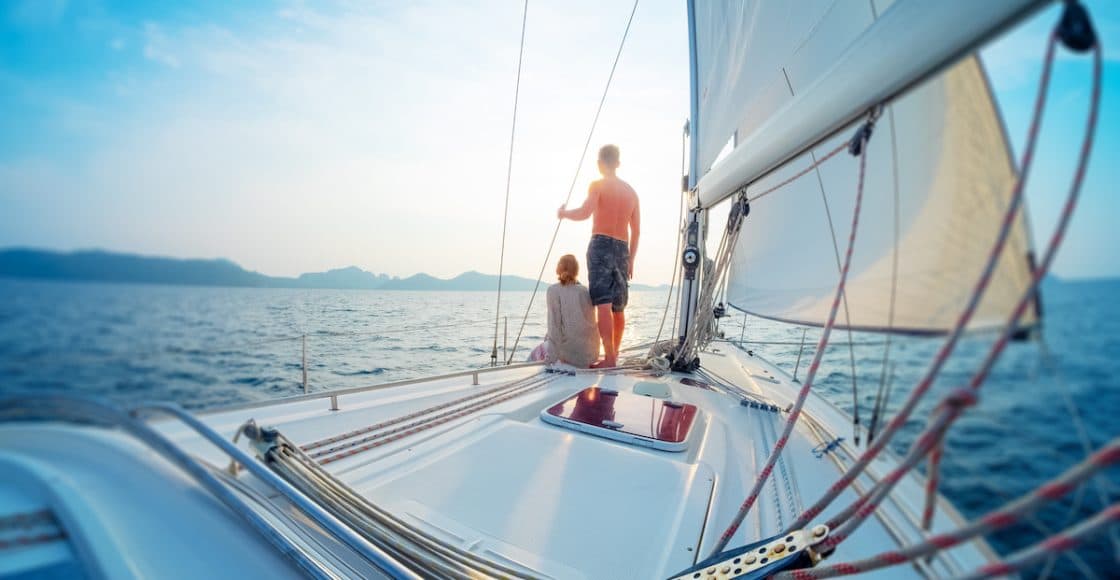
50 Nautical, Sailing & Boat Terms for Beginners

Table of Contents
Last Updated on September 29, 2023 by Boatsetter Team
Boating has its own vocabulary and if you’re going to be spending time on the water, you should understand a few basic boat terms. Knowing these will make you safer as well as more useful whether boating on your own, chartering or helping friends on their boat.
Let’s divide these words into basic nautical terms and specific sailing terms, listed in alphabetical order.
Ready to Hit the Water? Find Local Boat Rentals Near You
30 Commonly Used Nautical & Boating Terms
Here are a few expressions you’ll hear aboard both a powerboat and sailboat, or even at the dock before boarding your boat rental or charter.
- Aft – the direction toward the back or stern of a boat.
- Ashore – not on a boat but on land or a dock .
- Ballast – extra weight laid low in a boat to provide stability.
- Beam – the width of a boat at its widest point, usually the middle.
- Bow – the front of a boat. Multihulls like catamarans have more than one bow.
- Bunk – a built-in bed on a boat.
- Cabin – the sleeping accommodations on a boat .
- Cockpit – the main seating area of a boat that may also include the helm station .
- Crew – the people or staff that help drive and manage the boat.
- Deck – the top or horizontal structure that is laid over the hull of a deck.
- Dock line – the ropes used to tie a boat to a dock.
- Fender – a rubber, vinyl or foam bumper used to protect the boat at a dock; often referred to by novice boaters as “bumpers.”
- Forward – the direction toward the front or bow of a boat.
- Galley – the kitchen on a boat. It can be inside or out on deck.
- Head – the toilet or bathroom on a boat.
- Helm – the boat’s steering mechanism. It can be a tiller or a wheel.
- Helm station – the area where from which you command or drive a boat.
- Hull – the body or shell of a boat including the bow and stern.
- Keel – the longitudinal structure at the bottom of the hull and generally on the centerline. The keel helps with stability and tracking.
- Knot – either various loops tied in a line or a unit of speed which equals one nautical mile per hour.
- Line – any rope on a boat is referred to as a line – not a rope.
- Nautical mile – a unit of measurement used on the water. A nautical mile is approximately 1.2x a statue mile.
- Onboard – on a boat whether on deck, on the cockpit or below.
- Port – the left-hand side of a boat when you’re facing forward or toward the bow.
- Rudder – an appendage below the boat that is controlled by the wheel or tiller to steer the boat. A boat may have more than one rudder.
- Starboard – the right-hand side of a boat when you’re facing forward.
- Stern – the place at the back of a boat.
- Transom – the actual structure of the back edge of a boat.
- Wake – the turbulence left behind a moving boat.
- Waterline – the place where the hull of a boat meets the surface of the water.
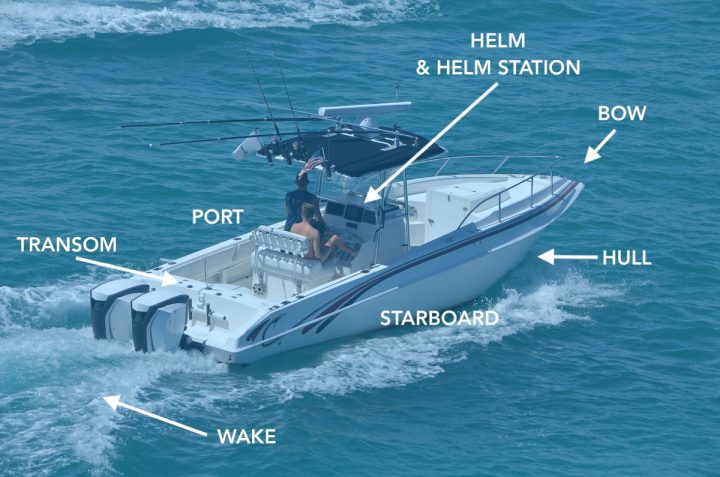
20 Sailing & Sailboat Terms
Within boating, sailing has its own specific vernacular. You’ll want to understand it before you step aboard a sailboat to help crew or when taking a lesson.
- Apparent wind – the combination of true wind and the motion of the boat at the time. It’s the wind you feel onboard.
- Boom – the horizontal pole which extends from the mast aft. It holds the bottom of the mainsail.
- Ease – to adjust sails outward or away from the centerline of a boat.
- Halyard – the line used to raise a sail whether a mainsail or a headsail.
- Headsail – a sail that is forward of the mast. It can be a genoa, a jib, a staysail or a small storm sail.
- In irons – technically a point of sail when you’re head-to-wind meaning the bow is pointing directly into the true wind and the boat is unable to maneuver.
- Jibing (also spelled gybing) – changing direction where the stern swings through the eye of the wind.
- Leeward – the direction away from where the wind is blowing.
- Mainsail – the primary sail on a boat which is usually attached in some way to the mast and boom. On most sailboats it’s the primary source of power.
- Mast – the vertical pole that supports the sails. The mast itself is supported by the rigging.
- Points of sail – the boat’s direction under sail relative to the true wind . The points of sail are: close-hauled, close reach, beam reach, broad reach and dead run.
- Reefing – shortening or reducing the area of a sail to de-power a sailboat usually used in a strong wind.
- Sheet – the line that controls the angle of a sail. There are mainsheets, jib/genoa sheets and others.
- Shroud – a part of the boat’s rigging that supports the mast from side-to-side
- Stay – a part of the boat’s rigging that supports the mast fore and aft.
- Tacking – changing direction under sail where the bow swings through the eye of the wind.
- Trim – to adjust sails inward or closer to the centerline of a boat.
- True wind – the actual wind that is blowing – both direction and speed.
- Winch – a rotating drum used to help control lines with a lot of pressure on them. A winch is cranked with a winch handle.
- Windward – the direction from where the wind is blowing.
Browse Available Sailboat Rentals Near You

Zuzana Prochazka is an award-winning freelance journalist and photographer with regular contributions to more than a dozen sailing and powerboating magazines and online publications including Southern Boating, SEA, Latitudes & Attitudes and SAIL. She is SAIL magazines Charter Editor and the Executive Director of Boating Writers International. Zuzana serves as judge for SAIL’s Best Boats awards and for Europe’s Best of Boats in Berlin.
A USCG 100 Ton Master, Zuzana founded and manages a flotilla charter organization called Zescapes that takes guests adventure sailing at destinations worldwide.
Zuzana has lived in Europe, Africa and the United States and has traveled extensively in South America, the islands of the South Pacific and Mexico.
Browse by experience

Explore articles
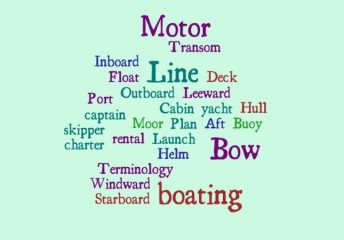
Boating Terms Every Boater Should Know
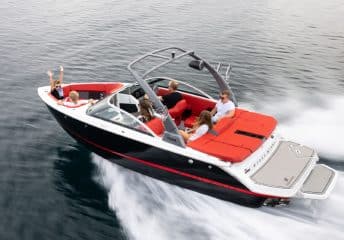
10 Best Boats Under 100K
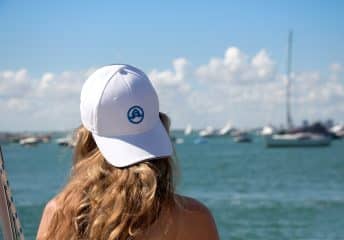
Florida Boating Safety Act of 2022 (SB 606), Effective as of Jan. 1, 2023
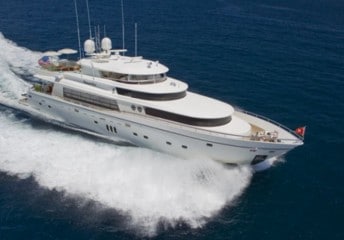
How much do private yacht charters cost?
The Only 50 Sailing Terms You'll Need To Know (With Pictures)
Ever get confused by all those odd sailing terms? Starboard, tack, jib… Well, no worries. In this article, I'll go over the most important sailing terms for beginners.
This is a great resource for beginning sailors that need an overview of the most important sailing terms without drowning in it . For a comprehensive list, check out this Wikipedia glossary of nautical terms . There are A LOT of nautical terms there. But no one in his or her right mind will read through that entire page (it has 48.434 words!). There are a lot of obscure words listed that no one really uses anyways. So in this article, I've filtered out the most important ones to get you up to speed quickly. I've also added pictures so you'll know what we're talking about.
Let's jump straight in. For the sake of good manners, I have categorized them by topic. If you are looking for a specific term, just ctrl+f your way directly to it.
Here are the only 50 sailing terms you'll need to know:
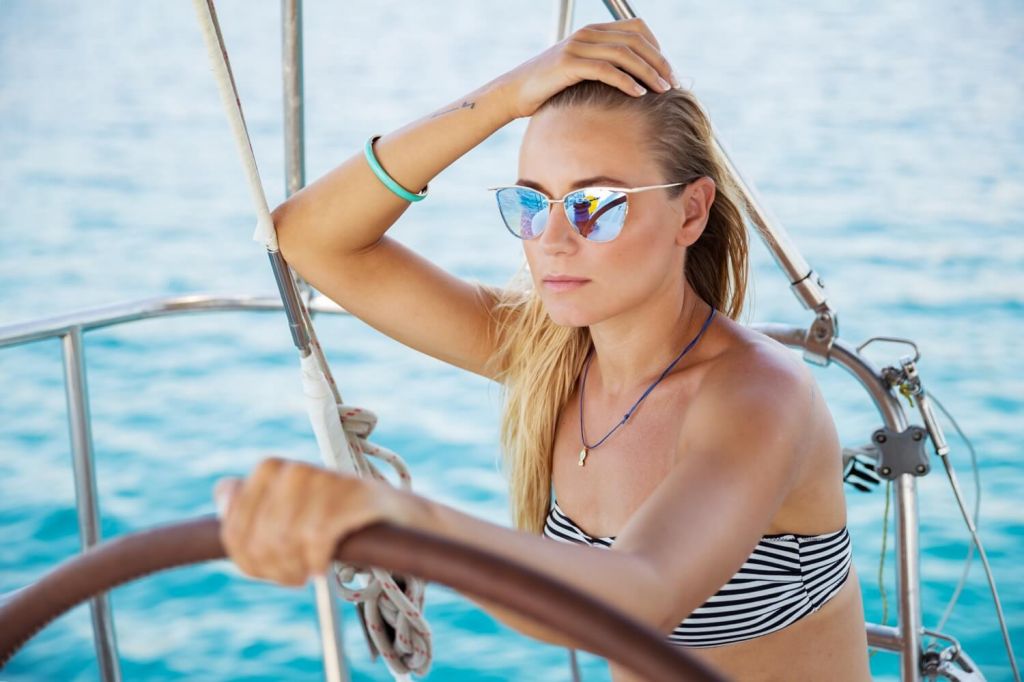
Orientation
Parts of the boat, parts related to sails, other terms.
...because it isn't as easy as 'left', 'right', 'front' and 'back'. No, no.
Port is the left side of the boat. It's as simple as that. I'm not entirely sure why don't they just call it 'left' these days. The name came to existence because centuries ago, you always docked your big boat with the harbor (port) being on the left side. And the word stuck with us till today.

Starboard is the right side of the boat. If in a car, you say 'look to your right', on a boat, you say 'look to the starboard'. Again, you might as well just call it 'right'. Oh, wait… you wouldn't seem as cool if you did. Alright, let's keep calling it starboard.
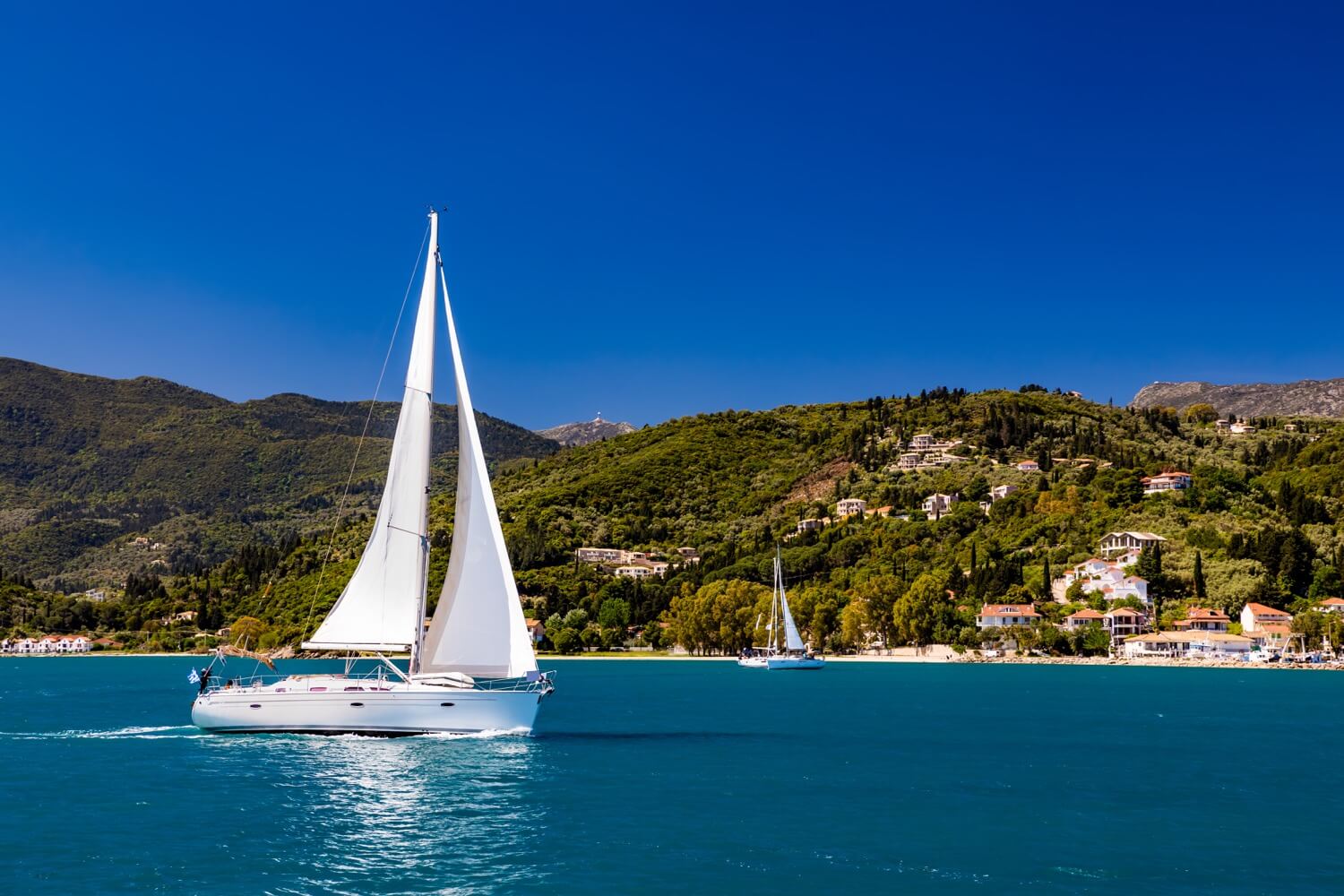
The bow is the front of the boat. The word likely comes from the Middle Dutch 'boech' (nowadays spelled 'boeg'). If you call it 'front' instead, you will get your message across just as well. But it won't get you the admiring looks from those around you.

Stern is the back of the boat. That is where you, as a captain, will spend most of your time. Whether you will force your crew to call it 'stern' or let them use the word 'back', like the dry land creatures they are, is up to you. After all, you are the captain.

The windward side of the boat is the side facing into the wind. So if the wind is coming from the right side, the windward side is on the right. Unlike some of the previous ones, this term actually makes sense - at times you need to talk about a direction not fixed in relation to the boat, but rather relative to the direction of the wind.
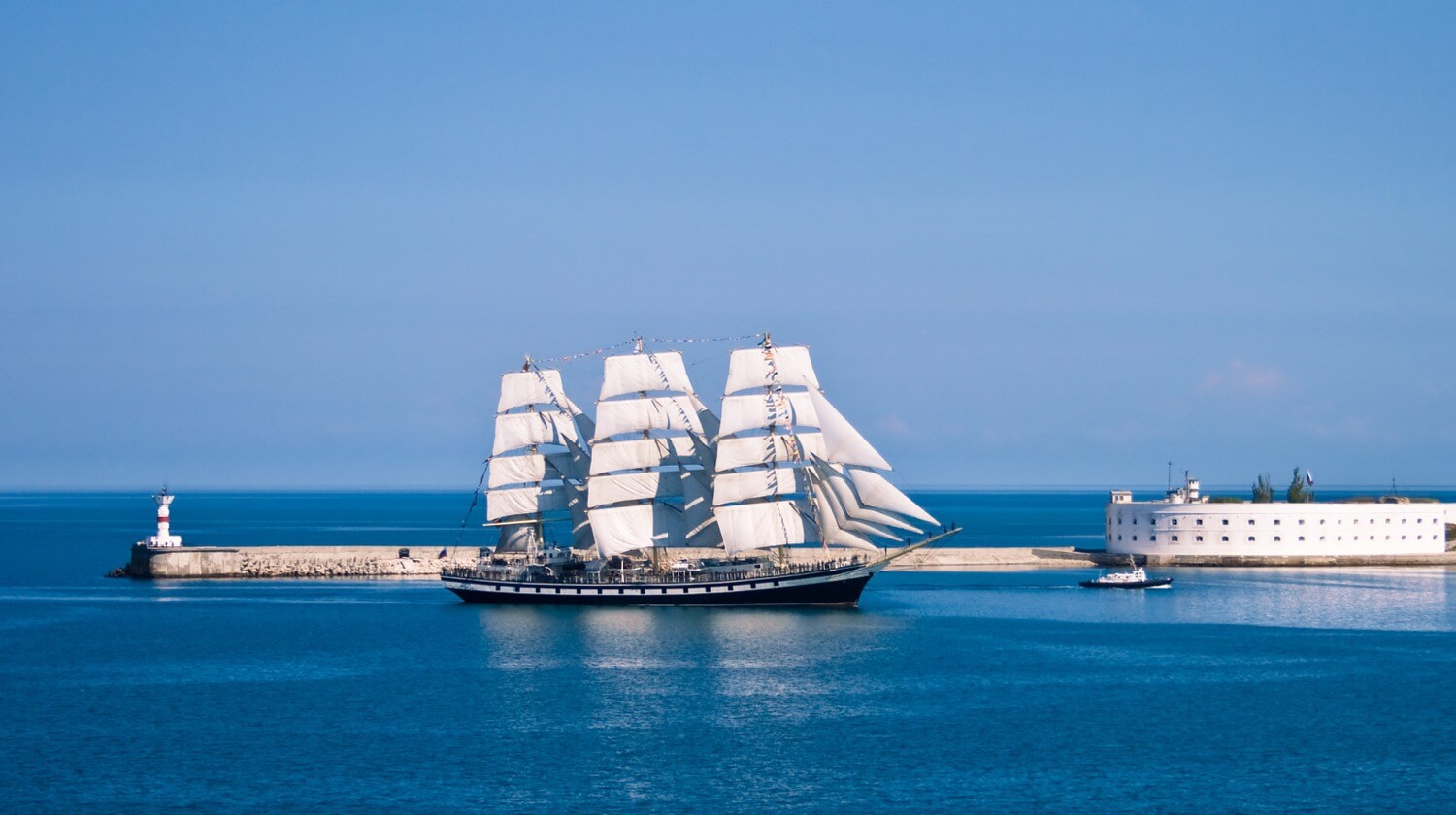
Leeward side of the boat is the lee side. If the wind is coming from the right side, the leeward side is on the left. Note that neither windward nor leeward specify the angle of the wind. Thus even if the wind was coming 20 degrees right off of the direction of the boat, so almost from the front, left would still be considered the leeward side.
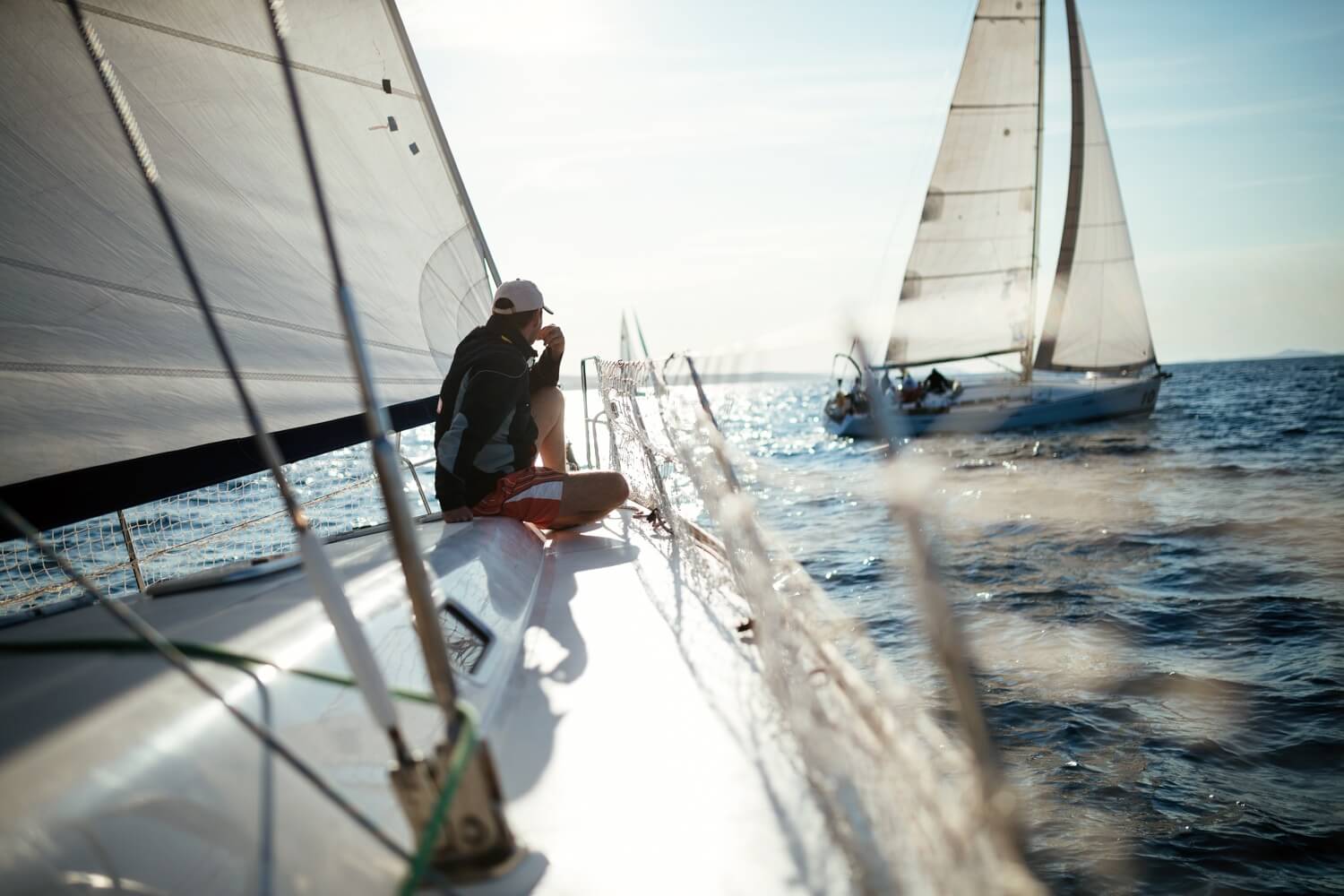
Since there are gadgets and parts on the boat that you won't see anywhere else, it only makes sense they all have their own special name. You want to know these because unlike the direction terms where you can do with 'left' and 'right', you don't want to call a tiller 'that stick thing back there'.
Helm is the boat's steering wheel. In this case, I forgive those who came up with this name, since it is shorter than 'steering wheel' and thus saves valuable time that we can spend on sailing. Though I doubt linguistic economy was the reason.

Tiller is the long stick that operates your boat's rudder. A steering stick, if you will. It has the same function as a helm does, but it is usually used on smaller boats, where a helm would take up too much space. Or by people who prefer it to a helm, since a tiller offers a bit more in terms of response.
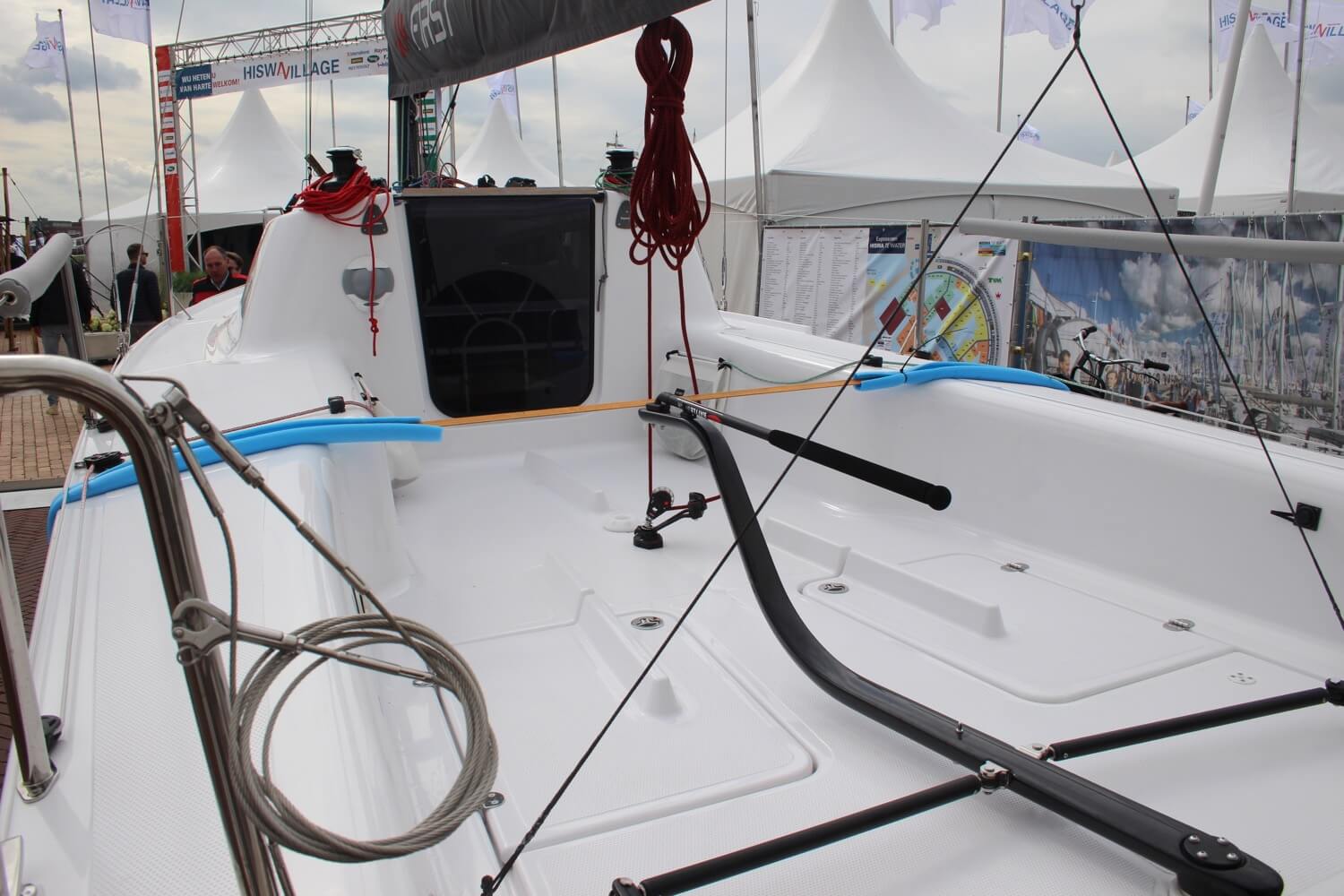
The rudder is the long, flat piece of metal or wood that sits underwater below the back of your boat. Connected to a tiller or a helm, it is used to control the direction of your exciting voyage. By the way, since aerodynamics and hydrodynamics work in similar ways, a plane is also operated by a rudder. Though that one isn't underwater. Hopefully.

Hull is the boat's body. Whatever the shape or size, whether opened on top (like a dinghy) or closed by a deck, (like a traditional sailboat) it's all called a hull. Structures sitting on top of the deck, like a deck salon or cabins, aren't considered a part of the hull anymore.

The keel is an underwater fin below the boat's belly. The sizes and shapes vary, sometimes it is relatively short and goes deep, (fin keel) sometimes it runs from the front all the way to the back (full keel or ballast keel). It is there mainly for stability and to help maintain forward direction when sailing.
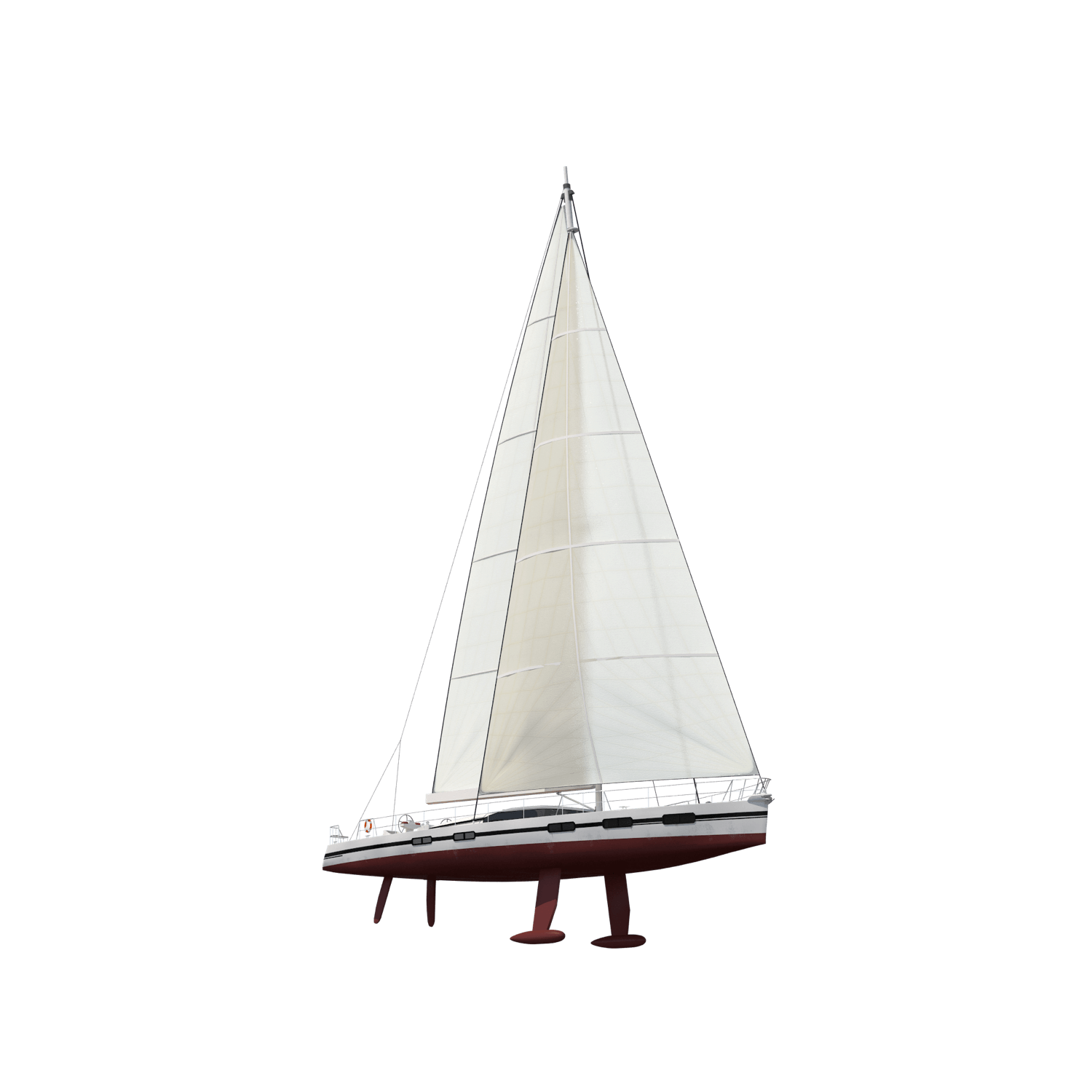
The cockpit is the area where a boat is operated from. On sailboats, it is usually in the back and it is an open area without a roof, though this varies. You will find the rudder control and winches there. In 'smaller' (below 70 ft or so) sailboats this area oftentimes doubles as a deck dining place with a table and seating.

The bimini is a sun roof or shade that is covers the cockpit, and is generally attached to a steel frame which runs over the cockpit.
This is where things tend to get confusing. There are a whole lot of parts and a whole lot of names for them. It pays off for you and your crew to know them though, as during the stormier moments, you all want to be on the same boat (ha, ha) linguistically, as every second counts.
Lines are ropes. Not much more to add here. I suppose a 'line' sounds a bit fancier than a 'rope'. One thing this article will teach you is that if there is the slightest crack in the wall of your boat, linguistic elitism will leak its way in.

This one is quite self-explanatory. The mainsail is the main, largest sail of the boat, attached to the mast on the side and the boom at the bottom. It has a triangular shape and serves as the most important sail, the first one you should get acquainted with if you are just starting out.
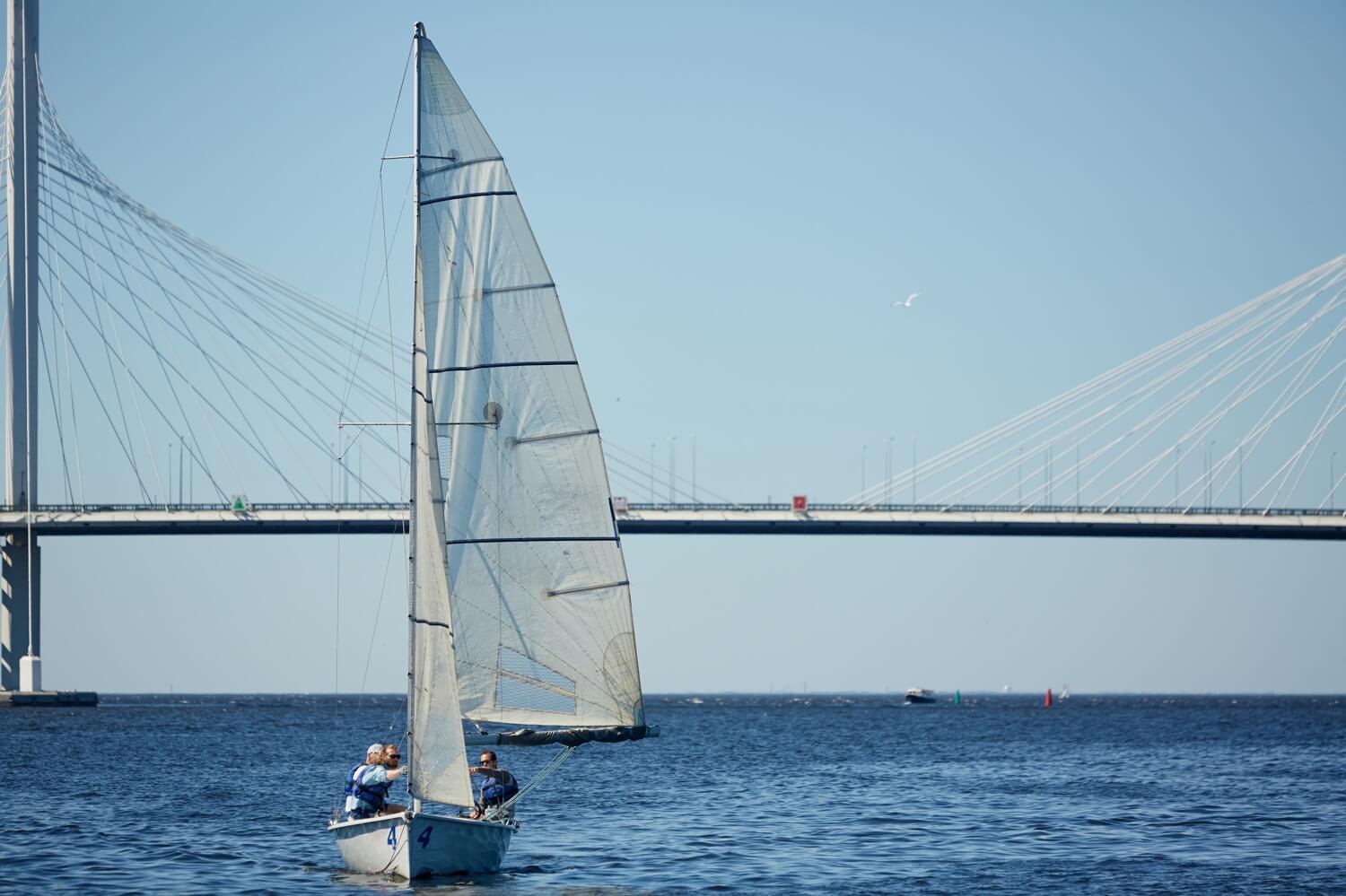
The jib is the front sail of your boat, sometimes also called the genoa. That is as long as you are sailing on the traditional sloop - the classical two sail setup you see the most often. The jib is wrapped around the line that goes from the top of your mast to the boat's bow.

Spinnaker is the third type of sail you are the most likely to encounter on your travels. It goes in front of your boat and has a half balloon or kite-like shape. This is because it is constructed specifically for sailing downwind. Its purpose is to grab as much backwind as it can and drag your boat forward. It is not attached to the boat most of the time like the mainsail or the jib, instead, it is stored separately and used only when needed.

The mast is the tall, vertical pole that goes from the floor of your salon, through the deck, meters above your boat. All the sails are attached to it, also radars and lights, giving sailboats radio and visual visibility far greater than that of equally sized motorboats. Take that, ya noisy stinkies!

The boom is the horizontal pole right above the deck, attached to the mast at the right angle. The bottom of the mainsail is attached to it, it is used to determine its shape and direction. It is also where the mainsail is often stored, folded and covered with a protective sheet. The boom is also among the top causes of injuries on a sailboat, as in certain winds it tends to swing with force powerful enough to knock a few grown men overboard. Stay away from its reach at all times when under sail.

The forestay is the cable going from the top of the mast to the very front of the bow. It is there to hold the mast in place. Sometimes you will find people refer to it as the 'headstay'. It is often made of steel, so it is safe to hold on to it when you are pretending to be Jack on the bow of the Titanic's, the boat hits a wave and you lose your balance.

This diagram is from our guide on sailboat parts , which I really recommend for beginners. It walks you through all the most important sailboat parts in normal words.
The backstay is the cable going from the top of the mast to the very back of the boat. In many cases it is doubled at the bottom, each end attached to one corner of the back of the boat so that they don't interfere with space and provide more stability for the mast. Just as with forestay, these are made of steel.
Shrouds are the cables going from the top of the mast to the left and right side of the boat. Sometimes there are four, two on each side. Together with forestay and backstay, they make sure your mast withstands all the forces exerted on it when the wind pushes the sails.
The foot of a sail is its bottom edge. If you imagine a sail as a triangle, the base is called the foot. You probably won't use this term while sailing, but when researching proper sail trim, it is likely you will stumble upon it.
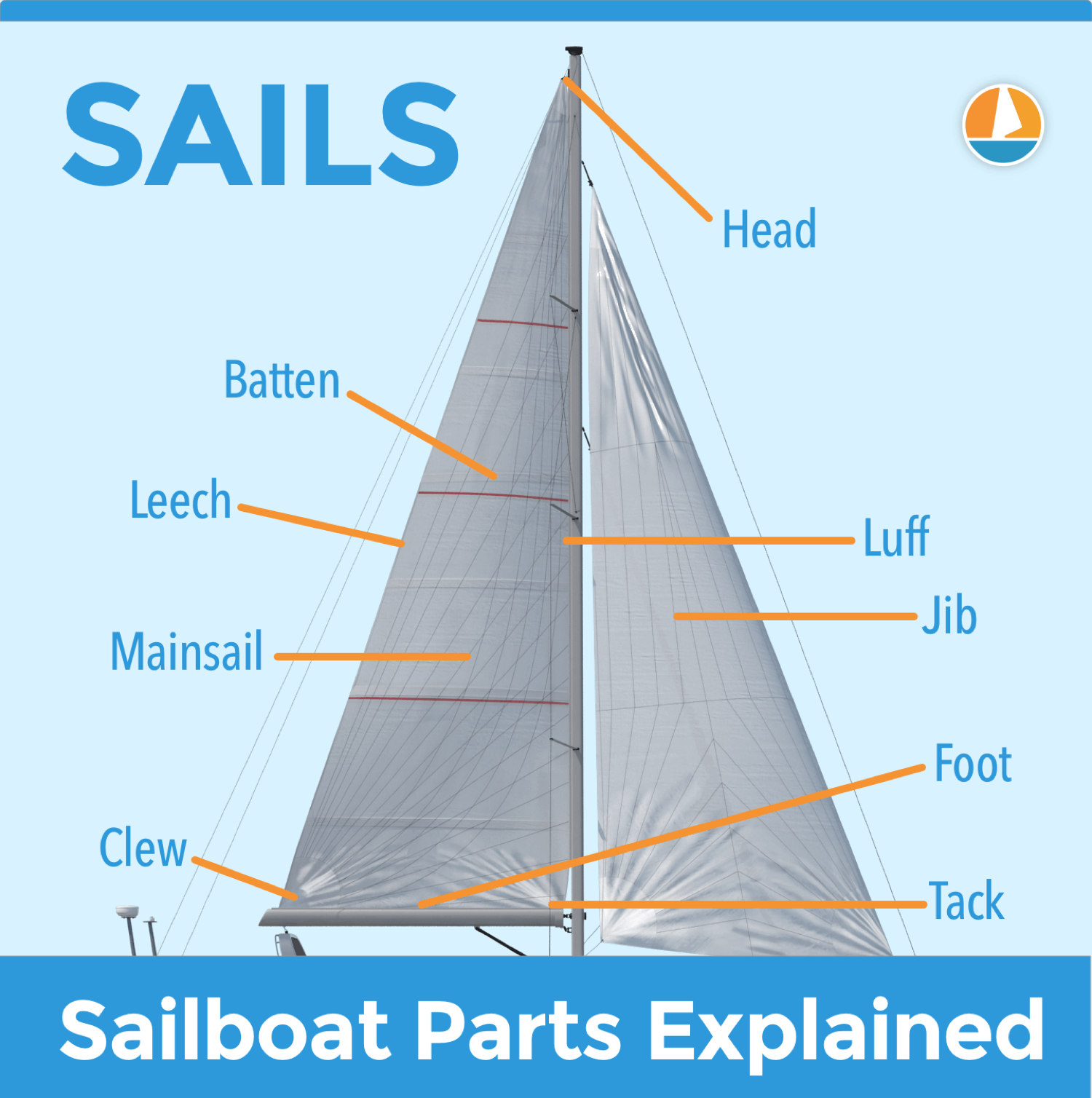
This diagram is again from our guide on sailboat parts , which I really recommend for beginners. If you're looking for a good starting point to learn your sailboat ins and outs, this article is perfect for you.
Leech of a sail is its back side edge. Thus it is the part closest to you when you are standing at the helm. Just as with the foot, this is a term quite often used when describing sail trimming techniques, since the shape of the leech determines the shape of the whole sail.
Luff of a sail is its front side edge. Thus the part the furthest from you when you are standing at the helm. For mainsail, it is the edge that is right next to the mast, for the foresail it is the edge right next to the forestay. Just as with foot and leech, the shape of these edges determines the overall shape of the sail so you will most likely encounter these terms in trimming lessons and tutorials.
The head of a sail is its top corner. On a traditional sloop, you will have the 'main head' and the 'jib head'. There is usually a reinforcing patch of some kind on these corners, as you will find a hole in them to which a line is attached.
It's also something else entirely, but more on that later ...
Halyard is the line attached to the sail head. On your boat, you will most likely have two. The 'main halyard' which is what you use to hoist your mainsail if it is folded on the boom, and the 'jib halyard' which holds the jib head up.
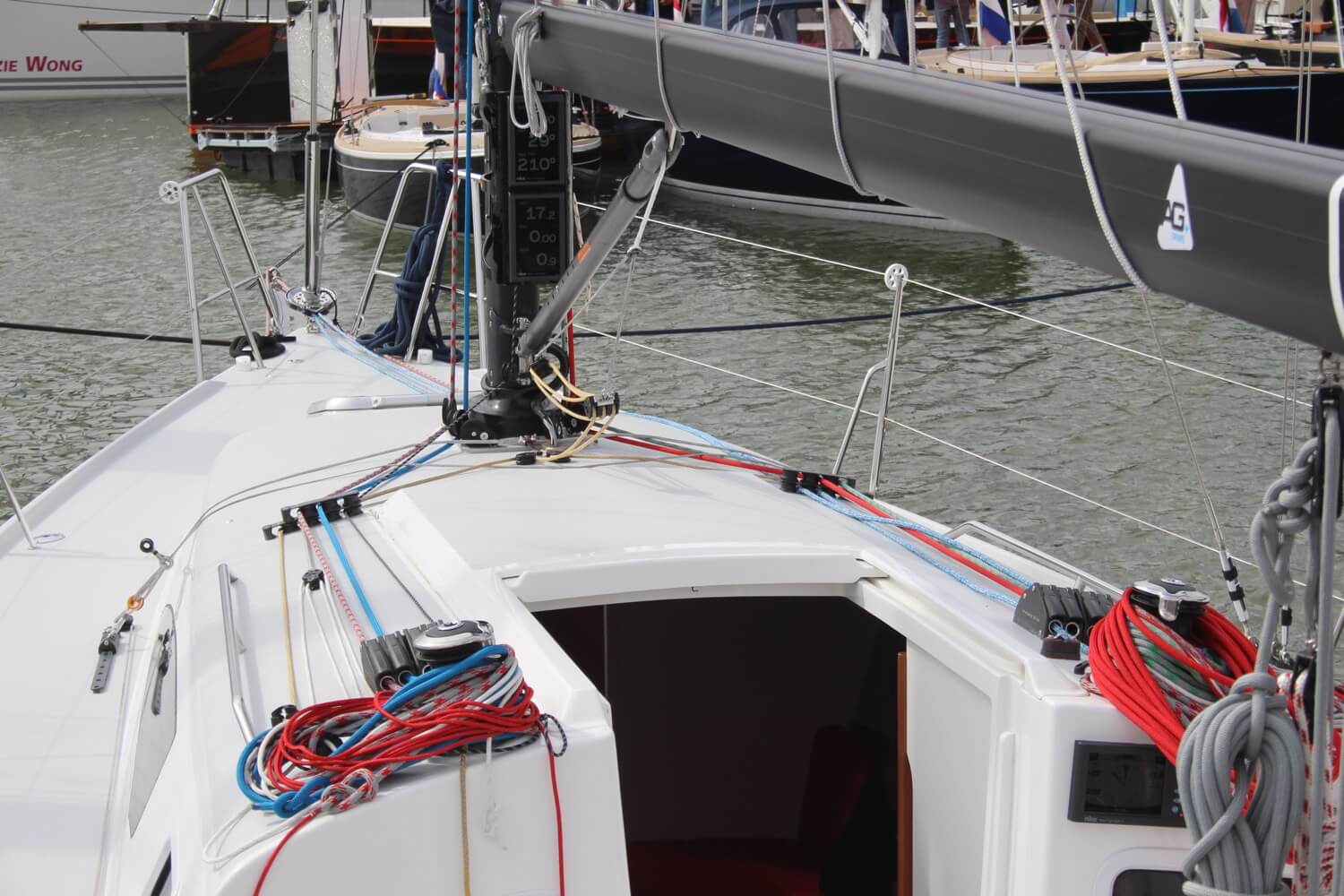
Clew of a sail is its back corner. The line attached to the 'main clew' will be used to hoist your mainsail if it is wrapped inside of the mast. The line attached to the 'jib clew' will be used to open the jib on most sailboats since jibs are most often wrapped around the luff.
Telltales are light, usually cotton or wool pieces of ropes attached to a sail, showing you the airflow around it. These are important because they help you determine if your trim is effective or not. Because of the material they are made of, you might sometimes encounter them being called 'woolies'.
Vang, or a 'boom vang' is a device pulling the boom down. This is important because it controls the tension of the mainsail, influencing its shape greatly. You won't find it on every boat though. Holiday cruisers often don't have it, as it is a piece of equipment focused on performance and thus not necessary for your average trip.
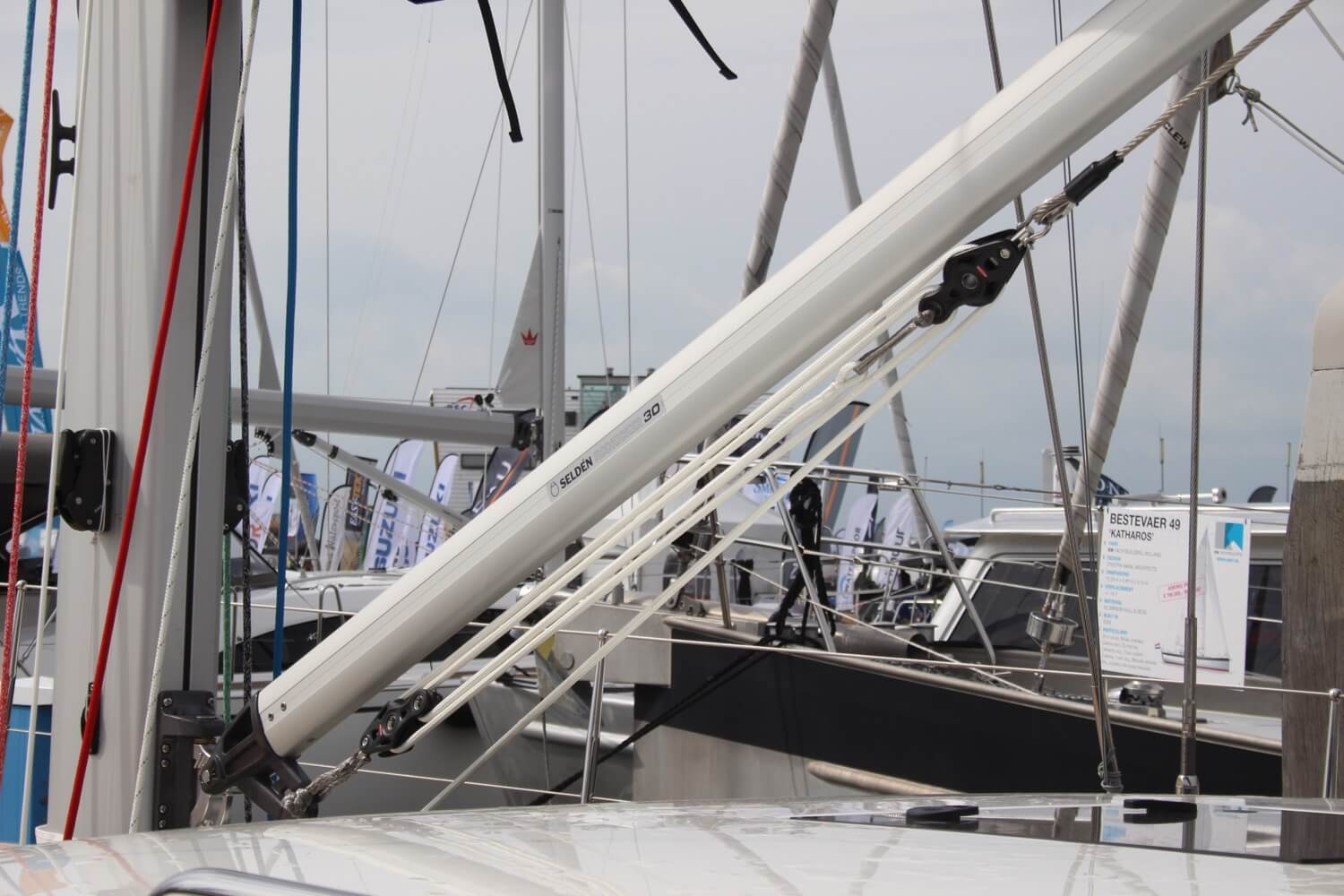
Topping Lift
The topping lift is a line that is attached to the aft (back) end of the boom and runs to the top of the mast. It supports the boom whenever you take down the mainsail.
Also referred to as a 'horse', the traveler is a side to side track to which the boom is attached, allowing the control of the extent to which the boom goes off the centerline. This is important especially if the wind is blowing from behind and you need to control the angle of the mainsheet.

Outhaul is the line attached to the mainsail or the jib clew, allowing the control of the foot tension. This is important for determining the sail shape - for instance in stronger winds, you want the foot to be more tense to achieve a more effective airflow as opposed to slower winds where you can allow the foot to arch more.
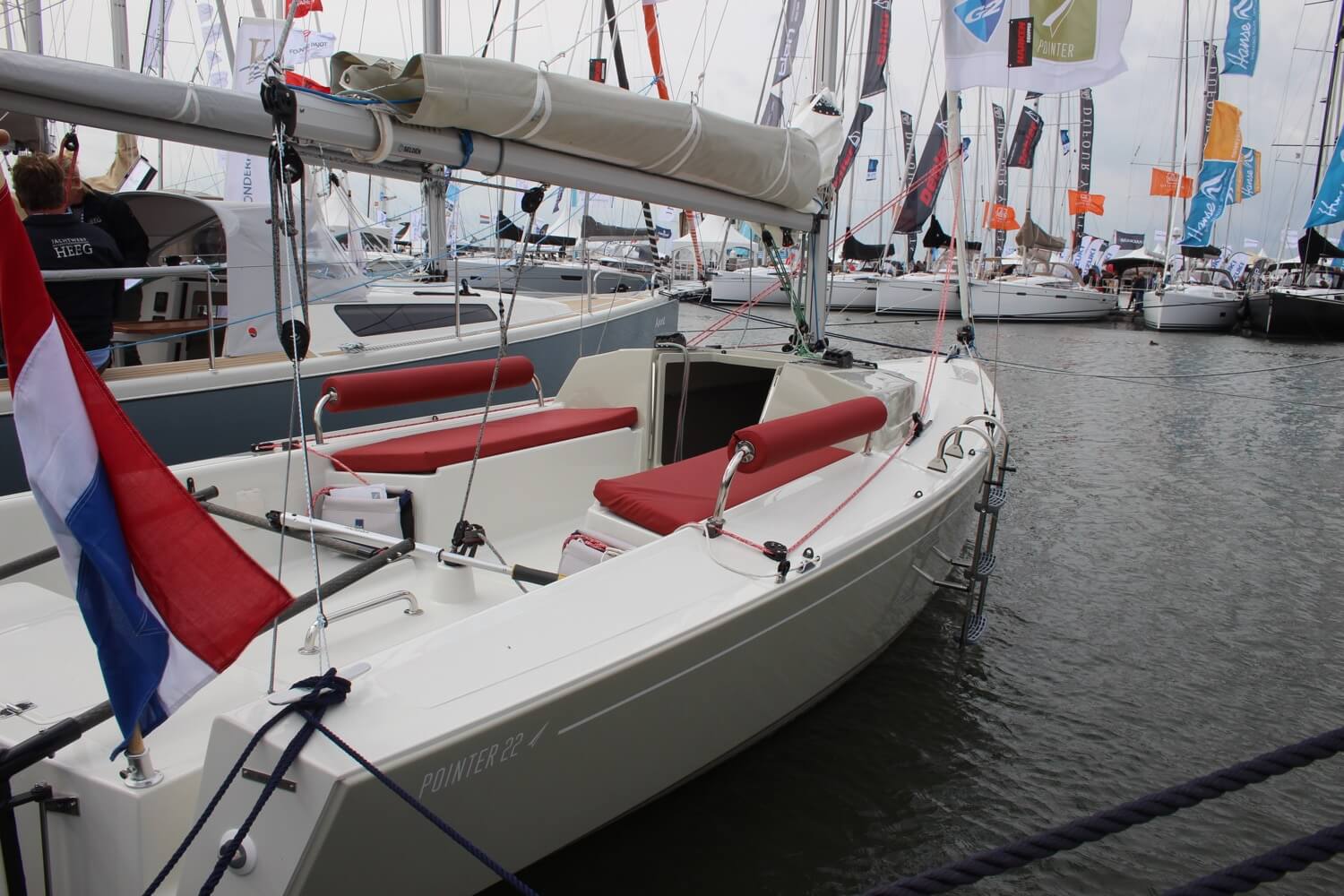
Reefing is reducing the sail area to lessen the power exerted on it by the wind. You may want to reef if the wind is getting too strong for your boat, or if it is changing too rapidly, as an overpowered boat is difficult to control. Fun fact: they say that when you feel you need to reef because the wind got too strong, it is already too late to reef.
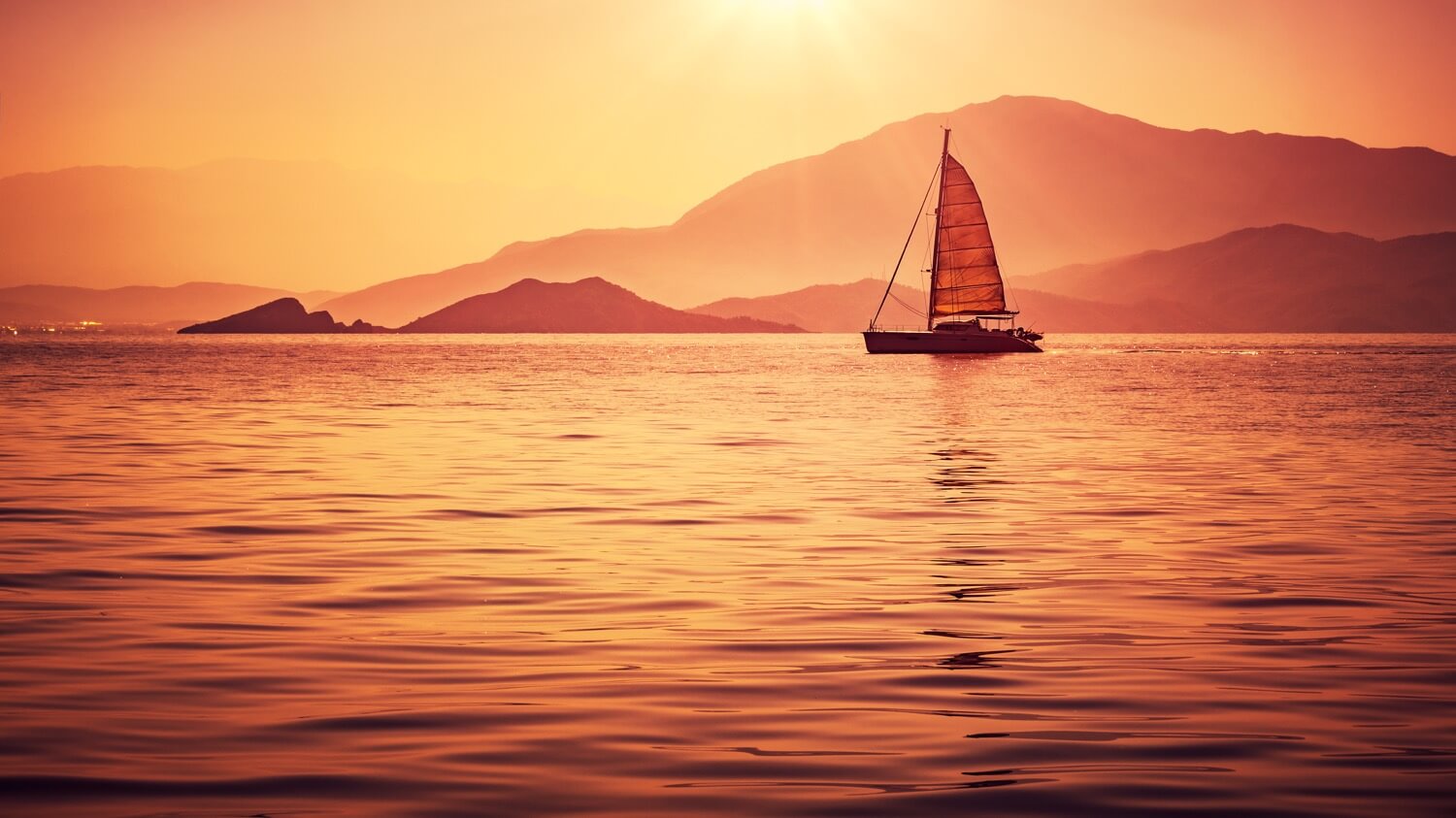
A batten is a slat placed horizontally in the body of the sail to support its shape. You will not find them on all sailboats, it is a performance-enhancing element that many cruisers lack. It helps tremendously as without it, sails tend to belly out and lose their shape under certain conditions.
The cleat is a piece of fitting where a line can be secured and immobilized, even if under great tension. It usually consists of two cogwheel-like pieces fastened close to each other, in the middle of which the rope is placed, unable to move thanks to friction. This type is great as it allows for a quick release. Sometimes though, it is a simple piece of metal or plastic where the rope is tied.
...and then there are all those things that just float around you when sailing, those little things that are the reason for you having to carry a dictionary in your pocket.
Fenders are bumpers allowing some contact with other boats or piers while docked, without scraping the paint. They are often balloon-shaped, made of rubber or some relatively soft material. They are usually attached to the boat's railing and you move them around as you need.

The beam is the width of the boat. Could be just called width, I know. The word comes from the fact that there are transverse reinforcing beams in the boat hull and deck. Next time you are choosing your charter boat for holidays, you will know what this attribute means.
True wind is the actual direction and speed of the wind. This is different than the apparent wind, which is wind direction and speed relative to the boat. Apparent wind is a combination of the true wind and the headwind, which is the wind the boat experiences solely by being in motion.
The berth is a sleeping space on a boat. Thus if a boat has eight berths, it means eight people can comfortably sleep on it. Note that this often includes the salon couches, so a berth is not necessarily a space in an actual bed for one person.
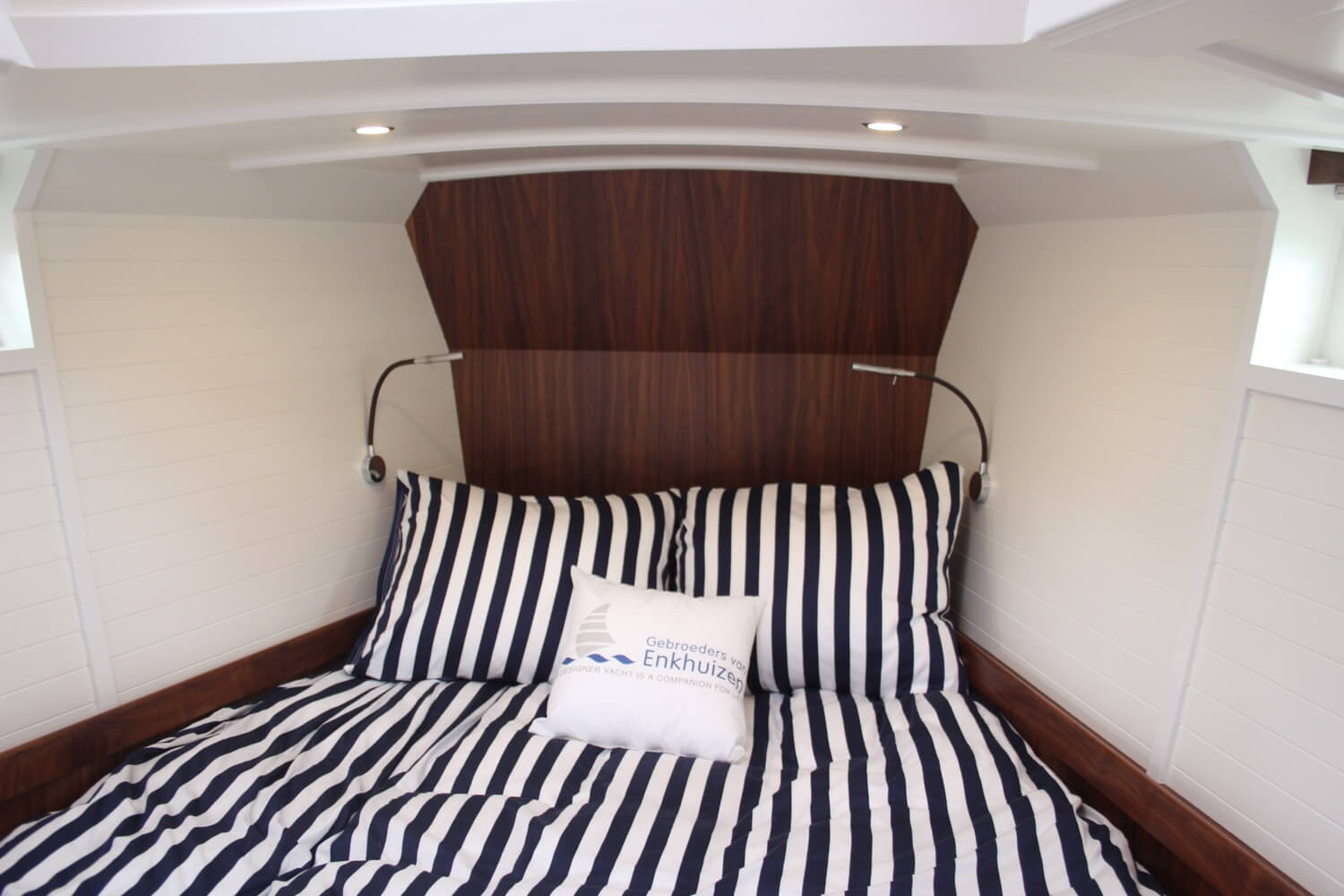
Boat's draft is the distance from the water surface to the deepest point of the boat. In other words, the draft is the minimum water depth you can go to and not scrape your hull or keel. Better double this number when sailing, just to be safe, as hitting the seabed can have disastrous consequences.
Tacking is zig-zagging towards your destination. It is necessary in case your destination is in the direction of the wind since sailboats can not go directly into it. Since the closest to the wind direction you can sail is around 45 degrees, you have to change direction left and right from your desired course.
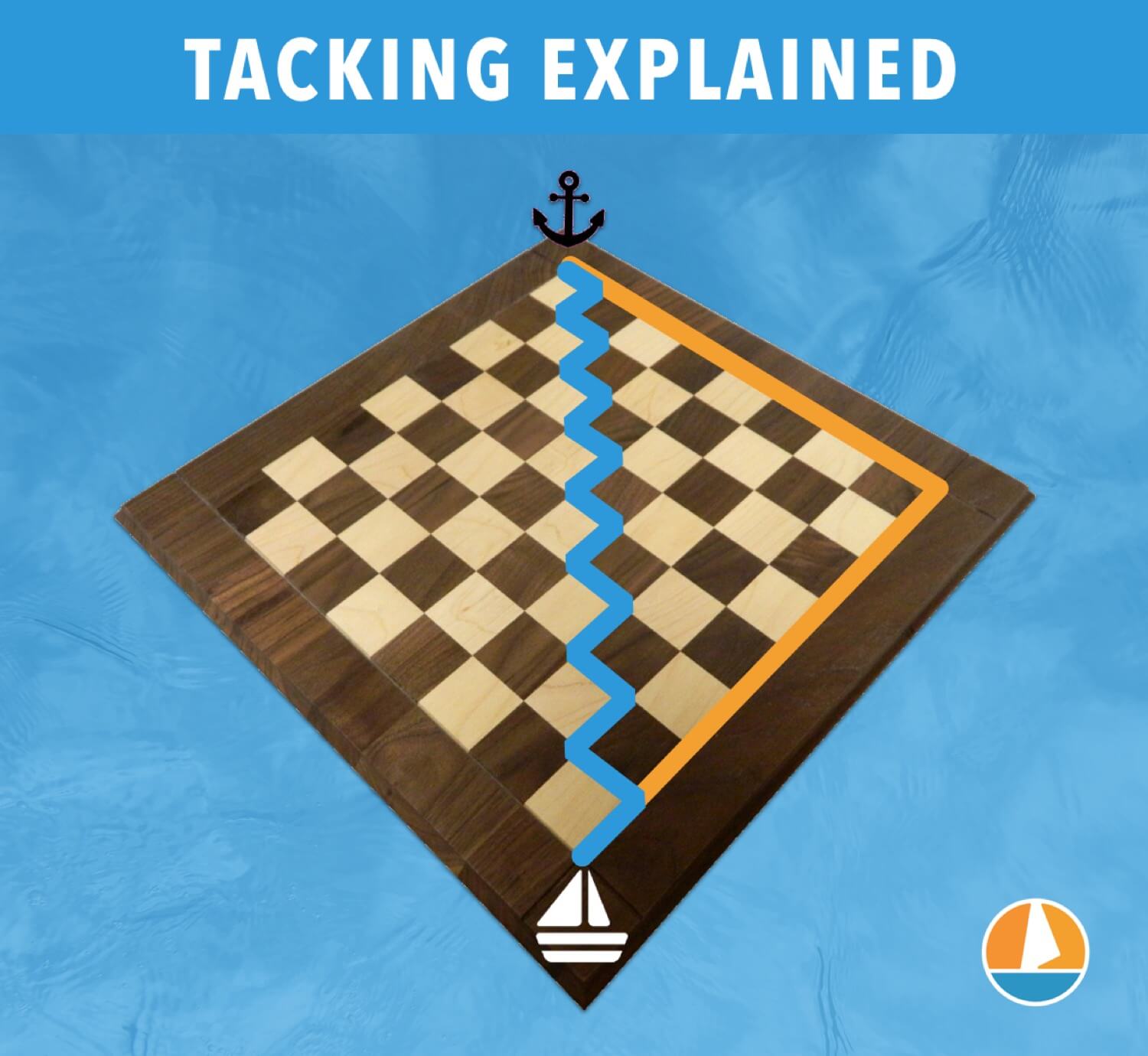
This diagram is from our guide on sailing into the wind for beginners , which explains in 7 simple steps how to get good upwind sailing performance.
Bareboat is a boat without a skipper. You will encounter this term in boat charters and it means you rent the boat without any crew, thus you need to operate it yourself. It is the best way to sail unless you enjoy living in close proximity to a sea wolf who you also have to feed.
The chart is a nautical map. It differs from classical maps as it depicts information relevant for a sailor - water depth, navigational hazards, seabed material, anchorages and so on. Formerly made of paper, these days made of ones and zeros. As is everything in this digital world.
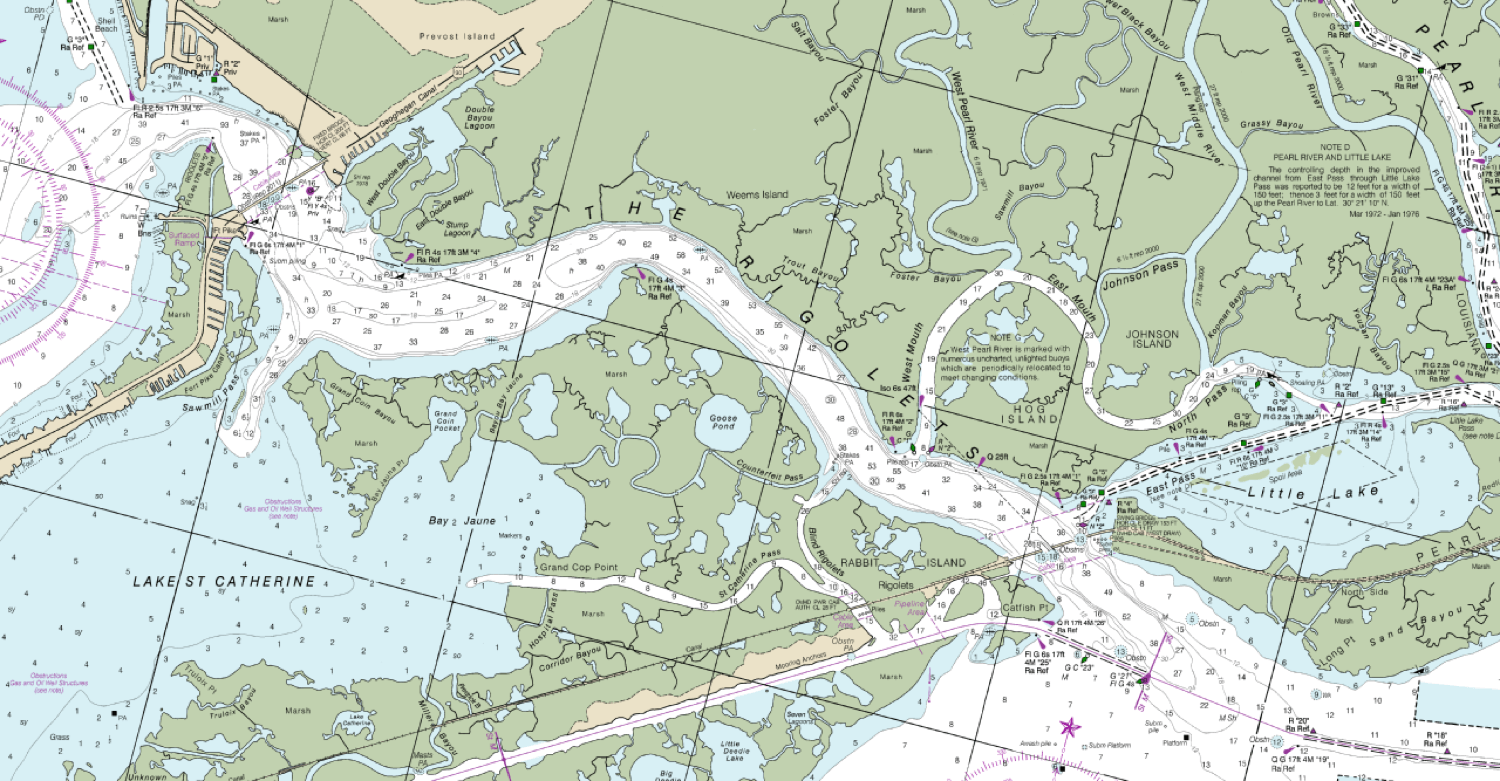
We have a guide that explains all the different chart types clearly for beginners - read it here .
Galley on a boat is its kitchen. Also a medieval warship, but if you find this term in a boat's description, war is not likely what they have in mind.

Heads on a boat is the bathroom. Though in all my years of sailing I have never ever heard anybody use this term instead of a 'bathroom'. I suppose saying that you are going to use the heads just sounds odd.

A knot is the unit of speed of boats. It is equal to one nautical mile per hour. That is 1.852 kilometers per hour or 1.5078 miles per hour. Though a bit confusing and annoying at times, you will have to get used to this, since most of your boat's instruments will use this unit. It dates all the way back to the seventeenth century when boat's speed was measured with a rope with knots tied on it.

Mooring is attaching the boat to a buoy that is anchored to the seabed. This is usually a cheaper option to docking in a marina. It also means larger space between the boats anchored in the same area, thus more privacy. Though you will have to use your dinghy to get to shore instead of just stepping on the pier directly from your deck.

A salon on a boat is its living room. On smaller boats, it is usually in the same room as the boat's kitchen and the captain's corner with navigation instruments.

A skipper is the captain of a sailboat. If you ask me, the word 'captain' is much better than a skipper, which to me sounds like a small boy who sits on the shore the whole day, skipping stones. But hey, who am I to talk.
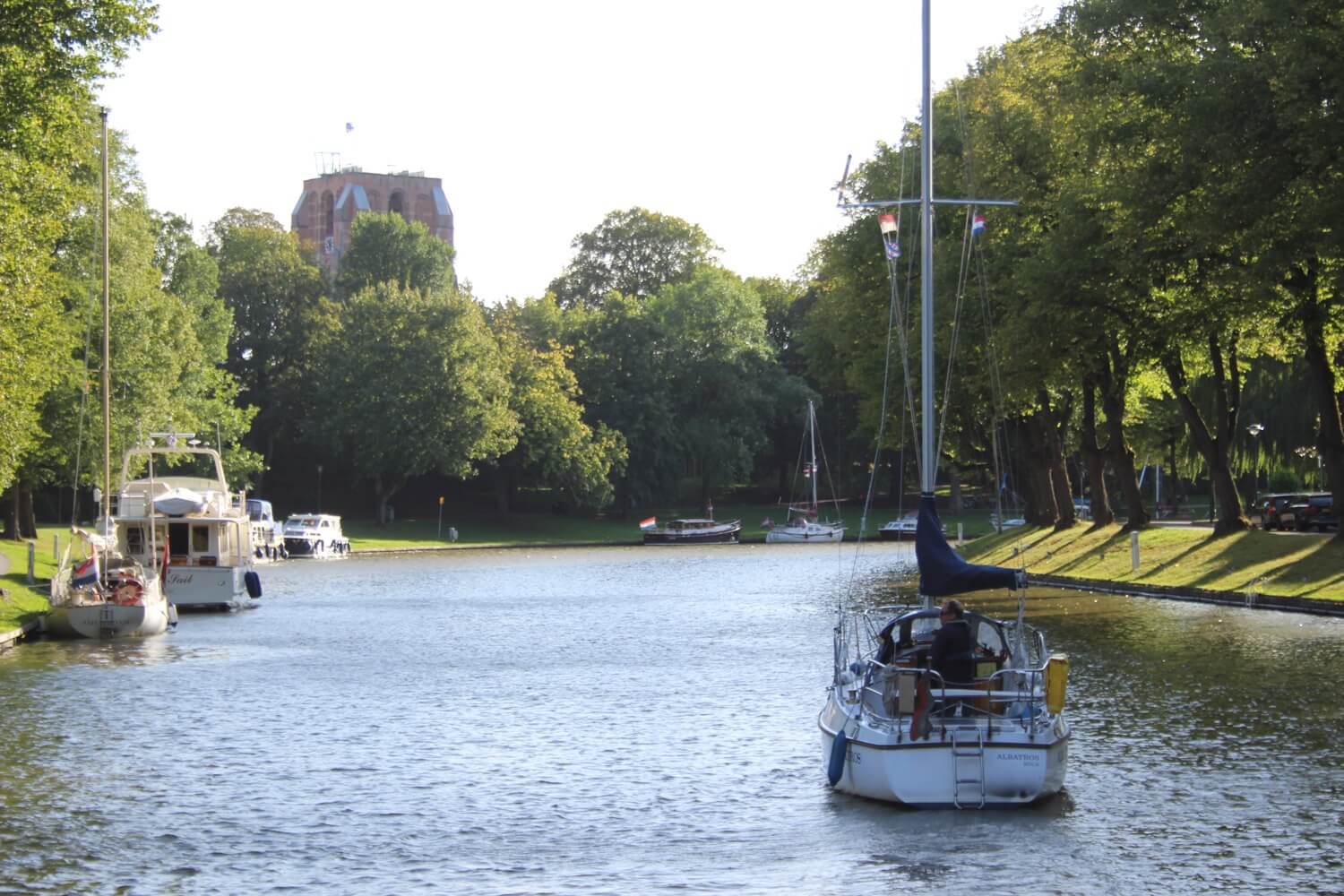
A monohull is a classical boat with a single hull. A boat with two hulls is called a catamaran, or a 'cat'. Although rare, there are also trimarans, boats with three hulls. Multihulls with four or more hulls do happen but they are an unnecessary freak of nature.
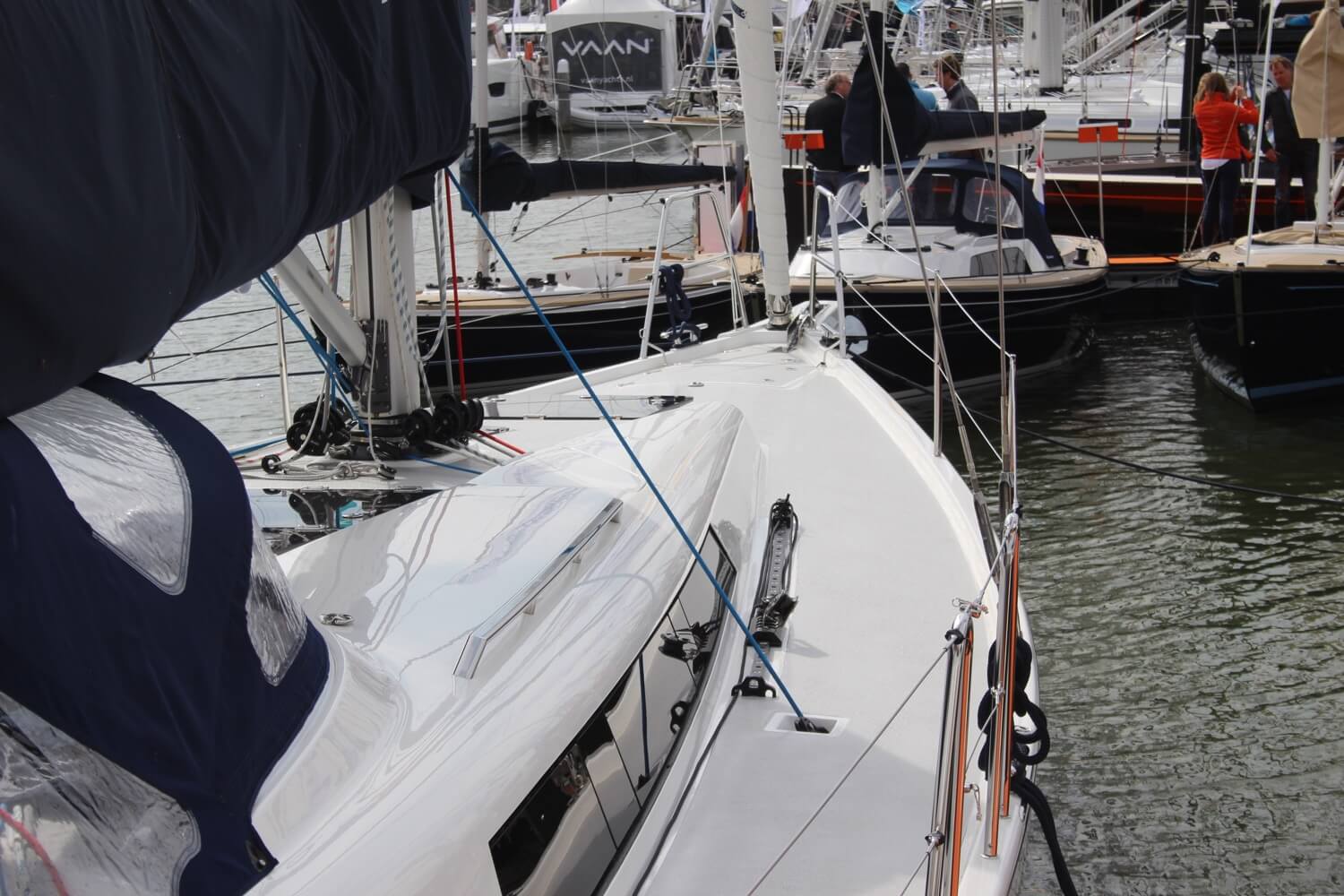
So there you have it. Fifty sailing terms you will encounter the most when traveling or learning. I know you might think some of them are a bit unnecessary since they have a perfectly fine 'real world' equivalent. I agree. But until the tradition changes, you might want to get some of these under your skin.
A boat's freeboard is the distance from the upper deck to the waterline. Classic yachts have low freeboards, so they appear to lay deeper in the water, as opposed to more modern yachts, which have a higher freeboard. It literally means 'free-board' : the amount of visible board.
The lunch hook is a light anchor setup that is used to moor small yachts temporarily. It typically uses a lightweight anchor on a short scope that takes little effort to set. The lunch hook is only used when the crew is on board and will be monitoring the anchor.
In naval architecture and ship design: “Head” = WC = Bathroom. A toilet is still a toilet. The toilet is in the head. In olden day, the toilet was a hole in the head.
Hi Rich, you’re absolutely right. I’ve corrected the error. Thanks for pointing it out.
A nautical mile is one minute of a degree, so if you travel 60 nautical miles that means you have gone 1 degree around the “globe”. (Note: arc length not actual length.) This is the original definition. As such the average was agreed upon and the lengths given a standardization. Which you mentioned.
As such 1 knot is to travel one nautical mile in an hour.
Also 1.5078. I think you made a mistake as it should be 1.1508 miles to a nautical mile.
Thanks for the information. Sorry about being a pedantic mathematics teacher.
So, where is the “nautical mile” calculated from, the equator or one of the tropic lines?
Just to clarify a nautical mile. If you draw an imaginary line from the North Pole or South Pole to the center of the Earth and draw another line from the center of the Earth to any point on the equator, it forms a right angle, which is 90 degrees. This equates to latitude. The equator is 0 degrees and the poles are 90 degrees. Your latitude is the angle that you are north or south of the equator. Each degree of latitude is divided into 60 minutes. A minute of latitude is the same distance matter where you are on Earth. It is 6,076 feet. This is the length of a nautical mile. A statute mile is 5,280 feet, so a nautical mile is 1.1508 statute miles.
Thank you very clear and well explained. Hopefully I’ll remember The Fifty
KöhnSharkösz
Really? No gunwale? No transom? Those or basic terms to the Washington State Boater Education Card required to operate watercraft here. Definitely more of a “need to know” than bimini.
Thank you, those definitions and explanations were clear, thorough, and helpful. I’m really glad I found my way (somehow) to your webpage.
Leave a comment
You may also like, 17 sailboat types explained: how to recognize them.
Ever wondered what type of sailboat you're looking at? Identifying sailboats isn't hard, you just have to know what to look for. In this article, I'll help you.

How Much Sailboats Cost On Average (380+ Prices Compared)

The Ultimate Guide to Sail Types and Rigs (with Pictures)
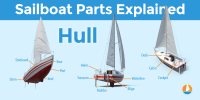
Sailboat Parts Explained: Illustrated Guide (with Diagrams)

How To Live On a Boat For Free: How I'd Do It

100 Basic Yachting & Sailing Terms You Need To Know
- No Comments
Yachting is an increasingly popular activity that involves exploring and enjoying bodies of water aboard sailboats or motorboats. It doesn’t matter if you’re a seasoned sailor or brand-new to the sport; knowing the language used in yachting is crucial for efficient communication and secure navigation. We’ll look at some of the most often used terminology and expressions in the world of yachting in this list of 100 fundamental yachting terms, from boat parts to navigation and safety gear, and more. This list is an excellent place to start whether you’re seeking to brush up on your yachting terminology or are just beginning into the sport.
Aft – Toward the back of the boat
Anchor – A heavy object used to keep a boat in place
Ballast – Weight added to the bottom of a boat to improve stability
Beam – The width of a boat at its widest point
Bilge – The lowest point inside the boat where water collects
Bimini – A type of sunshade or canopy used on boats

Bow – The front of a boat
Buoy – A floating marker used to mark channels, hazards or anchorages
Cabin – An enclosed space on a boat used for sleeping and living quarters
Capsize – To tip over or turn upside down
Cleat – A metal or plastic fitting used to secure ropes or lines to the boat
Cockpit – The open area in the back of the boat where the steering and controls are located
Compass – A navigational tool used to determine the direction
Crew – The people who work on a boat, assisting with sailing or other duties
Deck – The top surface of a boat where people can stand or walk
Dock – A platform or structure where boats can be tied up or moored
Draft – The depth of a boat below the waterline
Fender – A cushion or bumper used to protect the boat from damage when docking
Flag – A piece of fabric used to signal or communicate on a boat
Galley – The kitchen area on a boat
Genoa – A type of sail that is used for cruising and racing
GPS – Global Positioning System, a navigational system that uses satellites to determine the location
Halyard – A rope or line used to hoist or lower a sail
Hatch – An opening in the deck or cabin of a boat
Head – The bathroom on a boat
Hull – The main body of the boat, typically made of fiberglass or wood
Jib – A small triangular sail located forward of the mast
Keel – A fin-shaped object located under the boat that provides stability and helps prevent drifting
Knot – A measure of speed equal to one nautical mile per hour
Lanyard – A short cord or rope used to secure equipment or gear on a boat
Latitude – A measure of distance north or south of the equator
Leeward – The side of the boat sheltered from the wind
Lifeline – A line or rope used to provide safety and support on the deck of a boat
Log – A device used to measure speed and distance traveled
Mast – A vertical pole or spar that supports the sails
Mooring – The process of securing a boat to a dock or anchor
Nautical – Relating to or involving ships, sailors, or navigation on water
Navigation – The process of planning and controlling the course of a boat
Oar – A long pole with a flat blade used for rowing a boat
Outboard – A motor located on the outside of the boat
Port – The left side of a boat when facing forward
Propeller – A device that uses rotating blades to provide forward motion to a boat
Pulpit – A railing or fence located on the bow of the boat
Rudder – A flat object located at the back of the boat used to steer
Sail – A piece of fabric used to catch the wind and propel the boat
Sailing is the practice of using the wind to power a vessel through the water
Sheet – A line or rope used to control the angle of the sails
Skipper – The person in charge of operating a boat
Stern – The back of the boat
Tack – The direction of a boat when it is sailing upwind
Throttle – The control used to increase or decrease engine speed
Tiller – A handle or lever used to steer a boat
Transom – The flat, vertical surface at the back of the boat where the outboard motor is mounted
Trim – The adjustment of the sails and other equipment to optimize performance
Wake – The waves created by a boat as it moves through the water
Windward – The side of the boat facing into the wind
Winch – A device used to pull or hoist heavy objects on a boat
Yacht – A larger, more luxurious type of boat typically used for pleasure cruising
Bilge pump – A device used to pump water out of the bilge
Boom – The horizontal pole or spar that extends from the mast to support the bottom of the sail
Bowline – A knot used to secure a line to a fixed object
Cam cleat – A device used to secure a line under tension
Catamaran – A type of boat with two parallel hulls
Centerboard – A movable fin located underneath the boat that helps improve stability and maneuverability
Chafe – The wearing away or damage to a rope or line caused by friction against another surface
Clew – The lower corner of a sail
Current – The flow of water in a particular direction
Dinghy – A small boat used to transport people or supplies to and from shore
Fairlead – A device used to guide a line or rope in a particular direction
Flotation device – A piece of equipment used to keep a person afloat in the water
Forestay – The wire or rope that supports the mast at the front of the boat
Gaff – A spar used to support the upper edge of a sail
Headway – The forward motion of a boat
Inboard – A motor located inside the boat
Jibsheet – The line or rope used to control the jib sail
Keelboat – A type of sailboat with a fixed keel for stability and maneuverability
Luff – The forward edge of a sail
Masthead – The top of the mast where the highest sails are attached
Navigation lights – Lights used to signal other boats of the position and direction of a boat at night
Outhaul – The line or rope used to control the tension of the bottom of the sail
Planing – The state of a boat when it is moving quickly across the water and partially out of the water
Powerboat – A type of boat that is powered by an engine rather than sails
Ratchet block – A device used to reduce the effort required to pull a line under tension
Reefing – The process of reducing the size of the sails in high wind conditions
Rigging – The system of ropes and wires used to support and control the sails and mast
Rudderpost – The vertical post or shaft that the rudder is attached to
Scow – A type of sailboat with a flat bottom and squared-off ends
Shackle – A metal fitting used to connect two pieces of rope or chain
Spinnaker – A large, lightweight sail used to catch the wind when sailing down
wind 90. Spreaders – The horizontal struts on a mast that help to support and spread the shrouds
Standing rigging – The fixed parts of a boat’s rigging system, such as the mast and shrouds
Stern light – A white light on the back of a boat used to signal other boats at night
Stowaway – A person who hides on a boat in order to travel without permission
Tiller extension – A device used to extend the length of the tiller to make steering easier
Topside – The upper part of a boat, above the waterline
Transom door – A door in the back of a boat that provides access to the water
Traveler – A device used to move the mainsail along the boom
Waterline – The level at which a boat floats in the water
Winch handle – A handle used to turn winches to control the sails and lines
Yawl – A type of sailboat with two masts, the smaller of which is located aft of the rudder post.
Leave a Review Cancel reply
You must be logged in to post a comment.
You may also like
Sailing spots.
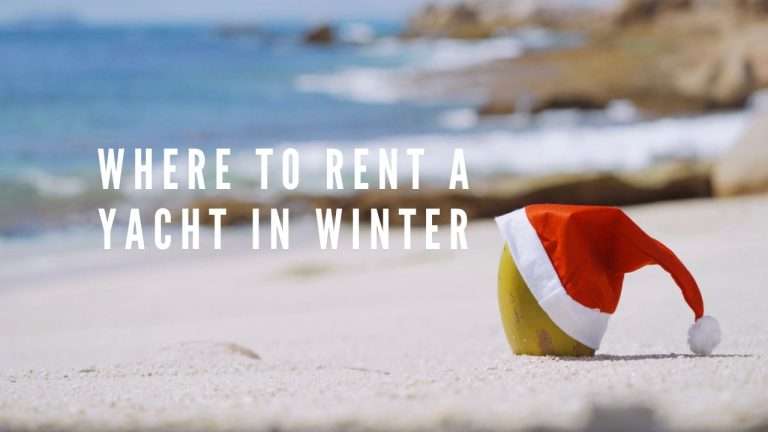
Where to Rent a Yacht in Winter: An Expert’s Guide

A Yachter’s Guide to Australian Customs and Immigration Procedures
Yachting basics.

When to Change Your Anchor Chain and How to Choose the Right One
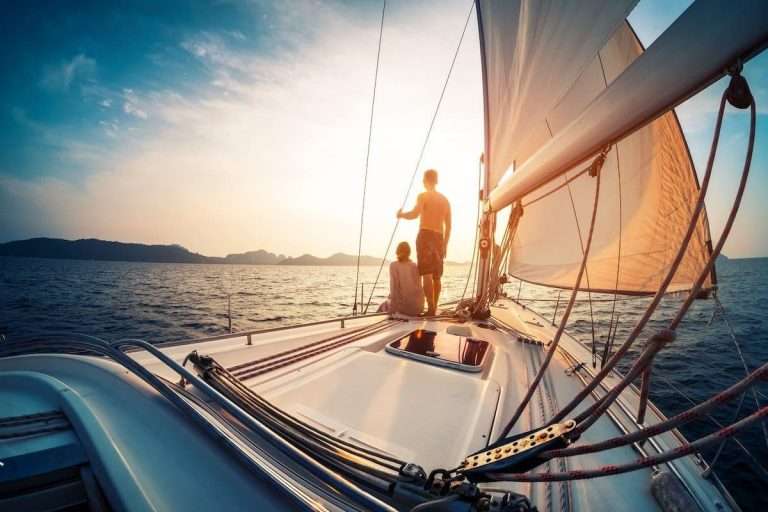
Sailing for beginners – 10 Questions and Concerns
Sailing routes.

Sailing Route in Spain: from Barcelona along the Costa Brava

Sailing Route in Thailand from Phuket
Yacht events.
No listings were found matching your selection. Something missing? Why not add a listing? .
Sailing News

International Charter Expo (ICE) 2023: Get Ready for the Ultimate Yacht Charter Event!

Navigating 2023: A Calendar of the Year’s Remaining Major Sailing Races and Regattas
Faces in yachting.

Laura Dekker: The Youngest Circumnavigator – A Voyage of Resilience and Dreams

John F. Kennedy: The Yachtsman President
Boat reviews.

| Sailing Click - search best yacht rental deals worldwide, discover new sailing destinations, find new yacht marinas. |
- TOP Charter Deals (updated)
- Advertising and Promotion
- Privacy Policy
- Cookie Policy
Please note that some links on our site are affiliate links. This means we may earn a commission at no extra cost to you if you click on them and make a purchase. We recommend products because we believe they add value, not because of the commission we receive. Your support helps keep our site running. If you have questions, please reach out to us.
Privacy Overview
| Cookie | Duration | Description |
|---|---|---|
| cookielawinfo-checkbox-analytics | 11 months | This cookie is set by GDPR Cookie Consent plugin. The cookie is used to store the user consent for the cookies in the category "Analytics". |
| cookielawinfo-checkbox-analytics | 11 months | This cookie is set by GDPR Cookie Consent plugin. The cookie is used to store the user consent for the cookies in the category "Analytics". |
| cookielawinfo-checkbox-functional | 11 months | The cookie is set by GDPR cookie consent to record the user consent for the cookies in the category "Functional". |
| cookielawinfo-checkbox-functional | 11 months | The cookie is set by GDPR cookie consent to record the user consent for the cookies in the category "Functional". |
| cookielawinfo-checkbox-necessary | 11 months | This cookie is set by GDPR Cookie Consent plugin. The cookies is used to store the user consent for the cookies in the category "Necessary". |
| cookielawinfo-checkbox-others | 11 months | This cookie is set by GDPR Cookie Consent plugin. The cookie is used to store the user consent for the cookies in the category "Other. |
| cookielawinfo-checkbox-others | 11 months | This cookie is set by GDPR Cookie Consent plugin. The cookie is used to store the user consent for the cookies in the category "Other. |
| cookielawinfo-checkbox-performance | 11 months | This cookie is set by GDPR Cookie Consent plugin. The cookie is used to store the user consent for the cookies in the category "Performance". |
| cookielawinfo-checkbox-performance | 11 months | This cookie is set by GDPR Cookie Consent plugin. The cookie is used to store the user consent for the cookies in the category "Performance". |
| viewed_cookie_policy | 11 months | The cookie is set by the GDPR Cookie Consent plugin and is used to store whether or not user has consented to the use of cookies. It does not store any personal data. |
| viewed_cookie_policy | 11 months | The cookie is set by the GDPR Cookie Consent plugin and is used to store whether or not user has consented to the use of cookies. It does not store any personal data. |
Change Location
Find awesome listings near you.
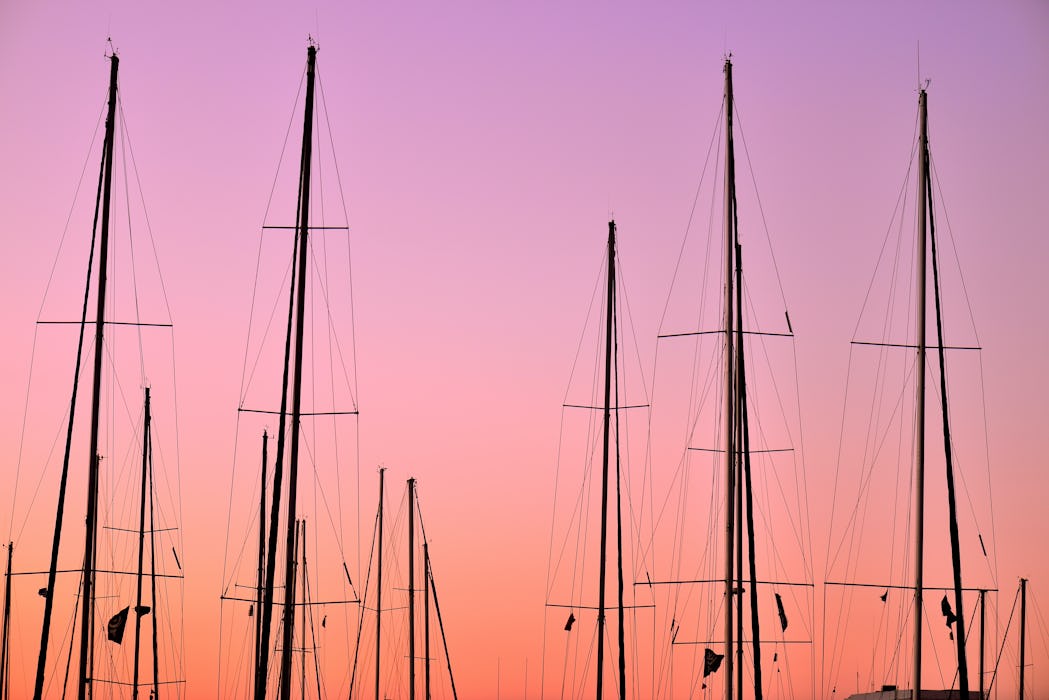
Glossary of sailing and nautical terms

COVID 19: You can change your booking on most of our boats if your travel plans are affected by coronavirus. See here for more details
Let us help you plan the perfect sailing trip
Provide your travel details, receive free offer and enjoy your holiday!
In order to become a true sailor, you’ll first need to learn some essential sailing terms. Luckily, we’ve got you covered! In this A-Z of yachting terms, we’ll briefly explain yacht terms, parts, equipment, sailing commands, and even some pirate jargon.
For you to understand the ins and outs of a boat you should know where it starts and where it ends. The front of a boat is known as the bow while the back is called the stern. Also, while the left of the boat is called the port side, the right is called starboard. Now that you’re familiar with the different sides of a boat, let's get down to real sailing business.
- ABANDON SHIP! – You have probably heard this in movies and you know it doesn't bring any good. You should leave the vessel immediately as it looks like your ship is in some imminent danger.
- ABOARD – When you’re aboard, you are on a boat. The opposite of ashore.
- ABOVE DECK – Above deck means you are standing on the deck, not above it.
- ABREAST – We call vessels that are side to side - abreast.
- ADRIFT – Don't panic but if your vessel is adrift it means it has sailed off without you. Okay, you can panic a little.
- AGROUND – If the water is not deep enough, then you go aground and your vessel’s bottom touches the ground.
- AHEAD – This means something is in front of the boat, for example your destination is ahead.
- AHOY – Another way to say hello, with a little pirate tone.
- ALL HANDS HOAY – Everyone should get on the deck.
- AMIDSHIPS – The middle of a vessel, whether from her length or width.
- ANCHOR – A chain with a hook on the end that falls to the bottom of the sea and prevents your yacht from sailing off without you. Used for parking your yacht in a bay.
- ANCHORAGE – A great spot for holding, anchoring and sheltering your vessel.
- APPARENT WIND – A mixture of the true wind direction and the wind created by the sails.
- ASHORE – Being on the shore, and not on your vessel.
- ASTERN – Opposite of ahead is astern, in other words behind.
- AYE, AYE – A reply to a command to show that it will be carried out.
- BAGGYWRINKLE – A soft covering for cables that prevents friction between sails.
- BAREBOAT – Sailing a yacht on your own without a crew or skipper.
- BATTEN DOWN – If you hear “Batten down the hatches!” make sure you secure any hatchets and loose objects so you don’t lose anything important.
- BEAM – The width of your vessel.
- BEARING – Bearing is the direction in which we are headed. The reference point can be a compass or the heading direction.
- BELOW – Instead of being “above deck,” you can also be “below” it.
- BERTHS (Sleeping) – The number of people able to sleep on a specified vessel.
- BERTHS (Mooring) – The location in a harbour or port for mooring a vessel
- BEAM REACH – Is the position of a sail when the true wind hits it at a 90 degree angle.
- BILGE – The deepest part of the vessel’s hull, where water can enter.
- BOAT HOOK – A pole with a hook on the end. You can use it to grab and pick up a rope, collect something that has fallen overboard, or push the vessel off the port.
- BOOM – This is the horizontal pole that runs along the bottom of the sail. A part that often hits unsuspecting victims on the head in small vessels. Not a very pleasant experience.
- BOW –The front of the vessel also known as the ”pointy end” of the boat.
- BOW LINE – A rope that’s tied onto the front of the vessel that stops the vessel from moving sideways when moored.
- BOWLINE – To confuse you, this is a completely different from the bow line. It’s pronounced “boh-lin” and it’s a knot which creates a loop at the end of a rope.
- BRIDGE – The part of the vessel from where you steer and control the speed.
- BRIGHTWORK – Brightwork is the shining woodwork or polished metal that you can see on a vessel.
- BUOY – A buoy is a floating device that marks a position, a hazard, or shallow sea. Some are also used to moor vessels.
- BROAD REACH - Sailing downwind with the wind is hitting the sails at an angle between 91 and 170 degrees.
- CABIN – Separated living units, like a bedroom.
- CAPSIZE – When a vessel leans too far causing it to flip over. This can result in the sinking of the ship.
- CAST OFF – When you cast off you let go of a rope from where your vessel has been moored up.
- CHAFING GEAR – It sounds quite uncomfortable, but it's not for you. “Chafing gear” is a tube or some type of fabric that you wrap around a rope to stop it from rubbing on a rough surface.
- CHART – A nautical map that gets you from point A to point B.
- CLEAT – A fitting on vessels used to tie or secure ropes.
- COCKPIT – An opening from where you can control the vessel.
- COIL – When it’s time to put away ropes, you make a neat, circular coil with them.
- COMPASS – A navigational instrument that revolutionised travel.
- COURSE – The route you follow across the water.
- CURRENT – The current is actually the movement of water, usually caused by tides or wind.
- DEAD AHEAD – Dead ahead means straight ahead.
- DEAD ASTERN – Meaning behind you. The complete opposite of dead ahead.
- DECK – Not the deck of playing cards. This is a surface that covers any part of a vessel on which you can walk on.
- DINGHY – A small inflatable boat attached to the yacht. It is sometimes easier to go with the dinghy.
- DOCK – A pier, float or a wharf where you can moor your vessel.
- DRAFT/DRAUGHT – It can mean two things, the depth of a vessel underwater or the fullness of a sail.
- DUNSEL – This part has no use on a ship. Don't be a dunsel!
- EASE – To let the sails out.
- FATHOM – In sailing, a fathom is a nautical unit of length. It matches six feet or approximately two metres.
- FENDER – The colourful cushions that hang over the edge of a vessel to prevent damage to the boat or pontoon.
- FLOOD – This doesn't have to be super dramatic, it can simply be used to describe an incoming tide.
- FORE-AND-AFT – A centre-line of a vessel that runs lengthwise, parallel to the part of the hull that goes deeper into the water below it.
- FOREPEAK – An open area in the front front of the vessel.
- FOULED – A fouled piece of equipment is blocked, tangled, or tarnished.
- GALLEY – A vessel’s kitchen. Go on, we know you’re hungry.
- GANGWAY – The gangway is where you can get in and out of the vessel.
- GEAR – When you hear “Get your gear!” it means ropes, lines, blocks, and other equipment on board.
- GENOA/JENNY – Might be quite confusing if your name is Jenny. A Genoa or Jenny is a sail that overlaps the mainsail.
- GRAB RAILS – When in danger of falling off the boat, it’s a good idea to hold onto the grab rails to prevent that.
- GROUND TACKLE – The bits that touch the ground such as the anchor and its gear.
- GUNWALE – The rail that goes around the edge of the deck.
- HALYARD – All the ropes used to pull sails up.
- HATCH – An opening in the vessel’s deck that has a water-resistant cover.
- HEADING – The direction the vessel is going in.
- HEADWAY – A headway vessel is going forward, while the sternway is moving backward.
- HEADS – The heads are actually the toilets, the loo, dunny… It can also be the upper corner of a triangular sail.
- HELM – If somebody asks you to take the helm, drop everything you are doing and take the wheel. The helm is the wheel or tiller that controls the vessel.
- HELMSPERSON – The best and the worst job on board. The person steering the wheel.
- HOLD – The inside of the yacht’s hull.
- HULL – The main body of a vessel, the part that floats.
- INBOARD – Simply inside the vessel’s edges.
- IN IRONS – When the boat is difficult to manoeuvre under sail.
- IRON MIKE – A slang for auto-pilot. Not a famous boxer.
- ITINERARY – The route of travel on your holiday. Usually planned in advance but needs to remain flexible to respond to weather conditions and personal preference
- JACOB’S LADDER – The type of rope ladder that you’d use to climb up something. It can be lowered from the deck when passengers come on board.
- JETTY – A jetty is a structure made to create breakwater, shelter, erosion control, or a channel.
- JIBING/GYBING – On a vessel, jibing means turning away from the wind until the wind comes from the other side.
- KEEL – The central structural base of the hull, the “backbone” of a vessel.
- KNOT – Not just a loop you tie in a rope or string, but also a unit of speed (equals one nautical mile an hour)
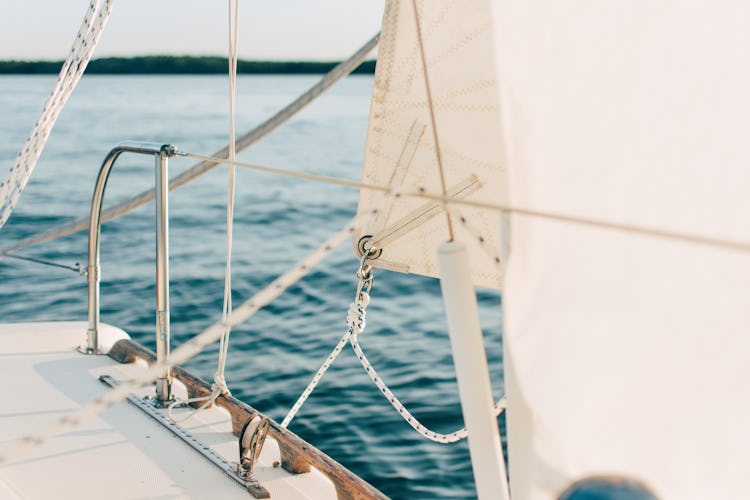
- LATITUDE – Geography knowledge can be used here. The latitude is the distance north or south of the equator. It’s measured in degrees and up to 90˚ north and 90˚ south. Each degree of latitude accounts for 60 nautical miles.
- LAZARETTE – A storage space at the back of the vessel.
- LAZYJACK – Wires leading from the mast (the big central metal pole) to the boom (pole that runs along the bottom of the front partl) that helps lowering the sails.
- LEE – The down-wind side of a vessel or shore which is sheltered.
- LEE CLOTHS – To avoid falling out of bed in the middle of the night, you can use a lee-cloth to keep you safe.
- LEEWARD – This is the direction away from the wind, as opposed to windward, which means into the wind.
- LOA – The maximum length of a yacht including overhanging ends that extend beyond the main bow and main stern.
- LOG – The log measures speed and records the vessel’s course.
- LONGITUDE – This is the distance east or west of the meridian line at Greenwich, UK, which is measured in degrees. There are 180˚ west and 180˚ east of Greenwich.
- LINE – This is a general term for a rope or line on a vessel that has a control function.
- LWL – Load waterline length or the length of a yacht that is in contact with the water.
- MAINSAIL – The main sail that sits behind the main mast on a yacht.
- MAST –The big metal pole that reaches from the bottom of the yacht to the sky. The sails hang from the mast.
- MED MOORING – The art of reverse parking a yacht into a small gap, a typical mooring technique in most Mediterranean harbours.
- MIDSHIP – The middle of the vessel.
- MONOHULL – A boat with one hull. The classic sailor’s yacht
- MOORING – When you moor a vessel, you tie it to a buoy or a pier. And then hope it won’t go adrift.
- NAUTICAL MILE – A measure of distance when on water. It’s around 6,076 feet, 1,852 metres, 2,025 yards, or one minute of latitude.
- NAVIGATION – Keeping to the route of a vessel when on a voyage from point A to point B. Basically, figuring out where you are and where you are going.
- OCEAN – Don’t think this one needs explaining, but anyhow a huge blue surface, pretty wet too.
- OPERATIONAL LANGUAGE – The language that the crew use to give instructions.
- OUTBOARD – When something is outboard, it’s beyond the vessel’s sides.
- OVERBOARD – It’s probably best to avoid this one. When someone or something is overboard, it’s over the side of the boat.
- PIER – A pier is a loading platform held by posts that extends out from the shore.
- PILOTAGE – Piloting when you navigate using visible features on land or water.
- PORT – The left side of the vessel is called the port side. It is also another name for a harbour.
- PROW –A poetical alternative term for bow.
- QUAY – A stone or metal platform lying alongside or above the water. Usually used for parking, loading and unloading vessels.
- REACHING – For most sailboats, this is the fastest way to travel. A close reach is toward the wind, and a broad reach is slightly away from the wind.
- REEFING – The preferred method of reducing sail area so it is easier to control. Especially useful in higher winds and bad weather conditions.
- REGATTA – A series of boat races.
- RIGGING – The ropes and wires that control the sails and support the masts.
- RIP RAP – A pile of rocks and rubble made to form a breakwater, often surrounding an off-shore lighthouse or vulnerable harbour.
- RUDDER – When you change directions on the vessel, it moves the rudder which in turn steers the vessel. It’s usually a vertical plate or a board connected to the back.
- SAILS – The most important part for sailing. An eco-friendly engine that converts wind power into boat speed.
- SALOON – The living area, you go here to relax.
- SATELLITE NAVIGATION – You have probably used regular navigation that uses radio transmissions before. However, the equipment on a vessel is a bit more complex and sophisticated.
- SCUPPERS – Scuppers are the holes in the deck that let the water drain off.
- SEA COCK – A sea cock is a faucet in the hull that can be turned off when not in use.
- SEAMANSHIP – All the skills of boat handling can be called seamanship. It could be maintenance, repairs, piloting, sail handling, marlinespike work, and rigging.
- SEA ROOM – It’s actually used to describe a safe distance from the shore or other hazards.
- SEAWORTHY – If a vessel can safely sail in rough weather, we call it seaworthy.
- SECURE – When something is secure, it is tied safely.
- SET – When the current is flowing toward a particular direction, it is set!
- SKIPPER – The most important person on your yacht, the person in charge and responsible for the safety of all aboard
- SLACK – Something that is not fastened.
- STERN – The rear of the yacht. Also can be the skipper’s voice tone if your yacht floats away.
- SOUNDING – This has nothing to do with sounds, it is actually a measurement of water depth.
- SPRING LINE – This is a rope that stops a boat from moving forward or backward while being fastened to a dock. Also used during docking and undocking.
- SQUALL – A squall is a sudden, violent wind that often brings rain. Get your bad weather gear ready!
- STAND-ON VESSEL – A “stand-on vessel” is a vessel that has right of way and should maintain its speed and direction. A give-way vessel should take steps to avoid a stand-on vessel
- STARBOARD – Starboard is the right side of a vessel when looking towards the front/bow
- STEM – The front of the vessel.
- STERN – The back of the vessel.
- STERN LINE – This is a rope leading from the stern (back) of the vessel.
- TACKING – Zig-zagging into wind so the wind passes from one side to another.
- TILLER – A tiller is a bar or handle that you use to turn a vessel’s rudder to change directions.
- TOPSIDES – This is the bit of the vessel that’s between the waterline and the deck.
- TRIM – No, not a haircut trim. This trim means making adjustments to sails to maximise their efficiency.
- TRADE WINDS – These winds blow from the north east in the Northern Hemisphere and the south east in the Southern Hemisphere. Sailors use them because they push vessels toward the equator.
- TRANSOM – The transom is a wall at the back of a vessel.
- TRUE WIND DIRECTION – The direction from where the wind is actually coming from.
- UNDERWAY – When you are on the sea, your vessel is underway. In other words, it’s not moored, at anchor, or aground.
- VESSEL – A craft for traveling on water, usually a larger boat or a ship.
- WATER – The liquid you can drink and float on.
- WATERLINE – A painted line on the vessel that shows where the vessel ends and the sea starts.
- WAY – The path that a vessel leaves after itself when it moves across the sea.
- WATCH – When you are on a watch on board you have to work with your fellow watch members.
- WINCH – A rotating, horizontal drum, powered either by electric motor or human motion
- WINDWARD –This means to go into the wind, and it’s tough to sail windward.
- YACHT – All kinds of vessels that are either powered or have sails
- Paddle Board

A to Z of Nautical Terms: A Complete Glossary of Boat Terminology
Are you a new boat owner? Whether you bought a jet ski or a 40-foot cabin cruiser, you’re going to need to understand the lingo while you’re out on the water. Here’s a glossary of basic nautical terms to have you sounding like a sailor.
Toward the stern of the vessel.
A sail position with the wind striking on its leeward side.
Around or near the stern of the vessel.
At a right-angle to the boat’s center-line.
Lashing the helm to the leeward side to ride out bad weather without the sails set.
The center of the deck of the vessel between the fore-and-aft.
Automatic Identification System.
Apparent Wind
The speed and direction of the wind combined with the boat’s movement and the true wind speed and direction.
To look behind the boat while driving in reverse.
Automatic Radar Plotting Aid.
Athwartships
At a right-angle to the aft-and-fore line of the vessel.
The act of measuring the angular distance on the horizon circle in a clockwise method, typically between a heavenly body and an observer.
When the wind starts to shift in an anti-clockwise direction.
Back a sail
Sheeting the sail to the windward direction, so the wind fills the sail on the leeward side.
The stay supports the aft from the mast, preventing its forward movement.
Baggywrinkle
The teased-out plaited rope wound around the stays or shrouds preventing chaffing.
Iron or lead weights are fixed in a low-access area of the vessel or on the keel to stabilize the boat.
A flexible and lightweight strip feeds into the sail leech’s batten pocket, supporting the roach.
Ballast Keel
A ballast bolted to the keel, increasing the vessel’s stability to prevent capsizing.
The widest point of the vessel or a traverse member supporting the deck. On the beam, objects are at a right-angle to the center-line.
Taking the action of steering the vessel away from the wind.
To tag a zig-zagging approach into the wind or close-hauling with alternate tacks.
The object’s direction from the observer measured in magnetic or true degrees.
To fasten the rope around the cleat using a figure-8 knot.
Securing the sail to the spar before hoisting it or connecting two ropes using a knot.
A sleeping quarters on a boat or a slip occupied by a vessel in a marina or harbor.
The loop or bend in a knot.
The round, lower part of the hull where the water collects.
The pulley fixed inside a plastic or wooden casing with a rope running around a sheave and changing to pulling direction.
Boot-Topping
The narrow-colored stripe is painted between the topside enamel and bottom paint.
The heeling action of the boat when it slews to the broadside while running downwind. Abroach usually occurs in heavy seas.
Broad Reach
The point of sailing the vessel between a run and the beam reach with the wind blowing over the quarter.
The partitioning wall in the vessel athwartship.
A measurement of distance equal to 0.1-sea mile, 185-meters, or 200-yards.
Center-Line
The center of the vessel along the aft-to-fore line.
Center-Board
A board lowers through a slot on the keel for reducing leeway.
The fitting slipping over the boom like a claw. It attaches to the main sheet after you finish reefing the sail.
Chart Datum
The reference level on the charts below which the low tide level. The sounding features below the chart datum. The datum level varies depending on country and area.
The metal, wooden, or plastic fitting used to secure ropes.
Close-Hauled
The skill of sailing close to the wind, also known as beating.
The lower, aft corner of the sail where the leech and foot meet.
Close Reach
The point where you’re sailing between the beam reach and the close-hauled or when the wind blows toward the forward of the beam.
The direction that you steer the vessel in degrees. Mariners can use true or magnetic readings or use a compass to plot the course.
Close-Winded
The act of sailing a boat close to the wind.
The rope loop at either end of the line reef points or an eye in a sail.
The difference between the direction indicated by the magnetic meridian and the compass needle, caused by carrying metal objects aboard the vessel.
Sailing with the wind blowing to the aft, in line with the center-line of the vessel.
Displacement
The displacement hull design displaces boat weight in the water and is only supported by its buoyancy.
The weight of the water displaced by the vessel is equal to the vessel’s weight.
The rope used to pull down the spar or sail.
To float the vessel with the wind or current. Or the distance covered by the boat while drifting in the current, measured in time.
The distance between the lowest point on the keel and the center-line of the vessel measured as a vertical distance.
The sea anchor thrown over the stern of a life raft or boat or to reduce drift.
Digital Selective Calling (a function on Marine radios ).
A retractable keel drawn into the vessel’s hull.
Emergency Position Indication Radio Beacon.
Estimated Position.
Estimated Time of Departure.
Estimated Time of Arrival.
The fitting adjusting the feeding line allows you to change the direction of the lead line.
The raised border on cabin tables, chart tables, preventing objects from falling off the surface.
Measurement of water depth and rope lengths.
- 1 Fathom = 6-feet = 1.83-meters.
The vessel positioning plotted by two or more positioning lines.
The vertical distance between the top of the deck and the waterline.
The closest stay running between the masthead and stemhead, hankering the mainsail.
A large-size headsail is available in various sizes, overlapping the mainsail before hoisting in fresh to light winds on all sailing points.
Two concentric rings pivot at right-angles to keep objects horizontal despite the swaying motion of the boat.
Global Navigation Satellite System.
Global Maritime Distress and Safety System.
To change tack by turning the boat into the eye of the wind.
Booming out the headsail in a windward position using the whisker pole to hold it on the opposite side of the mainsail.
The fitting anchoring the mast to the boom, allowing free movement in all directions.
This metal rail surrounds the boat’s edges, allowing easy gripping to prevent falling overboard.
Turning the stern through the wind to change from one tack to another.
The spinnaker guy controls the steadying rope for the spar through the aft-fore position of the spinnaker pole. The foreguy keeps the spinnaker pole in the forward position.
Global Positioning System.
The rope hoisting the lower sails.
Highest Astronomical Tide.
The fitting for attaching the sail’s luff to a stay.
The deck opening provides the crew with access to the berth or cabin interior.
The streamlined surround of a forestay featuring the groove allows for the sliding attachment of the luff sides of the headsail.
Head-to-Wind
When the bow of the vessel points into the direction of the wind.
The forward motion of the vessel through the water.
The toilet.
The action of backing the jib and lashing the tiller to the leeward side in rough weather conditions. The heave-to encourages the vessel to reduce headway and lie quietly.
When the vessel exaggeratedly leans to one side.
International Maritime Organization.
International Regulations for Preventing Collisions at Sea.
International Telecommunication Union
The lines on weather maps joining places with equal atmospheric pressure.
The temporary device for replacing damaged or lost gear.
The line running from aft-to-fore on both sides of the vessel. The jackstays allow for the clipping attachment of safety harnesses to prevent being lost at sea when falling overboard.
A secondary, smaller, lightweight anchor.
A dual-masted sailboat featuring a mizzen mast that’s slightly smaller than its mainmast, with a stepped forward position of the rudder post/stock.
The center-line of the vessel features the attachment of the ballast keel, allowing for the lowering of the center-board.
Kicking Strap
The line for pulling down the boom or keeping it in the horizontal position when on a run or reach.
A short length of line attached to an important object that you don’t want to lose, such as the jet ski key. The lanyard can connect to your wrist or lifejacket.
The aft edge of the triangular sail. Both side-edges of a square sail.
Lowest Astronomical Tide.
The shore on which the wind is blowing.
The natural tendency of vessels to bear away from the direction of the wind.
Moving in a direction away from the wind. The direction in which the wind is blowing.
The vessel’s leaning to one side due to improper distribution of weight in the boat’s hull.
The leading edge of the sail. Luffing up is turning the head of the boat into the wind.
The sideways motion off course resulting from the wind blowing on one side of the hull and sails.
The instrument for measuring the distance and speed of a boat traveling through the water. It is also the act of recording the details of a voyage in a logbook.
Marinized engine
A car engine or motorbike motor adapted for use in watercraft.
Maritime and Coastguard Agency.
The keel socket locating the base of the mast.
Measured Mile
The distance marked on charts measures one nautical mile between islands at sea or onshore ranges.
The short after-mast on the yawl or ketch.
This imaginary longitudinal line circling the earth, passing through both poles, cutting at right-angles through the equator.
Mean Low Water Neaps.
Mean High Water Neaps.
Mean High Water Springs.
Mean Low Water Springs.
Maritime Mobile Service Identity.
The rope used for pulling out the sail’s foot.
Overall Length (LOA)
The extreme length of the vessel. The measurement from the aftmost point of the stern to the foremost points of the bow. This measurement excludes the self-steering gear, bowsprit, etc.
An emergency call requesting immediate assistance.
The bowline on a tender or dinghy for towing or making fast.
To gradually let out the rope.
The left-hand side of the vessel when looking forward.
Point of Sailing
The angles of the wind allowing for the sailing of the boat. Or the boat’s course relative to its direction and the direction of the wind.
Your vessel is on its port track when the wind is striking the boat’s port side first, and the mainsail is out to the starboard side.
Line of Position/Position Line
The line on charts shows the bearing of the vessel and the position where the boat mist lie. Or two positional lines providing a location fix.
The steel guard rail fitted to the bow to provide additional safety for the crew when working around the boat’s edge.
The steel guard rail fitted around the stern of the boat to prevent the crew from falling overboard.
The section of the vessel midway between the beam and the stern.
The difference in water levels between the high and low tides is the range of tides. Or the distance at which you can see the light.
The act of reducing the sail surface area through folding or rolling additional materials onto the forestay or boom.
Reefing Pennant
The sturdy line allowing you to pull down the leech cringle or luff to the boom while reefing.
When sailing with the wind blowing onto the beam, with all sailing points between close-hauled and running.

Riding Sail
The small sail you hoist to maintain the steerage way during stormy weather.
The imaginary line cuts through all meridians at the same angle. Or the course of the vessel moving in a fixed direction.
Rigging Screw
The deck fitting allowing for tensioning of the standing rigging.
The act of sailing with the wind to the aft of the vessel and with the sails eased into the wide-out, full position.
The curve in a leech sail extending beyond the direct line formed from clew to head.
Running Rigging
All moving lines like halyards and sheets used for trimming and setting sails.
Search and Rescue.
A vessel with two or more masts and the mainmast featured in the aftermost position.
Search and Rescue Transponder.
The toe-rail holes allowing water to drain off the deck.
The room in which the vessel can maneuver clear of submerged dangers.
The shut-off valve for the underwater outlet or inlet passing through the vessel’s hull.
This is French for “radio silence.” You’ll use it when reporting a distress call or incident at sea.
The act of hoisting a sail. Or how the sails fit or the direction of a tidal stream or current.
A procedure word for identifying safety calls.
A steel link featuring a removable bolt crossing the open end. The shackle comes in various designs, from “S” to “U” shapes and more.
The cables or ropes typically fund in pairs, leading from the mast to the chainplates at the deck level. These shrouds prevent the mast from falling to the side, and it’s part of your standing rigging.
The rope attaching to the boom to the sail’s clew allows for the trimming and control over the sail.
Skin Fitting
A through-hull fitting featuring a hole in its skin allows for air and water passing. The seacock is the accessory used for sealing the cavity when not in use.
A boat with a single-masted design for one headsail and one mainsail.
The general term for any metal or wooden pole on board a boat. The pole gives shape to the sails.
Safety of Life at Sea.
Speed Over the Ground
A lightweight, large balloon-shaped sail for running or reacting.
The horizontal struts attach to the mast and extend to the shrouds to assist with supporting the mast.
The act of joining wires or ropes using a weaving process interlacing the fibers in the cable or rope.
The sail will stall if the airflow over the sail surface breaks up, causing the vessel to lose its momentum.
Standing Part
The part of the line you don’t use when making a knot. Or the part of a rope you use to tie around the knot.
The metal post bolted to the deck in an upright position to support the guard railing.
Standing Rigging
The stays and shrouds provide permanent support to the mast.
Starboard Tack
The vessel is on the starboard tack when the boom is out to post, and the wind strikes the boat’s starboard side.
The right-hand side of the vessel when looking forward.
The rope or wire supports the mast in the fore-and-aft direction. It is a part of the standing rigging for your boat.
The sternward movement of the vessel towards the backward direction.
Steerage Way
The vessel has steerage when it reaches sufficient speed, allowing for steering or answering the helm.
The loop of rope or wire attaches the spar to the block to make a sling.
The railing around the vessel’s stern prevents the crew from falling overboard. Modern yachts do not have the elegant wooden railing of older models. Instead, they feature tubular steel or aluminum railings, called Pushpits.
Telegraph Buoy
The buoy marks the position of a submerged cable.
To pull on the end of the rope or cable, wound around a winch.
The compass mounted over the captain’s berth, allowing for the easy reference to what’s going on in the vessel’s helm.
The metal fitting forming eyes at the end of cables, wires, or ropes.
A description for any small boat, usually inflatable models. These boats will take supplies and people between a larger vessel and the shore.
Thermal Wind
The wind occurring from the difference in the heating of the sea and the land by the sun. The sun heats the land faster than the sea, resulting in the onshore wind from the sea replacing the air rising over the land, causing the “sea breeze” phenomenon.
Thumb Cleat
A small cleat featuring a single horn.
The wooden pegs featuring vertical pairs in the gunwale for constraining the oars for rowing.
Topping Lift
The rope linking the mast to the boom end. It supports the boom, allowing for its lowering and raising.
The progress on the vessel’s journey over the ocean. The trajectory line of the boat.
The sides of the hull between the waterline and the deck.
The netting stretching across the hulls of a catamaran.
A watch period or watch duty at the helm of the vessel.
Traverse beams forming part of the stern and fixed to the sternpost of a wooden ship.
Tricolor Lamp
A lamp displaying red in proper port sectors, green in the starboard sectors, and white astern. Some authorities permit the tri-color light on smaller boats instead of conventional stern and bow lights.
Turk’s Head
A decorative knot featuring variable numbers of interwoven strands that form a closed loop.
The direction and velocity of wind measured by stationary observers. Apparent wind is wind experienced by moving objects.
Sturdy steel fittings used for attaching standing rigging to the spar or mast.
The low, forward corner of the sail. Or the action of turning the boat through the wind to get it to blow on the other side of the sails.
Sailing close-hauled to work windward on an alternate course. The wind is on one side then the other.
The low strip of steel, wood, or strapping running along the edge of the deck. You’ll use it in combination with the hand railing to hold your feet to the deck to prevent falling overboard.
The rise and fall of the ocean are caused by the moon’s gravitational effect on the earth and the ocean.
The line moving from the mast had to the spar or the boom used in raising it.
To adjust the sail angle using sheets to achieve optimal efficiency from the sail. Or it describes the action of adjusting the load, influencing the fore-and-aft angle at which it floats.
The course of the boat making good on its travel plan. A fitting of on the boom or mast to the slide on the sail fit. The fitting along which the traveler runs for altering the sheet tension.
The speed and direction of the wind when anchored, stationary on the water, or land.
Turn Buckle
The apparatus used for tightening the standing rigging on the vessel.
A line used in raising something like a spinnaker pole vertically.
The vessel is underway when it releases it fastening to shore when it is not aground or at anchor.
See kicking strap.
The wind will veer when shifting in a clockwise direction. Veering can also mean paying out anchor rope or cable in a controlled manner.
Velocity Made Good
Very High Frequency
The disturbed water left behind (astern) the boat as it moves forward in the water, usually caused by a motor.
Weather Helm
The tendency of the vessel to turn into the wind.
The distance between the radio waves.
Weather Side
The side of the vessel to which the wind is blowing.
World Geodetic Survey of 1984 (most common chart datum).
A mechanical device featuring a cable or line attached to a motor. The winch pulls the boat aboard the trailer and helps with the vessel’s launch from the trailer. The winch also gives more pulling power to withdrawing nets or other apparatus from the water.
Whisker Pole
A lightweight pole used for holding the clew out of the headsail when on a run.
The winch features a vertical handle and a horizontal shaft used in hauling up the anchor chain.
The parts of the vessel that increase the drag on the boat. Examples would be the spars, rigging, etc.
The direction from which the wind blows toward the wind (the opposite way to leeward).
Cross Track Error. The perpendicular distance between two waypoints off track.
A dual-masted vessel with its mizzen stepped aft of its rudder post/stock.

John is an experienced journalist and veteran boater. He heads up the content team at BoatingBeast and aims to share his many years experience of the marine world with our readers.
What to Do If Your Boat Engine Won’t Start? Common Problems & How to Fix Them
How to launch a boat by yourself: complete beginner’s guide, how to surf: complete beginner’s guide to get you started.
Comments are closed.
Type above and press Enter to search. Press Esc to cancel.
- Understanding the yachting world: Definitions and origins
The world of yachting and sailing is a realm of elegance, adventure, and rich history. However, the terminology surrounding these nautical activities can sometimes be confusing. From the definition of a yacht to the spelling of various sailing-related terms, this article sets out to demystify the language of the seas, offering insight into the origins and meanings of these captivating words.
Decoding the yacht: Definition and origin
A yacht is more than a vessel; it's a symbol of luxury and sophistication. Derived from the Dutch word "jacht," meaning "hunt" or "chase," yachts were initially swift, maneuverable ships used for pursuit. Over time, yachts have evolved into opulent pleasure craft enjoyed by sailing enthusiasts and the elite.
Exploring the nautical term "sailing"
Sailing goes beyond moving through water using wind power; it encapsulates a spirit of exploration and freedom. It's the art of harnessing wind energy to navigate the vast oceans, representing a harmonious relationship between humans and nature.
Read our top notch articles on topics such as sailing, sailing tips and destinations in our Magazine .
Unveiling the word "yacht" and its meaning
The term "yacht" conjures images of sleek vessels gliding gracefully across the water. Its meaning, however, extends beyond aesthetics. A yacht signifies an elegant and luxurious ship, often associated with pleasure and leisure rather than utilitarian purposes.
Yachting in focus: Definition and significance
Yachting is the activity of sailing on a yacht, encompassing both recreational and competitive aspects. It's a way to experience the allure of the open waters while indulging in the comforts and amenities offered by these sophisticated vessels.
The intricacies of yacht pronunciation
The pronunciation of "yacht" varies across regions, with some emphasizing the "ch" sound, while others opt for a softer "y" sound. This linguistic diversity adds an interesting layer to the yachting world, reflecting the global appeal of sailing.
Luxury yacht
Name or yacht? Understanding the terminology
In the yachting community, the term "name yacht" refers to a yacht that is well-known and often carries a reputation. These yachts are associated with luxury, innovation, and the personalities of their owners.
Diving into the origins of yachts
The origin of yachts traces back to the 17th century Netherlands, where they were initially used for naval purposes and later transformed into vessels for recreational sailing. Their evolution mirrors the changing perceptions of sailing from utility to leisure.
Yacht vs. yatch: Spelling matters
The correct spelling is "yacht," and "yatch" is a common misspelling. Spelling accuracy is vital, especially in maritime communication, where precision ensures clear understanding and effective conveyance of information.
Sailing terminology: What is a dinghy?
A dinghy is a small, open boat often used for short trips, transportation between a larger vessel and the shore, or for recreational sailing. Dinghies come in various sizes and are an essential part of sailing activities.
Deciphering "catamaran" and its spelling
A catamaran is a type of boat characterized by two parallel hulls connected by a deck. The spelling is "catamaran," and understanding this term is crucial for discussing and identifying different types of vessels.
Sailing's essence: The word and its meaning
Sailing embodies more than the physical act; it's a metaphor for life's journey. Just as sailors navigate challenges on the water, individuals navigate the currents of their lives, guided by the winds of opportunity and the compass of determination.
The language of yachting and sailing is rich with history and significance. From the definition of a yacht to the meaning of sailing-related terms, understanding these words enhances our appreciation of the maritime world and the timeless allure of the seas.
So what are you waiting for? Take a look at our range of charter boats and head to some of our favourite sailing destinations .
FAQs about definitions and origins

- How to , INFLATABLE BOATS AND RIBS , MOTOR BOATS , News , SAILBOATS
Yacht : modern meaning of the term and types of boats
- Luca D'Ambrosio
- February 25, 2023
The etymology of the term yacht comes from the Dutch word ‘jacht’, which was used in the past to define the fast sailing vessels used to hunt down pirates along the coasts of northern Europe.
Today, the term ‘yacht’ is used to describe all recreational vessels, whether sailing or motor-powered, with at least one cabin that allows the crew to sleep on board.
There is no established definition for the length of this family of boats, but common usage tends to define a yacht as a vessel longer than 33 feet, or about 10 meters.
As mentioned above, a yacht may be equipped with sailing, motor or mixed propulsion. It can have more than one hull, and if it exceeds 25 meters it also deserves the definition of superyacht . When a yacht is over 50 meters it is called a megayacht and, more and more frequently, when it exceeds 100 meters it becomes a gigayacht.
A yacht normally flies a flag that corresponds to the country where the vessel is registered, not least because, if it does not, it may be captured and taken to the nearest port for ‘flag survey’. As far as international maritime law is concerned, the yacht is considered in all respects to be the territory of the country of the flag it flies, to whose sovereignty the crew is subject.
A yacht flying the flag of a country, unless there is well-founded suspicion of illegal activity, can only be stopped for inspection by the military vessels of that country. When a yacht enters the territorial waters of a country other than that of its flag, it is obliged to fly a courtesy flag.
This is tantamount to a declaration of submission to the navigational laws of the country in which it is sailing.
Sailing and motor-powered yachts
The first major distinction is between sailing yachts and motoryachts. The current worldwide spread of these two families has shifted decisively towards motor yachts, which make up about 75% of the total sailing fleet.
Progress and design have produced many different categories of motor yachts, so let’s discover them together.
Motoryachts
Seen from the stern, a flybridge yacht is often equipped with a “beach club”, a platform that facilitates access to the sea and on which water toys are placed or simply used for diving. A staircase, or even two symmetrical staircases, leads from this platform to the main deck. Sometimes there is a “garage” between these two staircases to house the engine room, a tender and other on-board equipment.
The main deck is characterized by the presence of a helm station, inside of which a large open-space salon houses settees and a galley. The helm station often leads below deck, also known as the lower deck, where the sleeping quarters, or cabins, are normally located.
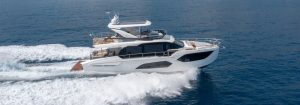
The foredeck often has a large sundeck bordered by a “bowplate” for hauling anchor. The bow is often “fenced in” by the handrails, which are vital grips for safety at sea.
Let’s get to why a yacht is called a flybridge. The flybridge is an upper deck, open 360 degrees and often covered by a hard-top, a roof usually made of fibreglass. The flybridge usually has an additional helm station to steer from a more panoramic position. An additional galley is often located on the flybridge, as well as additional lounge seating and sun decks.
Open Yachts
An open yacht has no flybridge and its main deck is commonly all open. The helm station can frequently be sheltered by a T-Top. Below deck, depending on the length of the yacht, there are living spaces for the crew which may include dinette, cabins and facilities. Open yachts can be walk-around, i.e. with the possibility for passengers of walking freely around the perimeter of the boat, or they can have an enclosed bow and thus have a raised deck.
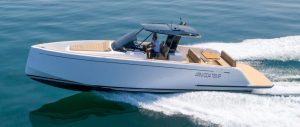
A coupe yacht is a yacht without a flybridge, characterized by a sporty design, with the main deck open aft. Very often it has a sunroof and is always equipped with side-decks connecting the stern to the bow. It is a vessel that, depending on its size, is suitable for medium to long-distance cruising.
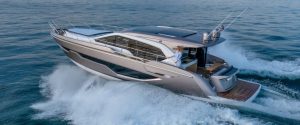
This is an important type of yacht, which has its origins on the American East Coast where it was used to catch lobsters. It has a romantic, sometimes vintage aesthetic, and is endowed with sinuous lines that, for some, are evocative of the 1950s. Very suitable for cruising and conviviality, thanks also to a large sofa in the cockpit, the lobster is an iconic boat that offers plenty of comfort and space below deck for at least one cabin and one head.
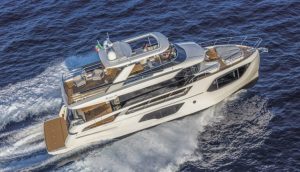
The trawler is essentially a yacht for owners who want to spend a lot of time on board. This is why interior volumes are maximized and the upper deck is always present. Also part of the trawler family are the famous Menorcan boats, inspired by the llaüts of the Menorca island..
Increasingly popular among motor yachts, too, is the multihull, due to its inherent features of stability and capacity. In most cases it is a catamaran designed for long stays at sea.
Sailing yacht
Sailing yachts are vessels where propulsion should mainly rely on the power transmitted by the wind. In the past, sailing yacht engines were low-powered and mainly used for entering and leaving ports, but today, for obvious reasons of practicality and ease of use, they have enough power to make the sailing yacht cruise at a speed at least equal to its theoretical hull speed. This means that sailing yachts can be used efficiently even in the total absence of wind.
A sailing yacht can be rigged in many different ways, these being the most common in modern times:
Sloop : this is the most common rigging on modern boats, characterized by the presence of a single mast with a mainsail and a jib or genoa. Sloop rigging has become popular over the years because it is the easiest to handle with a small crew and also offers the best ease of use/sailing performance ratio.
Cutter : Widely used for long distance sailing, it is characterized by the presence of a mainsail and two jibs rigged on a single mast. Normally the two jibs are a genoa and foresail that are used individually, depending on the weather conditions.
Ketch : this is the most commonly used rig on two-masted sailing yachts, with a mainmast, rigged with a mainsail and genoa, and a mizzenmast, forward of the rudder shaft, rigged with a single mainsail. The splitting of the sails makes this type of yacht suitable for sailing in bad weather.
Yawl : exactly the same as a ketch but with the mizzen mast located aft of the rudder shaft.
Sailing yachts can be monohulls or multihulls, i.e. catamarans or trimarans, but in all cases they can be divided into these categories:
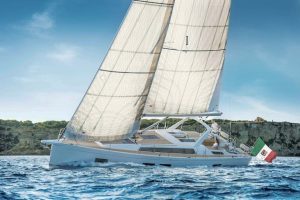
Easy to handle and with plenty of space above and below deck, this type of yacht is normally characterized by an unbalanced length/width ratio favouring the latter, a small sail area and more powerful than average engines.
The interiors are fully equipped and sophisticated, with each cabin often having its own en-suite head.
The deck plan and sailing equipment are simplified, often electrified and minimal.
Cruiser-Racer
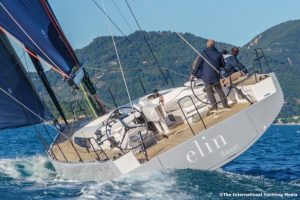
This yacht, while still featuring a luxurious and complete interior, also has all the equipment needed for sail fine-tuning and a generous sail area.
This is a category where special attention is paid to both the overall weight of the boat and the hull shape.
The hull lines are in fact designed to enhance performance and, inevitably, this results in a slightly smaller interior than that of pure cruising yachts of the same length.
Racer-Cruiser
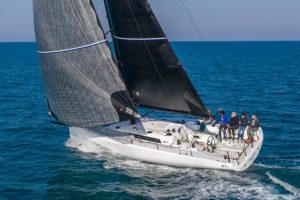
The owner who buys this type of yacht has already competed in club competitions and now wants to engage in higher level racing. The hulls are light and can sometimes be made of carbon, and all the sail adjustments are fine-tuned to achieve maximum performance.
The deck plan is definitely designed for crewed racing and the sail area/displacement ratio is unbalanced in favour of the former, making this yacht more difficult to handle with a smaller crew but, conversely, capable of performance similar to a pure racing yacht.
A pure racing yacht is a sailing yacht built exclusively for racing. Free from any commercial constraints, it is built according to the type of race to be competed in and, above all, the rating to be obtained. The interiors of this boat are minimal. This yacht is capable of planing and sailing upwind at very low wind angles, but is almost never used for recreational purposes.

Leave a Reply Cancel reply
Your email address will not be published. Required fields are marked *
Save my name, email, and website in this browser for the next time I comment.
Language switcher
Browse categories.

You might be interested in
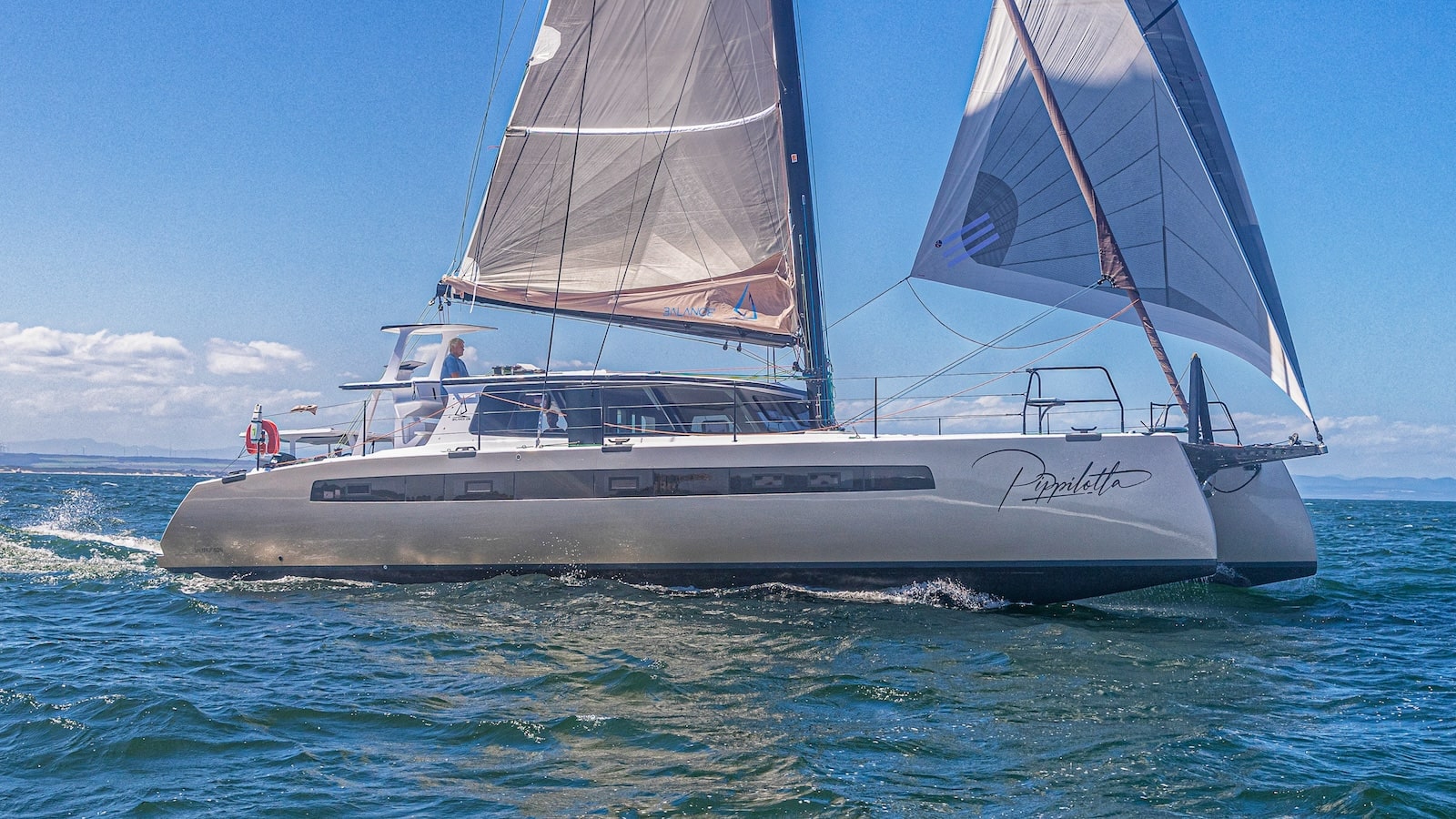
Balance Catamarans heads to storm the Cannes Yachting Festival
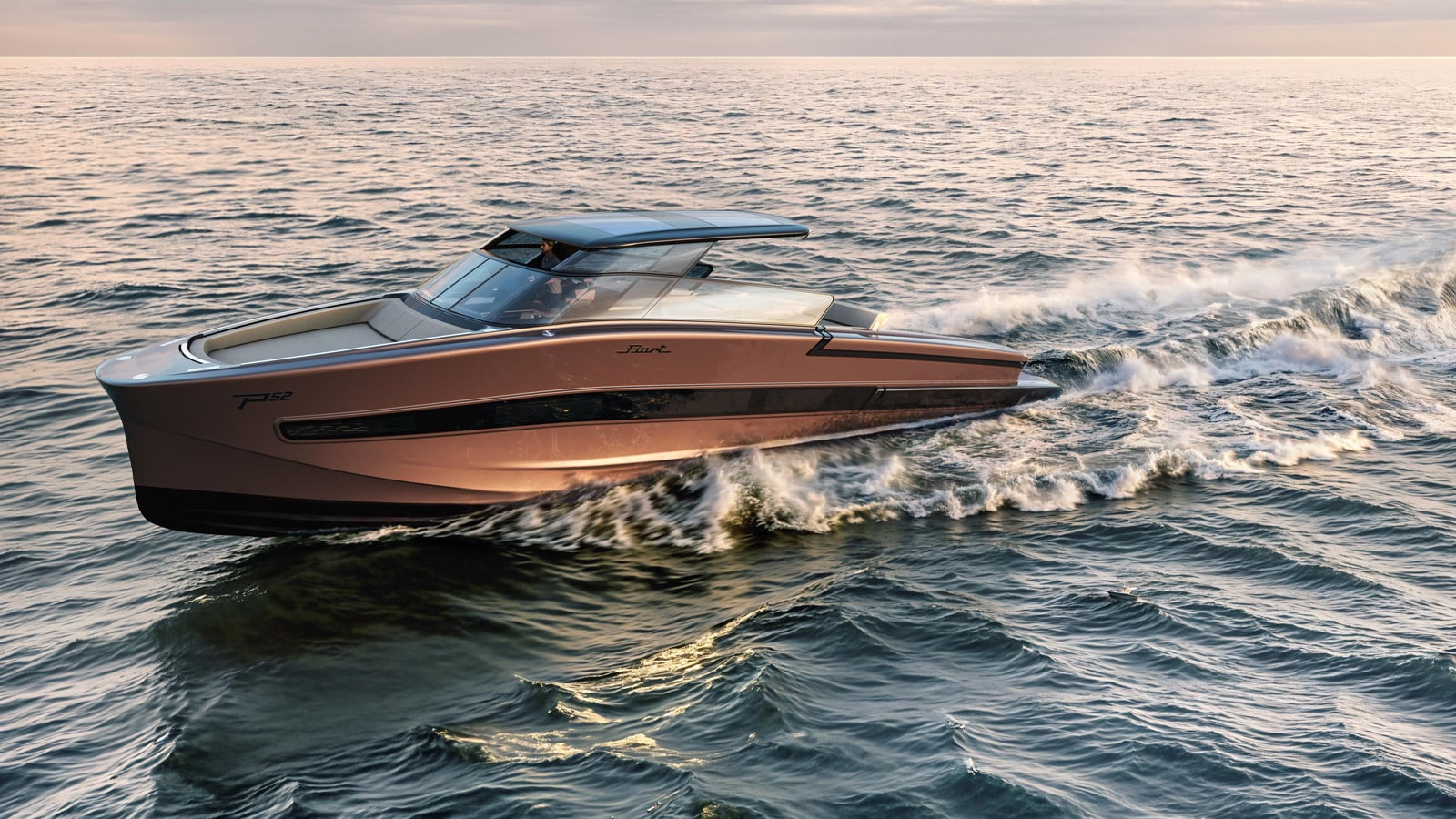
Fiart at Cannes with the new models from the P lines and the complete Seawalker range
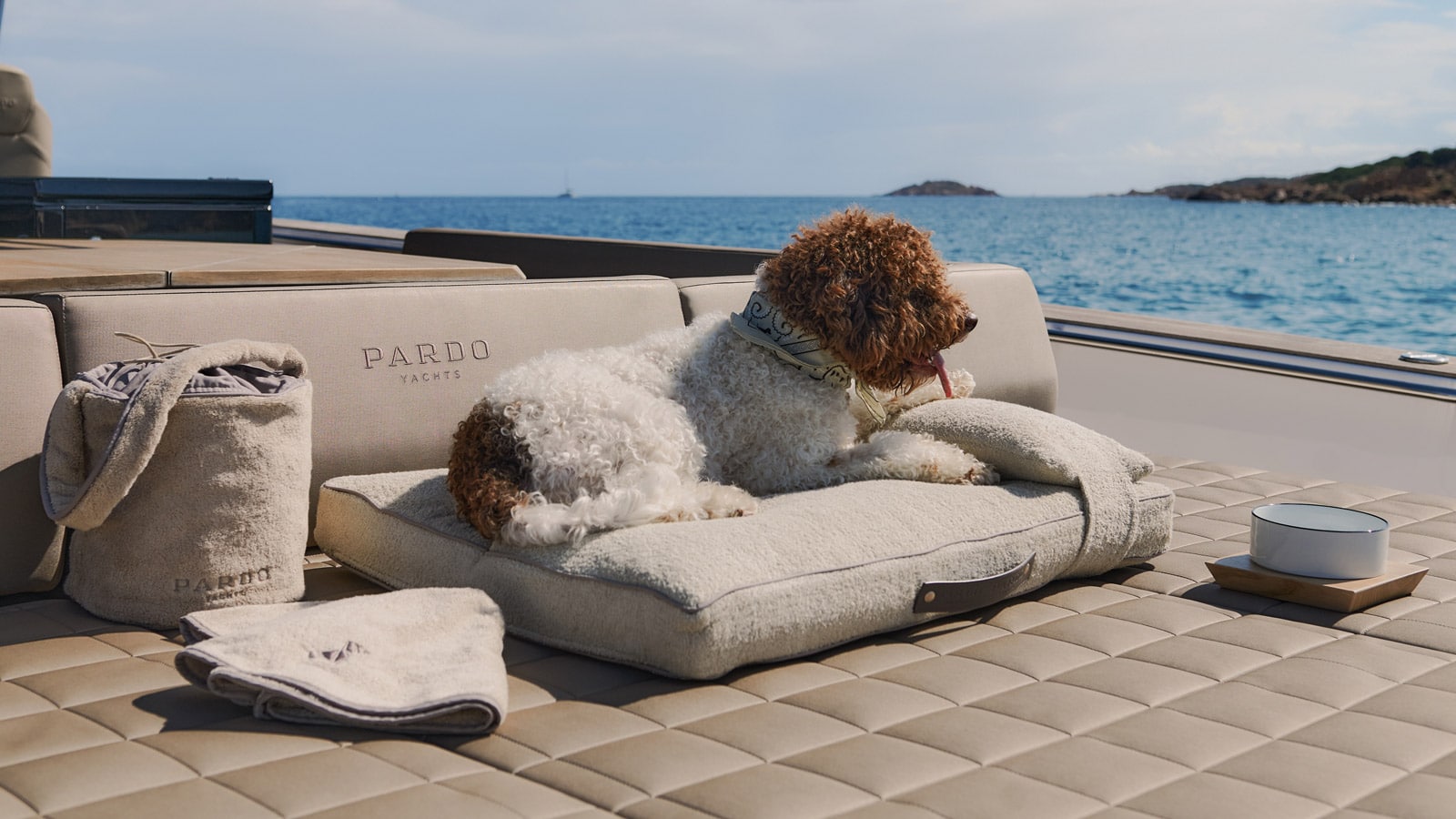
Poldo Dog Couture: the luxurious dog kit for boating
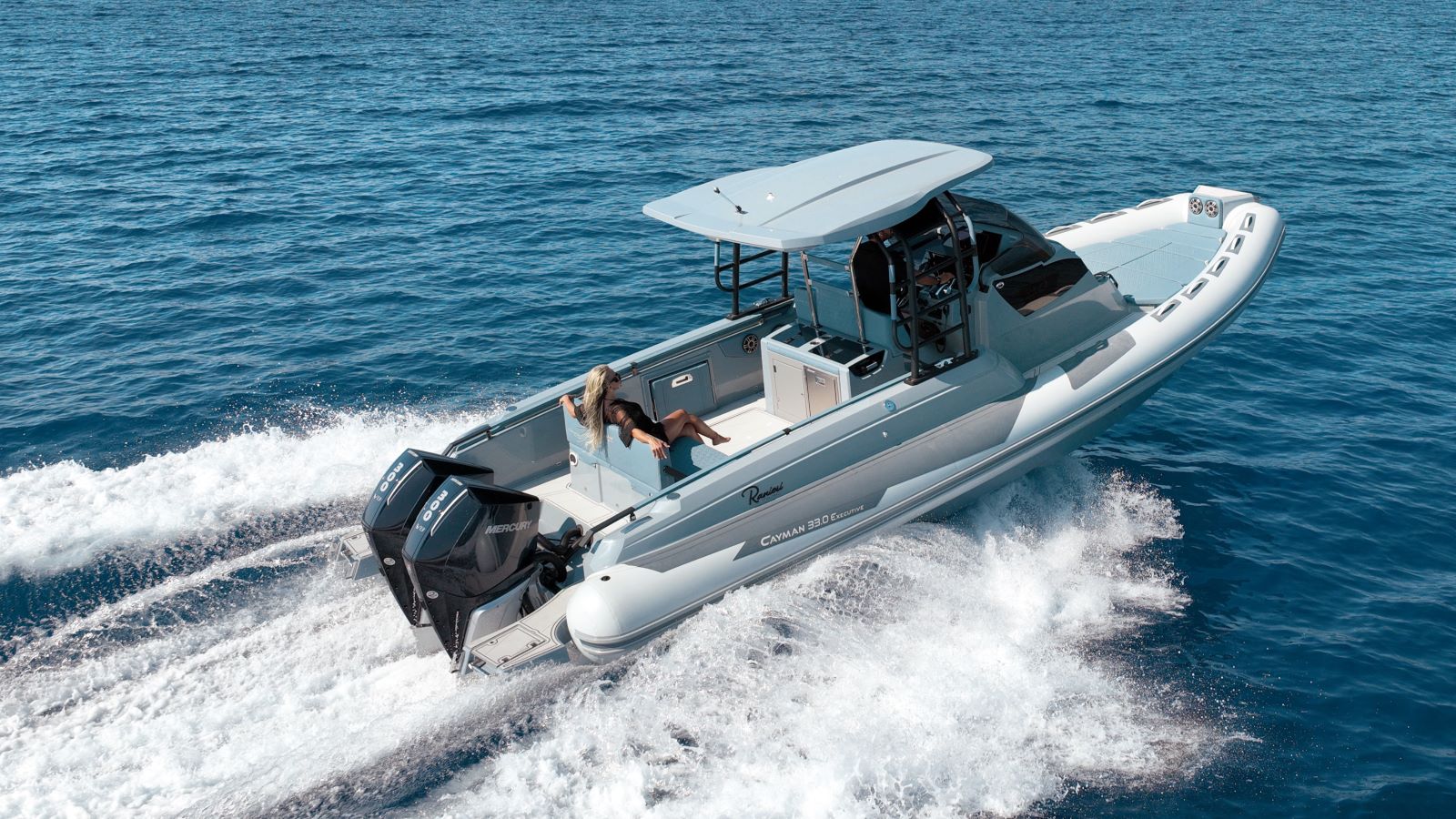
Ranieri Cayman 33.0 Executive, a breath-taking test

© 2021 – THE INTERNATIONAL YACHTING MEDIA Designed by BLive Communication
ABOUT YACHTINGNEWS.COM
Yachting News is an interactive multimedia magazine dedicated to the world of boating.
The International Yachting Media is the worlds most widely read boating magazines network. Whit its portal It broadcast its original contents in five languages and in more than 200 countries developing 950,000 views a week. Our web portals are the main source of information for yacht and boat owners, the place where they can find anything about their boating passion.
THEINTERNATIONALYACHTINGMEDIA.COM | SUPERYACHTS.NEWS | YACHT DIGEST
VIRTUAL BOAT SHOW | TUTTTOBARCHE | TOUSLESBATEAUX | TODOSLOSBARCOS
BOATING NEWS FREE APP

To provide the best experiences, we and our partners use technologies like cookies to store and/or access device information. Consenting to these technologies will allow us and our partners to process personal data such as browsing behavior or unique IDs on this site and show (non-) personalized ads. Not consenting or withdrawing consent, may adversely affect certain features and functions.
Click below to consent to the above or make granular choices. Your choices will be applied to this site only. You can change your settings at any time, including withdrawing your consent, by using the toggles on the Cookie Policy, or by clicking on the manage consent button at the bottom of the screen.
Subscribe For Latest Updates
Sign up to receive the best of Yachting News, sea trials, boat review and world premieres .
The only ADVERTISING FREE newsletter

- Mail: [email protected]
- Call Us: +44 (0) 23 8045 8737
How to sail: A-Z of Yachting Terms
When learning how to sail have you ever wondered when you are on a yacht what some of those yachting terms mean, we have asked our RYA Training Centre pupils which ones confuse the most. Here are a selection, which includes the obvious to the more obscure!
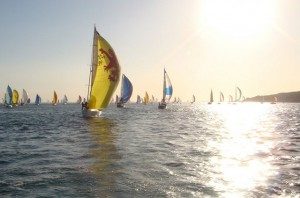
A baft: A location on the boat but further to the rear of the boat. “The tiller is abaft the mast.”
A beam: The beam is the widest part of the boat. When another boat is abeam, it is at a right angle off the beam to either the starboard or port side of the boat you are on.
A ft: When on a boat you refer to the stern part of the boat as being aft or to the rear of the boat.
A head: A term used to describe the area in front of the boat you are on. “Look ahead.”
A ids to Navigation: This includes all external systems like channel markers, preferred route buoys, danger and safe water buoys, isolated danger and regulatory markers etc. that help determine a boats position or course, the presence of dangers or obstructions and the preferred route to navigate.
A midships: In the middle of the boat between the stern and the bow.
A pparent Wind: The apparent wind is a combination of the true wind and the wind caused by the boat travelling through the water. On an windex, the apparent wind will cause the windex to show wind direction just in front of the true wind.
A stern: A location off the boat and behind it.
B ulkhead – Refers to an often watertight, interior wall on the boat
Backing Wind: Refers to the wind shifting direction in a counter-clockwise direction. This usually means that bad weather is approaching.
Backstay: A wire running from the top of the mast to the stern of the boat. The backstay stops the mast from falling forward and also helps to control the degree of mast bend when tuning a boat.
Battens: Wood, fiberglass or plastic strips slid into pockets along the leech of the sail. Battens help to shape and strengthen the sail to increase overall performance.
Beam: The widest part of the boat.
Beam Reaching: One of the points of sail. You are ‘beam reaching’ when sailing directly sideways to the wind on either a port or starboard tack. Think of a clock face – if the wind is blowing from 12 o’clock, sailing at between 3 o’clock or 9 o’clock would be a beam reach.
Bearing Away: Turning away from the wind or turning downwind.
Beating: Sailing towards the wind by tacking back and forth across the wind.
Belayed: Secured, tied to, made fast to.
Bend On: To secure one thing to another. Tieing two lines together.
Bifurcation: A channel junction (two channels meeting) usually marked by a ‘bifurcation buoy’ indicating the perferred channel to follow.
Bight: A loop or bend in a line.
Bilge: The lowest inner part of a boats hull.
Bitter End: The utmost free end of a line. (The other end is referred to as the ‘Standing Line’).
Boat Wind: The wind created by the boat moving through the water. The true wind and the boat wind combine to create the apparent wind direction.
Boat Fall: Rigging used to raise or lower a ship’s boat.
Boat Painter: Rope tied to the front end of a boat used to either tow a boat or to secure it to a dock.
Bollard: Wooden or iron post on a pier to which the boat is secured.
Boom: The boom is the pole running aft from the mast to which (among other things) the foot of the mainsail is attached.
Bowline: A very strong and yet easy to untie knot that creates a loop in the end of a line.
Breastlines: Mooring lines that run from the bow and the stern at right angles to the dock to stop the boat from drifting out from the dock.
Broad Reach: One of the points of sail. Sailing downwind off to the port or starboard side. Think of a clock face – if the wind is blowing from 12 o’clock, sailing at between 4-5 o’clock or between 7-8 o’clock would be a broad reach.
By the Lee: Sailing downwind with the mainsail remaining on the same side of the boat that the wind is hitting. If you are sailing downwind on a port tack, typically the mainsail would be off the starboard side of the boat. When sailing ‘by the lee’, the mainsail in the same situation would remain on the port side of the boat out at a 90 degree angle to the boat.
C lew – The lower aft corner of a sail
Cabin: The below deck living quarters.
Cable: Measurement of distance equal to 0.1 nautical mile.
Cam cleat: A fitting through which a line is run through. The cam cleat consists of two cams that wedge against the line stopping it from being pulled out.
Cardinal Aids to Navigation: Buoys with indicate the location of hazards, safe water or deep water by reference to the four cardinal points of a compass (North, South, East, West).(See our section on buoys for a more complete explanation.)
Catboat: A boat with one mast flying no foresail (jib).
Cast Off: To release the lines allowing the boat to leave it’s mooring.
Chainplates: Very strong metal plates affixed to the hull to which the forestay, backstay and shrouds are attached.
Chart Datum: For navigational safety, depths on a chart are shown from a low-water surface or a low-water datum called chart datum. Chart datum is selected so that the water level will seldom fall below it and only rarely will there be less depth available than what is portrayed on the chart
Chock: a metal fitting, either oval or U-shaped, through which mooring lines are passed. Chocks help reduce abrasion saving the lines from excessive wear and tear.
Cleat: A small, metal deck fitting with horns used for securing lines (belaying).
Clew: The lower rear corner of a sail.
Close Reach: Point of sail – sailing against the wind at an angle somewhere between a Beam Reach and Close Hauled. Think of a clock face – if the wind is blowing from 12 o’clock, sailing at 2 o’clock or 10 o’clock would be a close reach.
Close Hauled: Point of sail – sailng as close to the wind (sharp angle to the wind) as possible without the sailings luffing (fluttering).
Cockpit: The open inset area from where the boat is steered.
Companionway: Stairs or ladder on a boat usually leading down to the cabin.
Cringles: Open metal rings inserted into the sail (also called grommets) used as reefing points for a sail but also found at the clew, head and tack of the sail to attach halyards, lines, outhauls etc.
Cunningham: A line used to adjust the forward edge of the mainsail. Usually runs from the tack of the sail to the front area of the boom.
Current: The horizontal flow of water. (Tide is the vertical flow of water.)
Cutter: A cutter has one mast but sails with two foresails.
D raft – This describes the depth of a boat measured from the deepest point to the waterline
Davit: A crane onboard that can be swung out over the side for hoisting or lowering boats.
Dead Reckoning: Navigational term – method used to plot the course already travelled by measuring speed and time to calculate distance.
Deep Six: A slang term meaning to discard something over the side of the boat.
Degree: A distance of measurement on a nautical chart. One degree equals 60 nautical miles. Each degree is broken down into 60 minute intervals. One minute of one degree equals 1 nautical mile.
Deviation: A ship’s magnetic compass reading can be affected by metal objects on the boat (electronic equipment etc). The difference between the correct magnetic reading and the ships compass magnetic reading is called deviation. Deviation will vary depending on the direction of the boat.
Dog: A metal fitting used to secure watertight doors, hatch covers and scuttles.
Downhaul: A line attached to the tack of the sail and used to pull down or tighten the mainsail to increase sale efficiency.
E ase: To let out or ‘ease off’ a line.
E nsign – The national flag of the boats home country
F Fairleads: A metal fitting through which lines are run to in order to change the direction of the lines while reducing friction on the lines.
Fairway: Sailing on inland waters, fairway means an open channel or being in midchannel.
Fast: To make fast. To secure (snugly tie) a line to something.
Fathoms: A unit of measurement. One fathon equals 6 feet.
Fenders: Cylindrical air filled plastic or rubber bumpers hung off the side of a boat or dock to prevent damage to both dock and boat.
Fetch: The distance over open water the wind has blown.
Faked: A line is faked by zig zagging it back and forth so that when it is used it will not tangle on itself.
Flaked:A sail is flaked when lowered. Flaking a sail is the process of folding the sail back and forth upon itself like the blades on a paper fan. Flaking a sail will help prolong the sail life.
Foot (Sail): The foot of a sail is the lower part of the sail. In the case of a mainsail, this is the part of the sail that runs along the boom.
F orepeak- The cabin most forward in the bow of the boat
Forestay: The forestay is a wire that runs from the top of the mast (or near the top of the mast) to the bow of the boat. The forestay supports the mast from falling backwards and is also used in shaping the bend in the mast for maximum efficiency. The luff (front) of the foresails (jib, genoa) are also generally attached to the forestay depending on the rigging system.
Forward: When on a boat, forward means towards the bow. “Move forward” – move towards the front of the boat.
Galley: The boat’s kitchen.
Genoa: The Genoa is a foresail that is larger than a jib. The clew (lower corner at the foot of the sail) extends aft of the mast unlike a jib.
Give-way Boat: Navigational rules – the boat not having the right-of-way. The Give-way boat must stay clear of the Stand-on boat. The Give-way boat must make it’s intentions known by making a decisive maneuver to alert the Stand-on boat.
Gooseneck: This is a metal fitting that attaches the boom to the mast.
G oosewinging – To sail downwind with the mainsail set on one side and the foresail on the other
Gybing: Sailing down wind and turning through the wind causing the sails to move from one side of the boat to the other.
Gybe ho: Term used by the helmsman to let his crew know that he has started to turn the boat into a gybe.
H alyard – A line which is used to raise things on a boat, so the main halyard line would be used to raise the mainsail
Halyards: Lines used to lower and raise sails.
Hanks: Clips found along the luff (front) of the foresail used to clip the sail onto the forestay (wire running from the bow to the top or near the top of the mast).
Hard over: Turning the wheel or pushing the tiller all the way over.
Head: Generally used to refer to the boat’s toilet. When talking about a sail, the Head is the top of the sail.
Head to Wind: The bow of the boat is pointed directly into the wind.
Heading up: Turning up more into the wind.
Heaving to: A way to, in effect, stall a sailboat by backing the jib, easing out the mainsail and turning the rudder hard into the wind. The forward wind pressure on the foresail wants to force the bow downwind. The rudder turned towards the wind wants to force the bow windward. These two counter effects balance each other causing the boat to hold it’s position with little movement. The mainsail is eased out all the way so that it does not catch any wind and therefore has no bearing on the boats postion.
Heeling: Leaning or heeling over caused by wind pressure on the sails.
Helm: The Helm is the steering mechanism of the boat (wheel or tiller). The person at the helm is called the helmsman.
Helms Alee: A term used by the helmsman to notify the crew that he has started to tack. Hypothermia: A dangerous condition where the body core temperature has been lowered causing extreme shivering, loss of co-ordination, in ability to make decisions and in extreme cases, loss of conciousness and even death.
I nlet – A recess, such as a cove or bay, along a coastline
In Irons: This occurs where the boat has been turned directly into the wind and has lost all forward momentum. Without forward momentum the boat loses it’s ability to steer.
J ackstay – A strong line, that can be made of wire, which runs fore and aft alongside the boat that can be used to attach your safety harness to.
Jacob’s ladder: A light ladder made of rope or chain with metal or wooden rungs used over the side or aloft.
Jib: The jib is a foresail (smaller than a genoa). The jib is about the same size as the triangular area between the forestay, mast and foredeck.
Jiffy reefing: This is a way to make the mainsail smaller by partially lowering it, tying or reefing the lower slack part of the sail onto the boom through gromets (holes in the sail) called reefing points. This is done in high wind conditions to power down the sail.
Jury rig: Makeshift – adapting parts and materials for a use not specifically designed for in order to get by until proper parts or repairs can be obtained.
K etch – A sailboat with 2 masts
Kedging: A method used to free a grounded boat by dropping it’s anchor in deeper water and then pulling on the anchor rode to attempt to free the boat.
Keel: The large heavily weighted fin like structure secured to the bottom of the boat. The keel helps to keep the boat upright and also reduces leeway (side slipping across the wind).
Ketch: A two masted boat. The second and smaller mast (mizzen) is positioned just forward of the rudder post.
Knot: Rate of speed. On land it is miles per hour, on the water it is knots (nautical miles) per hours. One knot equals 1.15 land miles – so one knot is just a bit faster than one mph.
L eeway – The sideways movement of a boat caused by wind and currents
Lateral Aids to Navigation: channel buoys (Red & Green), isolated danger buoys (Black & Red), safe water ahead (Red & White), regulatory buoys (Yellow), bifurcation buoys (Black & Yellow) plus channel identification markers and navigation markers are all considered Laterial Aids to Navigation.
Lazarette: A storage compartment, usually under the seats of the cockpit.
Lee Helm: Also called Weather Helm, this is the tendancy of the boat to turn into the wind once it has heeled over at a sharp angle.
Lee Shore: Feared by most sailors, this is the downwind shore from the boat.
Leech: The rear edge of the foresail or the mainsail running from the head (top) to the clew (rear corner) of the sail.
Leeward: Downwind.
Leeway: When a boat sails across the wind, the force of the wind causes the boat to slip sideways. This drifting or sideway motion is known as Leeway.
Lifelines: The lines running around the outside of the deck creating a railing. The lines are attached to stanchions (upright metal posts).
Luff: The forward edge of a sail running from head to tack (front corner of the sail).
Luffing: A sail is luffing when it starts to flutter in the wind. The term Luff is also used to describe the same situation. “The sail is starting to luff.”
Luff Up: To turn into the wind to cause the sails to start luffing.
M ultihull – Any boat that has more than one hull, such as a catamaran.
Made fast: Secured to.
Mast: The upright pole supported by the shrouds, forestay and backstay to which the sails are attached.
Masthead fly: A windvane attached to the top of the mast to show which direction was wind is coming from.
Monkey fist: A type of knot, heavy in nature and tied to the end of the rope. The weighted knot makes it easier to throw the rope a farther distance.
Mooring ball: An anchored ball to which you can secure your boat. Safer alternative to anchoring provided the mooring ball and lines are in good condition.
Mooring lines: Lines used to secure a boat to a dock or mooring ball.
MSD: Marine sanitation device (toilet).
N eap tide – When during the four week tidal cycle, the tide rises and drops the least.
Nautical mile (NM): International standard for measuring distance on water. One nautical mile equals one minute of latitude. (One nautical mile equals 1.15 land miles.)
O uthaul – This is a line used to tension the foot of the sail, to better control the curvature of the sail
P ulpit – A sturdy rail around the deck on the bow, normally surrounding the forestay
Pad eye: A metal eye (ring) through which lines can be passed in order to stop chaffing.
Painter: The bow line of a dinghy.
P-effect (Prop Walk): When a boat is in a standstill position and put into forward or reverse, the resistance of the boat to move and the motion of the propeller creates a paddlewheel effect pulling the stern of the boat to either port or starboard side depending on the spin of the propeller. This paddlewheel effect is known as P-effect or Prop Walk. P-effect is especially noticable in reverse where there is greater boat resistance to move backwards thus making it easier for the prop to pull the boat sideways.
PFD: Personal Floatation Device – life jacket.
Pintle and gudgeon: The pintle and the gudgeon together form a swinging hinge usually associated with the installation of the rudder on smaller tiller steered boats. The pintle has pins that fit into the holes on the gudgeon thus creating a hinge like fitting.
Points of sail: A reference for the direction the boat is travelling in relation to the wind. (in irons, close hauled, close reach, beam reach, broad reach, running)
Port: When on a boat and facing forward, the left hand side of the boat.
Port tack: Sailing across the wind so that the wind hits the port (left) side of the boat first.
Pulpit: Located at the bow of the boat, this area is enclosed by a metal railing.
Pushpit: Located at the stern of the boat and like the pulpit, this area is enclosed by a metal railing.
Q uadrant – This is a device connected to the rudder that the steering cables attach to
R egatta – Boat races
S hroud – The wires at the side that hold the mast up
Schooner: A sailboat that has two masts both the same height or on some schooners, the aft mast is higher than the fore mast.
Scope: Expressed in terms of a ratio, it is the length of the anchor rode let out compared to height above the sea bed. Height is measured not from the water line but from the top of the deck to the sea bed. A safe anchoring ratio is 1:7 which translates to 7 feet of anchor rode for every foot of height. Many sailors incorrectly assume that height means water depth and therefore find themselves dragging the anchor for lack of proper scope.
Seaworthy: A boat that is fit to be sailed at sea.
Self-bailing cockpit: A cockpit that allows water to drain automatically from the cockpit to the outside of the boat.
Shackles: Metal fittings (often U shaped) that open and close with a pin across the top of the ‘U’. Lines and halyards often use shackles. The mainsail halyard is secured to the head of the mainsail with the use of a shackle.
Sheave: A roller/wheel to guide a line or wire.
Sheets: Lines that are used to adjust sails by either pulling them in or by letting them out.
Shrouds: Also called sidestays, shrouds are the metal wires found on both sides of the mast running from the deck to the top or near top of the mast. The shrouds support the mast by providing lateral support.
Slack water: The period between the flood (tidal water moving in) and the ebb (tidal water moving out) where the water has in effect stalled – little or no movement.
Slides: The groove in the mast to which the luff (front side) of the mainsail is inserted. The slides hold the sail tight against the mast and allows the sail to be easily raised or lowered.
Sloop: a sailboat that has one mast and sails with the mainsail and one foresail.
Soundings: Water depths.
Spar: A spar can refer to any of the following: mast, boom or a pole.
Spinnaker: A large balloon-like foresail used for sailing downwind (running or broad reach).
Spinnaker pole: The spinnaker pole is boom-like in nature, but smaller and lighter, and attaches to fore part of the mast a few feet up from the deck. The other end of the spinnaker pole attaches to the leeward (down wind) base of the spinnaker.
Spreaders: Bars extending sideways from the mast (gives the mast a cross-like appearance). The spreaders hold out the shrouds so that they do not interfer with the rigging.
Springlines: Springlines are used to secure a boat to a dock and stop the boat from moving forward or backwards. The aft springline runs from a point on the boat near the bow to a point aft on the dock. The forward springline runs from a point on the boat near the stern to a point forward on the dock.
Squall: A sudden isolated storm associated with potentially high wind gusts.
Stanchions: Upright metal posts running around the outside of the deck supporting the lifelines.
Stand: This refers to the short period of time where the tide is neither rising or falling. (At a stand still.)
Standing rigging: Standing rigging includes the forestay, backstay and the shrouds. Unlike the ‘running rigging’, the standing rigging is generally only adjusted when the boat is not underway.
Stand-on boat: The boat that must retain her current course and rate of speed in order to avoid a potential collision with an approaching give-way boat.
Starboard: As you face towards the bow on a boat, starboard is the right hand side of the boat.
Starboard tack: Sailing across the wind with the wind hitting the starboard (right) side of the boat first.
Steerage: The ability of the boat to be steered. In order for a rudder to be effective in steering a boat, there must be boat movement. A boat not moving cannot be steered.
Stern: The most aft part of a boat (the very back of the boat).
Storm jib: Same as a jib but not as big. The smaller sail is used in high wind conditions.
T ender – A small boat or dinghy used to ferry crew between the boat and shore
Tack: The front lower corner of a sail. Also means to sail back and forth across the wind in either a port or starboard tack.
Tacking: Also called “Coming About”. Tacking is when the bow of the boat is turned through the wind onto the opposite tack.
Tail: The bitter end of a sheet tailing out from a winch.
Tang: A metal fitting used to affix the stays to the mast.
Telltails: (Also called Ticklers) These are small strings (wool, plastic) attached to both sides of the luff of the sail. When the telltails on both sides of the sail are blowing straight back, this indicates that the sail has been properly trimmed.
Through hulls: Through hulls are holes that go through the boat. Each through hull will have a shuttle cock (value) to stop the flow of water. An example of a through hull would be the head (bathroom). A through hull value is opened so that water from outside the boat can be pumped into the MSD (toilet). The value is closed and the toilet pumped empty into a holding tank.
Tide: The vertical rise and fall the oceans.
Tide rips: This is an area of rough water where the wind is blowing across the water in the opposite direction from which strong tidal current is flowing.
Tiller: In boats that are not steered by a wheel, a tiller (long handle) is attached to the top of the rudder in order to facilitate steering.
Toe rail: A small metal railing running around the outside of the deck used to support your feet.
Topping lift: A line running from the top of the mast to the end of the boom. The topping lift supports the boom when the sail has been lowered.
Topside: The portion of the hull above the water line.
Transom: The flat area across the stern of the boat.
Trim: To trim or adjust the sail to make it more effective against the wind.
True wind: The actual wind felt wind the boat is not moving.
Turnbuckles: Adjustable fittings usually attached at the end of shrouds and stays. Turning the turnbuckle one way or the other tightens or loosens the wire.
U nfurl – To unroll a sail
Upstream: Moving from seaward into harbor, moving with the flood of the tide, moving up river toward the headwaters.
V ane – A wind direction indicator
Veering: A wind shift in the clockwise direction usually indicating that good weather is approaching.
W inch – A mechanical device for pulling in a line
Wake: The waves created behind a boat as a result of the boat moving through the water.
Way: Movement of the boat.
Weather helm: The tendancy of the boat to turn up wind after heeling (leaning over).
Wheel: Controls the rudder. Taking control of the wheel is taking the helm.
Winch: Provides a mechanical advantage. Used to raise the sails, tighten the sheets and other lines.
Windward: Towards the wind.
Wing to wing: Running (sail directly downwind) with the mainsail out one side of the boat and the foresail out the other side of the boat.
X marks the spot on the treasure map!
Y awing – The side to side movement of a boat on an uneven course
Yawl: A sailboat that has two masts. The aft mast (mizzen) is shorter than the foremast. The mizzen mast is located aft the rudder post. (On a Ketch, the mizzen mast is located fore of the rudder post – this is the distinquishing factor between the two.)
Z ephyr – A very light westerly wind
Universal Yachting Ltd
- Contact us | UK Dufour Dealer
- Solent Yacht Charter Terms & Conditions
- Privacy Policy
- DATA REQUEST
- Dufour Yachts
- Boats For Sale
- Yacht Charter

Universal Yachting Ltd: Mercury Yacht Harbour, Satchell Lane, Hamble, Southampton, Hampshire SO31 4HQ
Call Us: +44 (0) 2380 458737 Mail: [email protected]

Synonyms of boat
- as in vessel
- as in to sail
- More from M-W
- To save this word, you'll need to log in. Log In
Thesaurus Definition of boat
(Entry 1 of 2)
Synonyms & Similar Words
- cockleshell
- torpedo boat
- assault boat
- air - cushion vehicle
- aircraft carrier
- merchantman
- merchant ship
- supertanker
- containership
- man - of - war
- man - o' - war
- square - rigger
Thesaurus Definition of boat (Entry 2 of 2)
Examples of boat in a Sentence
These examples are programmatically compiled from various online sources to illustrate current usage of the word 'boat.' Any opinions expressed in the examples do not represent those of Merriam-Webster or its editors. Send us feedback about these examples.
Articles Related to boat
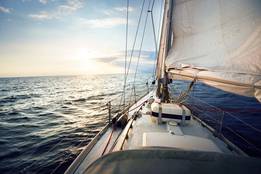
What's the difference between a 'boat'...
What's the difference between a 'boat' and a 'ship'?
And which one holds the gravy?
Thesaurus Entries Near boat
Cite this entry.
“Boat.” Merriam-Webster.com Thesaurus , Merriam-Webster, https://www.merriam-webster.com/thesaurus/boat. Accessed 18 Aug. 2024.
More from Merriam-Webster on boat
Nglish: Translation of boat for Spanish Speakers
Britannica English: Translation of boat for Arabic Speakers
Subscribe to America's largest dictionary and get thousands more definitions and advanced search—ad free!

Can you solve 4 words at once?
Word of the day.
See Definitions and Examples »
Get Word of the Day daily email!
Popular in Grammar & Usage
Plural and possessive names: a guide, commonly misspelled words, how to use em dashes (—), en dashes (–) , and hyphens (-), absent letters that are heard anyway, how to use accents and diacritical marks, popular in wordplay, 8 words for lesser-known musical instruments, it's a scorcher words for the summer heat, 7 shakespearean insults to make life more interesting, 10 words from taylor swift songs (merriam's version), 9 superb owl words, games & quizzes.

- Dictionaries home
- American English
- Collocations
- German-English
- Grammar home
- Practical English Usage
- Learn & Practise Grammar (Beta)
- Word Lists home
- My Word Lists
- Recent additions
- Resources home
- Text Checker
Definition of yacht noun from the Oxford Advanced Learner's Dictionary

11 Different Types of Yachts
Posted on Published: April 13, 2022 - Last updated: June 13, 2022

The Dutch navy first used the yacht in order to catch pirates . Until the 1950s, the primary materials used for building a yacht was wood. Today, yachts of all types and sizes are constructed of various materials including steel, aluminum, plywood , and veneers.
When Charles II used it for his own personal use, the yacht became a luxury boat often owned by important people all over the world. As a result, yachts are often associated with luxury . According to UBS and Wealth-X’s annual World Ultra Wealth Report for 2014, the world’s super-rich spends the most on their yachts at $22 billion a year.
Related: Floating Home Ideas | Types of Houseboats | Kayak Storage Ideas | Parts of a Boat Trailer
Sailing Yacht

The sailing yacht is one of the most traditional types of yachts that people purchase. When people want to be able to go out on the water and have a classic sailing adventure, owning a sailing yacht is going to be able to make that happen. These types of yachts are sailed with traditional sails, which can be quite challenging if you don’t know what you are doing. Sailing a ship using only the wind and your sails is a very interesting experience.
The fact that it is challenging and that it replicates the old way of doing things is precisely what is so appealing about sailing yachts. People who are very into sailing will absolutely adore owning one of these yachts. There are a few different types of sailing yachts that you will be able to choose from, as well. The traditional ones will only have sails to hoist and will not feature a motor.
You will also be able to purchase hybrid yachts that are primarily meant for sailing, but they also feature a motor. This can be very handy to have in case of an emergency. Being able to use the motor when you need to can be very convenient. If you run into issues with your sails or bad weather, it can be beneficial to be able to get back to port as quickly as possible.
There are also yachts that have sails, but they also have modern instruments to make navigation and sailing easier. You will be able to find a sailing yacht that will suit your tastes. Just think about what type of experience you want to have. Once you have looked over all of your options, you should come across the perfect sailing yacht for your journey.
Expedition Yacht

An expedition yacht isn’t the type of vessel that most people will purchase for random pleasure weekends. They would work just fine for those purposes, of course, but they are really meant for longer journeys. These yachts are capable of sailing for really long periods of time while remaining self-sufficient. This is crucial for people who are planning long sea voyages around the globe.
Expedition yachts are incredibly powerful, and if you ever get the chance to sail on one, you will be very impressed with it. These ships are capable of sailing very efficiently, as well. They make good use of the resources available in order to complete long journeys without any hassle. Vessels like this make it simple for people to stay out at sea for long periods of time without being inconvenienced.
One of the advantages of taking an expedition yacht on such a long journey is that you won’t have to sacrifice your comforts in any way. These yachts can be loaded up with everything that you need to stay entertained and happy on a long voyage. These luxury ships are able to combine efficiency and practicality with all of the luxuries that you enjoy. Some of the expedition yachts are so lavish that it isn’t unlike staying in a luxury hotel.
People use these expedition yachts to go all over the world. When someone wants to go on a journey to a faraway place in style, taking an expedition yacht is going to be one of the best options. These yachts are very pricey, and most people will not be able to afford them. A lavish expedition yacht is going to be even more expensive than most of the other yachts on this list.
Motor Yacht

A motor yacht is a modern version of the sailing yachts that everyone knows and loves. These types of yachts are among the most common. They are very nice to use for parties and even just casual getaways. People often charter these motor yachts for special occasions in order to have a really good time.
When most people think of a yacht, they think about some type of party ship. Many companies that charter out vessels such as these use them for upscale parties. These ships are just the right size to be able to host a fairly sizeable group. You will be able to have a fantastic time if you have a special event out on the water in one of these motor yachts.
Yachts like these usually include all sorts of fun things for people to enjoy. It isn’t uncommon for these yachts to have hot tubs, dance floors, bars, and even swimming pools. If you want to make your next birthday party truly special, then chartering a motor yacht may be your best bet. It can certainly help you to create some fantastic memories.
These motor yachts can be good for helping you to take a vacation, as well. Those who own these types of yachts will use them to sail to different destinations. They may not be well-suited to travel to certain places in the world depending on the type of hull that it has. Simply take all of the important factors into account before planning a voyage with your new motor yacht, and you will always have a great time.
Classic Yacht

Classic yachts are generally considered to be yachts that were built in the past. Some people have different definition and standards for what makes a yacht a classic. The older the yacht is, the more likely it is to be considered a classic yacht. There are yachts that were built in the 1920’s that are still being used as recreational vessels in the modern era.
People who own certain yachts from the 1970’s also consider their ships to be classics. The basics that you need to understand are actually fairly simple . A classic yacht has a certain feeling to it that you don’t get when you sail on a modern ship. These vessels are sometimes made mostly out of wood, and other classic yachts are made out of steel.
Many of these classic yachts were completely handcrafted. There is speculation that the handcrafted nature of these yachts is what ultimately gives them their charm. Whatever your feelings on the issue are, it is undeniable that the older style of yachts can be very appealing. These ships have a very interesting aura and seem to exude a classic sense of luxury.
Sometimes the interiors of these classic yachts will be kept the same as they were in the year that it was made. This can lead to some interesting design choices that may not mesh well with modern sensibilities. Regardless, if you want to get the full experience of the classic yacht, keeping things as they once did have some merit. If you want to get a feeling for what yachting was like in the past, then chartering a classic yacht can be a very intriguing experience.
Fishing Yacht

If you want to go on a fishing trip for your vacation, then you may want to consider doing so on a fishing yacht. There are yachts that are specifically designed for the purpose of fishing. Fishing is one of the oldest traditions that humanity has. So many people enjoy fishing for recreational purposes and being able to do so on a luxurious yacht is really something else.
There are yachts that are used for more casual fishing trips. You will also find that people use sports fishing yachts to go on fantastic fishing adventures. Sometimes people will use yachts to go to interesting places in the world where the fishing is said to be particularly noteworthy. Wherever you decide to take a fishing yacht will be interesting due to how fun these ships are to use.
You’ll have the normal luxuries that you will want to make use of in any yacht. These yachts can still be a great deal of fun for anyone who wants to have a party. The added benefit is that the deck of the ship is designed in a way that is conducive to fishing. You’ll be able to access the waters properly and will potentially be able to haul in some truly impressive catches.
The yacht will have plenty of room for all of your fishing gear, as well. When people charter a fishing yacht, it will sometimes come with all of the gear that you will need. You should check with the owners ahead of time so that you will know what you need to bring with you. If you’re a true fisherman, then you will definitely want to purchase one of these for yourself if possible.
Gulet Yacht

The Gulet yacht is something that originally comes from Turkey. This yacht is interesting because it can feature two or more masts. In the past, these vessels were used to transport goods. They are very worthy vessels that were originally designed to keep cargo safe from harm during transport.
Modern Gulet yachts are used more for pleasure. They are sought-after because of their beautiful wooden hulls. These hulls can be very ornate while still being practical and safe. People who appreciate the beauty of a finely- crafted ship will love owning one of these Gulet yachts.
This is an incredibly stable ship to sail in too. If you want to sail on a ship that is going to feel as natural as possible, then a Gulet yacht is a good choice to make. It is very sturdy and will be completely capable of getting you to your destination safely using only the wind in its sails. Modern Gulet yachts will also be equipped with motors, in most cases.
Gulet yachts are becoming more and more popular. People are starting to charter these yachts more frequently, and many yacht enthusiasts are pining to add a Gulet yacht to their fleet. The beauty of the ship combined with its fantastic capabilities makes it easy to see why it is so sought-after. These yachts are truly exceptional, and you will want to experience one first-hand when you get the chance.

If you don’t know a whole lot about ships, then you might see a catamaran yacht and wonder exactly what it is. A catamaran yacht is a vessel that has more than one hull. A design featuring two hulls can be ideal for certain situations. These yachts are very interesting from a visual perspective, and many of the design choices are quite fun.
Many catamaran yachts will have more room than a traditional yacht. This means that people will have more space to spread out, and it can be even more fun for parties. The overall layout of these catamaran yachts lends itself well to being a party vessel. This makes catamaran yachts among the most popular chartered ships each year.
Of course, there are different styles of catamaran yachts that you will be able to choose from. You will find that there are catamaran yachts with traditional sails and ones that feature a motor. Both of these types are actually fairly common, and sometimes a catamaran will feature both. The type of catamaran that you will want to charter will largely depend on your intentions for your excursion.
The interior of the yacht will typically be very stylish to accommodate the needs of its guests. This is definitely a luxury vessel through and through. No matter what style of catamaran you decide to go with, you will have an excellent time. It’s a good vessel to choose for those who get seasick, as well, since the increased hull space makes things feel less cramped.

Cruisers are yachts that are typically used for taking a small group out to have some fun. Unlike some of the incredibly large yachts listed earlier, cruisers can be a bit smaller inside. There are also large yachts that are classified as cruisers, but generally, you will be using cruisers for small recreational trips. If you want to go out on the water to have some fun with your closest friends, then owning a cruiser is going to be perfect for your needs.
These types of yachts are great when you want to be able to have some versatility. You will easily be able to access the water when you’re sailing a cruiser. This makes them perfect for those that want to go out fishing or even swimming in the ocean. You will be able to get where you need to go and will have a good time once you get there.
Yachts like these are typically a bit shorter than most of the other yachts featured here. Some of the fishing yachts will be around the same length. A cruiser may be between 30-feet and 60-feet long, although there are plenty of variances. Regardless of the size, it is still a great ship to own, and the fact that it is not overly long can be an advantage in some ways.
These are fun yachts that will be the perfect purchase for a first-time yacht owner. You can make a lot of fantastic memories when you have a vessel like this to use. The ship is generally very easy to handle, too, so it’s great for a newcomer to own for that reason. The cost of a nice cruiser is going to be agreeable as well, as it isn’t quite as costly as many of the other yachts that have been featured so far.
There are those who think of cruisers are more similar to speedboats. It is true that there are similarities between cruiser yachts and speedboats, but this is definitely distinct enough to be considered to be its own thing. You’ll be able to enjoy this cruiser yacht to its full potential without much worry. Whether you want to enjoy a romantic getaway or you are looking forward to a little party with your closest friends, you’ll love owning a cruiser yacht.

The flybridge design is very interesting because it will allow you to go fishing very easily. This is one of the most popular styles for fishing yachts. It makes accessing the water easier than it would otherwise be. You’ll be able to have a great view out onto the water and will have an easy time fishing.
There are some occasions where a motor yacht will also have a flybridge. Even so, this style is most closely associated with fishing yachts. It just works so well for that purpose that it makes sense overall. You’ll be able to have a really good fishing trip if you choose a yacht in this style.
The large cockpit is one of the standout features of a flybridge style yacht. It makes it simple to haul in the fish in comparison to other styles. You’ll also have enough visual range to be able to spot your lines and other important things. If you want to have a nice fishing vacation with your friends, then chartering this type of yacht is highly recommended.
You’ll be able to enjoy the overall power of these types of ships, as well. They are designed to be able to handle rough weather well and will be able to get you back home fast when you need to leave. You’ll have nothing to worry about when you charter a nice yacht like this. It’ll be a good experience so long as the fish are biting.

Tri-deck yachts can really be quite impressive to see up close. Multi-level yachts aren’t too uncommon, but when you have a three-leveled deck , it can be a sight to behold. These yachts are really interesting to sail on, and you will often see tri-deck designs on luxury cruisers. They will give passengers a lot of space to enjoy themselves.
Tri-deck style yachts are really common on vessels that are meant for upscale vacations or parties. Giving guests enough room to have a lot of fun is important. These yachts will often have plenty of interesting recreational facilities. You might even find a tri-deck yacht with multiple lavish swimming pools or something like a tennis court.
Owning a large yacht like this will require quite a large investment. When you want to be able to have the best, you’re going to need to be able to pay for it. Even so, these yachts are well worth the high asking price. They’re excellent for recreational purposes and will always be able to help you have a good time.
The sheer amount of enclosed living space available on a yacht of this type is impressive. You’ll be able to host many people on a yacht of this size. This makes hosting corporate parties on yachts such as these very popular. It can be a great vessel to own when you want to seal the deal on an important business deal.

Having a sky lounge on your yacht can potentially be a lot of fun. A sky lounge will generally be located at the top of the yacht. This design features windows that can open in order to feel the cool air. This is a completely livable space, though, making it a fun room to stay in when you’re spending time on the yacht.
The view from the sky lounge is usually quite gorgeous . Most of the yachts that feature a sky lounge design will ensure that this room has all of the amenities that you would expect. It will be climate controlled and will be perfect to stay the night in. People often enjoy spending time in the sky lounge with their significant other due to the romantic qualities that it has.
Some of these sky lounges may even have sunroofs. This can be really nice when you want to be able to look up at the stars at night. It’s a really neat feature to have on your yacht, so you will want to keep it in mind. It isn’t the most common yacht feature but you should be able to find a fantastic vessel that has a sky lounge for you to enjoy without too much of a hassle.
If you find a nice yacht to charter that has a sky lounge, then it will definitely be worth your while to enjoy it. Yachts with this convenient feature will always be sought-after. It can help to make an already romantic situation even more so. You’ll love the atmosphere that the sky lounge can provide you.
Things you buy through our links may earn Vox Media a commission.
Trump Admits Voice Sounded ‘Different and Strange’ During Musk Interview

Did you hear the clips of Donald Trump lisping or slurring his words during his Monday night interview with Elon Musk ? For more than 24 hours after the glitchy, audio-only chat aired on X Spaces, the explanation from the Trump campaign was “No, you didn’t.”
Many people pointed out that Trump didn’t sound like himself. The terms “slurring” and “dentures” were trending on X during the event. News outlets noted it seemed like he had “suddenly gotten a lisp we hadn’t heard before.” Late-night comedian Seth Meyers joked that Trump sounded “like a sugared-up kid on Halloween who won’t take out his plastic vampire teeth.”
Multiple journalists asked the campaign about his voice on Monday. The Trump team initially insisted that he sounded totally fine, with spokesperson Steven Cheung telling CNN and the BBC , “Must be your hearing.” A HuffPost reporter got a ruder version of the same response: “Must be your shitty hearing. Get your ears checked out.”
Unsurprisingly, denying reality did not stop the chatter about Trump’s slurred speech. So late on Tuesday night, Trump tried a new tactic: admitting on Truth Social that his voice was “somewhat different and strange” in the original broadcast and blaming “the complexity of modern day equipment, and cellphone technology”:

This explanation is actually very plausible. As New York ’s John Herrman pointed out, Trump’s “mouth full of yogurt” sound was “probably due to a long-standing flaw in how X encodes users’ voices.” And indeed, Trump sounds much crisper in a new version of the interview he posted on X:
The Trump team probably could have avoided a new round of questions about the 78-year-old candidate’s age and health (which already took Joe Biden out of the race) if they’d started out by acknowledging the issues with the audio rather than mocking journalists who asked for comment. It’s too bad tech issues can’t explain the real problem with the interview: Trump’s 20-plus false claims and weird comments, like that Kamala Harris’s “beautiful” Time cover makes her look like Melania .
More tremendous content
- Trump Can’t Hide Jealousy Over Kamala Harris Time Cover
- Why Did Trump Say Kamala Looks Like Melania on This Time Cover?
- Trump Is Very Confused, or Lying, About Helicopter Story
- tremendous content
- donald trump
- early and often
Most Viewed Stories
- Watch Trump Walk Out of Presidential Medal of Freedom Ceremony
- Trump Says Medal He Gave Rich Donor Is ‘Much Better’ Than the Medal of Honor
- Jack Smith Can Still Hurt Donald Trump
- The Little Town Being Taken Over by Falun Gong
- J.D. Vance Has a Vision for Women
Editor’s Picks

Most Popular
- Watch Trump Walk Out of Presidential Medal of Freedom Ceremony By Matt Stieb
- Trump Says Medal He Gave Rich Donor Is ‘Much Better’ Than the Medal of Honor By Margaret Hartmann
- The Little Town Being Taken Over by Falun Gong By William Bredderman
- Trump Can’t Hide Jealousy Over Kamala Harris Time Cover By Margaret Hartmann
- Jack Smith Can Still Hurt Donald Trump By Elie Honig
- J.D. Vance Has a Vision for Women By Matt Stieb

What is your email?
This email will be used to sign into all New York sites. By submitting your email, you agree to our Terms and Privacy Policy and to receive email correspondence from us.
Sign In To Continue Reading
Create your free account.
Password must be at least 8 characters and contain:
- Lower case letters (a-z)
- Upper case letters (A-Z)
- Numbers (0-9)
- Special Characters (!@#$%^&*)
As part of your account, you’ll receive occasional updates and offers from New York , which you can opt out of anytime.
There’s a ticking time bomb in my head. I’m learning to live with it.
Like most people in treatment for brain tumors in the United States, I’ve had to adapt to a mind that feels very different from the one I once knew.
Walking home after dropping off my daughter at school a few months ago, I suddenly lost my balance. With a sickening thud, I was splayed across the sidewalk. Concerned passersby stopped to see whether I was okay. “All good!” I said cheerfully as I collected myself and my dignity and resumed my walk.
I’m pretty used to falling these days. To be honest, it feels miraculous that I’m walking at all.
In early 2020, I was frying spring rolls for a dinner party when everything went dark. I woke up in a hospital bed and was told I had suffered a grand mal seizure. A doctor explained it was the result of a brain tumor. I was 37 and in otherwise perfect health. Two weeks later, I was tearfully hugging my husband and two young children before heading into surgery to remove the cancer.
Surgery rarely cures malignant brain cancer. If a tumor is near a sensitive part of the brain, doctors can remove only part of it. Even if they get most of it (as they did in my case), the tumor almost always grows back, often aggressively. I am learning to live with the knowledge that there’s a ticking time bomb in my head.
I was lucky. I had a low-grade tumor, an oligodendroglioma , which has a far better prognosis — patients can live about 10 years on average — than a glioblastoma , a more aggressive brain cancer that typically kills patients within 15 months, including my brother when he was 18.
But survival is only half the battle. Like up to 80 percent of the patients in treatment for brain tumors in the United States, I’ve had to adapt to a mind that feels very different from the one I knew.
Stolen words, lost memories
After the surgery, everything was hazy. Aphasia stole my words and wiped out my short-term memory. I didn’t know what year it was or who was president. I couldn’t remember the address of our Manhattan apartment.
When I opened my mouth to speak, I made incoherent sounds. Even when my speech haltingly returned over six long months of incremental progress, I still lost my train of thought midsentence. In the shower, I would forget if I had used soap and reapplied it so many times my skin began peeling. I struggled to do simple math problems or connect two dots to make a line. Loud noises felt like nails on a chalkboard.
To this day, odd spatial miscalculations mean I often knock over my coffee, bang the side of my face into walls and lose my balance.
I had earned degrees in engineering and economics and always took pride in my problem-solving skills. Before my diagnosis, I was the director of economic research at a family investment office. My sudden inability to manage even basic tasks was devastating for my self-esteem. If my mind no longer worked the way it used to, was I still me?
Doctors know how difficult it is. Ingo Mellinghoff, my neuro-oncologist at Memorial Sloan Kettering Cancer Center in New York, said telling patients they have a brain tumor is more difficult than delivering news of other types of cancer. “It’s not just because brain tumors are incurable,” he says. “It’s because of the cognitive impairment they will almost certainly experience.”
Mercifully, malignant brain cancer is relatively rare — afflicting fewer than 26,000 Americans a year, according to the National Institutes of Health . Yet it is fairly dire: Only a third of these patients are likely to be alive in five years, and the disease kills more American children under 15 than any other type of cancer. Perhaps because brain cancer attracts less research funding than more common cancers, there have been few treatment breakthroughs in the past 20 years.
This may change with the National Brain Tumor Society’s new Quality of Life Research agenda . Clinicians can now apply for research funding to explore common symptoms afflicting brain cancer patients, including fatigue, seizures and poor sleep, as well as challenges with balance, coordination, word-finding and memory.
“Quality-of-life issues are widespread among brain cancer patients, but they are tough to quantify and often overlooked in the quest for cures. We need research just like this to come up with better, less toxic treatments,” says John de Groot, a neuro-oncologist at the University of California at San Francisco.
For patients like me, these initiatives can’t come soon enough.
But I’ve learned to cope. After my surgery, my oncologist recommended Vorasidenib, a recently approved drug that targets genetic mutations specific to my tumor. I’ve been on it for more than two years, and my cancer, so far, is stable.
This, together with my anti-seizure medications, has left me with near-crippling fatigue, but it’s far better than the toxic world of chemotherapy and radiation I may enter if my quarterly MRIs reveal a new tumor.
Although I still have lapses when I walk and talk, I feel more like myself, thanks to the care of speech and physical therapists. I’ve also discovered quite a few coping mechanisms on my own.
When I first began misplacing words, I would freeze and gape like a fish. Seeing people gaze at me with pity was mortifying. I’m now better at finding alternative words, changing the subject or simply saying, “Oops! I lost my train of thought!”
Daily checklists, deeper appreciation
My days are now dictated by checklists, which I’ve drawn up to make sure I don’t forget to turn off the stove or grab my keys before heading out. Because my brain needs more rest, I take regular naps. I take comfort in the brain's remarkable ability to knit together, repair and grow new neurons. I am humbled, but I am healing, too.
I am no longer able to work — a loss I still mourn. But my diagnosis has deepened my appreciation for what gives life meaning.
My husband and I sold our apartment, which had been crammed between tall office buildings, to move near Central Park. My daily walks amid majestic oaks and myriad songbirds are both meditative and healing. My time with my children feels profound, often achingly so. We are as honest as possible about my diagnosis, but death is still too abstract a concept for them. It remains fairly abstract for us, too.
Like many Pakistani immigrants, I used to bury my emotions under hard work and tangible accomplishments. But at the urging of a psychiatrist, I’ve become more comfortable talking about my sadness over the untimely loss of my brother’s life and my uncertainty about my own.
Because brain cancer has few survivors and a fairly small community of advocates, patients can feel isolated. I now feel a responsibility to be more open about my challenges and fears, not only because I’ve found this helps ease my suffering but also because it may help someone else with theirs.
Once an obsessive planner and frantic multitasker, I have learned to slow down and appreciate the small things. Making brownies with my 10-year-old daughter. Reading to my 6-year-old son. Building sandcastles on Long Island beaches. Stargazing in the dark skies of Upstate New York.
It turns out there’s always room for innocence and awe, for love and beauty. Grand dreams and ambitions now feel uncomfortably hubristic, but perhaps they always were. It’s a nice surprise to learn that now, for me, the wonders of even the smallest moments appear to be enough.
Get Well+Being tips straight to your inbox

Read more from Well+Being
Well+Being shares news and advice for living well every day. Sign up for our newsletter to get tips directly in your inbox.
This weightlifting workout in your 60s can preserve strength for years
Are white noise machines bad ? Here’s what the latest science says.
I prepared for my knee replacement surgery . But I had a lot to learn.
Electric toothbrushes are better. But the right technique matters more.
Avocado hand : How to avoid an injury so common that surgeons have a name for it
Making new friends can be hard. Here are 5 ways to make 1 friend a year .

We've detected unusual activity from your computer network
To continue, please click the box below to let us know you're not a robot.
Why did this happen?
Please make sure your browser supports JavaScript and cookies and that you are not blocking them from loading. For more information you can review our Terms of Service and Cookie Policy .
For inquiries related to this message please contact our support team and provide the reference ID below.

IMAGES
COMMENTS
Starboard - The right side of a boat when looking forward. Stem - The forward-most part of the bow. Stern - The after part of the boat. Stow - To put an item in its proper place. Transom - The stem cross-section of a square sterned boat. Underway - Vessel in motion. VHF - an onboard radio transmitter.
And also that a yacht is legally considered a tiny, floating part of the country whose flag it flies and therefore operates under its laws and jurisdiction. Knot: A measure of speed used on boats equal to one nautical mile (1.8km/hr). Nautical Mile: Different from land miles! A nautical mile (1852m) is longer than a land mile (1609m).
The contract under which you charter a yacht. There are different terms used in different parts of the world. Some give you everything on an all-inclusive basis, some give you all meals aboard, some give you no meals aboard, and so forth. Charter yacht. A yacht that is available for charter/rental. Cockpit. The outdoor area of a sailing yacht ...
Salon or Saloon - Both terms mean the largest enclosed, common area of a yacht (essentially the "living room" in the terms of a land-based home). Most modern boaters use the term salon to avoid confusing it with a bar found in the old west. Old salts and those who sail with the wind prefer the old-school term, saloon.
Gaff: The spar that holds the upper edge of a fore-and-aft or gaff sail.Also, a long hook with a sharp point to haul fish in. Gaff-topsail: Triangular topsail with its foot extended upon the gaff. Galley: The kitchen of the ship. Gangplank: A movable bridge used in boarding or leaving a ship at a pier; also known as a "brow". Gangway: Either of the sides of the upper deck of a ship
The main body of the yacht floating in the water; covers the front, sides, back and underside. Knot. A boat or yacht's speed measured in nautical miles per hour (see below). Megayacht. A large luxury yacht typically measuring over 70m. Monohull. A boat with a single hull. May be a sailing yacht, motor yacht, luxury super- or megayacht.
Shroud - a part of the boat's rigging that supports the mast from side-to-side. Stay - a part of the boat's rigging that supports the mast fore and aft. Tacking - changing direction under sail where the bow swings through the eye of the wind. Trim - to adjust sails inward or closer to the centerline of a boat.
Draft. Boat's draft is the distance from the water surface to the deepest point of the boat. In other words, the draft is the minimum water depth you can go to and not scrape your hull or keel. Better double this number when sailing, just to be safe, as hitting the seabed can have disastrous consequences.
Sailing is the practice of using the wind to power a vessel through the water. Sheet - A line or rope used to control the angle of the sails. Skipper - The person in charge of operating a boat. Stern - The back of the boat. Tack - The direction of a boat when it is sailing upwind.
AHOY - Another way to say hello, with a little pirate tone. ALL HANDS HOAY - Everyone should get on the deck. AMIDSHIPS - The middle of a vessel, whether from her length or width. ANCHOR - A chain with a hook on the end that falls to the bottom of the sea and prevents your yacht from sailing off without you.
Sometimes abbreviated "LOA." "The boat had a length overall of 21 feet, five inches, from its swim platform to the bow sprit.". Waterline Length: The length of the hull where it intersects the water, from bow to stern. Sometimes shortened to "LWL." "The superyacht has a waterline length of 102 feet.".
Winch. A mechanical device featuring a cable or line attached to a motor. The winch pulls the boat aboard the trailer and helps with the vessel's launch from the trailer. The winch also gives more pulling power to withdrawing nets or other apparatus from the water.
Synonyms for YACHT: schooner, vessel, craft, sailboat, cruiser, barge, catamaran, canoe, dinghy, ketch
From the definition of a yacht to the spelling of various sailing-related terms, this article sets out to demystify the language of the seas, offering insight into the origins and meanings of these captivating words. Decoding the yacht: Definition and origin. A yacht is more than a vessel; it's a symbol of luxury and sophistication.
A yacht is a water vessel used for recreation, racing, or cruising, powered by sail or motor. A yacht can be a medium-sized water vessel or a small ship used for private and official purposes. However, there is really no standard definition because you can use this term for any watercraft with cabins, accommodations, and amenities for overnight ...
The word "yacht" is derived from the Dutch word for "hunter." The first yachts were exactly that: pirate hunters. ... YachtWorld generally considers anything in the 35-40-foot range (or larger) a yacht. However, there are exceptions, as different kinds of boats can approach being that long that really don't quite fit into yacht status
This means that sailing yachts can be used efficiently even in the total absence of wind. A sailing yacht can be rigged in many different ways, these being the most common in modern times: Sloop: this is the most common rigging on modern boats, characterized by the presence of a single mast with a mainsail and a jib or genoa. Sloop rigging has ...
Sailing downwind off to the port or starboard side. Think of a clock face - if the wind is blowing from 12 o'clock, sailing at between 4-5 o'clock or between 7-8 o'clock would be a broad reach. By the Lee: Sailing downwind with the mainsail remaining on the same side of the boat that the wind is hitting.
Synonyms for BOAT: vessel, yacht, canoe, kayak, raft, ferry, craft, watercraft, schooner, lifeboat
Definition of yacht noun in Oxford Advanced Learner's Dictionary. Meaning, pronunciation, picture, example sentences, grammar, usage notes, synonyms and more.
A 45-foot cruising yacht in 2010 The superyacht Azzam, the longest private yacht, as of 2018. [1]A yacht (/ j ɒ t /) is a sail- or motor-propelled watercraft made for pleasure, cruising, or racing. [2] [3] [4] There is no standard definition, though the term generally applies to vessels with a cabin intended for overnight use.To be termed a yacht, as opposed to a boat, such a pleasure vessel ...
11 Different Types of Yachts. Published: April 13, 2022 - Last updated: June 13, 2022. The Dutch navy first used the yacht in order to catch pirates. Until the 1950s, the primary materials used for building a yacht was wood. Today, yachts of all types and sizes are constructed of various materials including steel, aluminum, plywood, and veneers.
Flora and Fauna: Be Inspired By Nature. You cannot go wrong naming a boat with a name that relates to nature. It will never go out of style. Research the meanings behind the names you are drawn to and see if their meanings resonate with you. Daphne (our favourite) Ivy. Lily. Jasmine. Clover.
If we use a moral definition such as wrong, bad or evil for the word "different," we are speaking as if we were children in a schoolyard. "Different" has no
The Trump campaign mocked people who heard the candidate lisp or slur his words in his Elon Musk interview. Now Trump himself has blamed "cellphone technology" and released a crisper recording.
Walking home after dropping off my daughter at school a few months ago, I suddenly lost my balance. With a sickening thud, I was splayed across the sidewalk. Concerned passersby stopped to see ...
The EU's weather service found July was the second-hottest month ever while NASA showed it was the hottest. That reveals the different ways of computing the globe's temperature.